Animals That Start with A: Ultimate Guide to Stunning Creatures
Hey there! Have you ever wondered about all the amazing animals that start with the letter A? You’re in the right place! Today, we’ll explore a fun list of animals that start with A. From tiny ants to huge alligators, this list of animals will surprise you. So, let’s dive into the fascinating world of these animals that start with A and see what makes each one special!
Aardvark
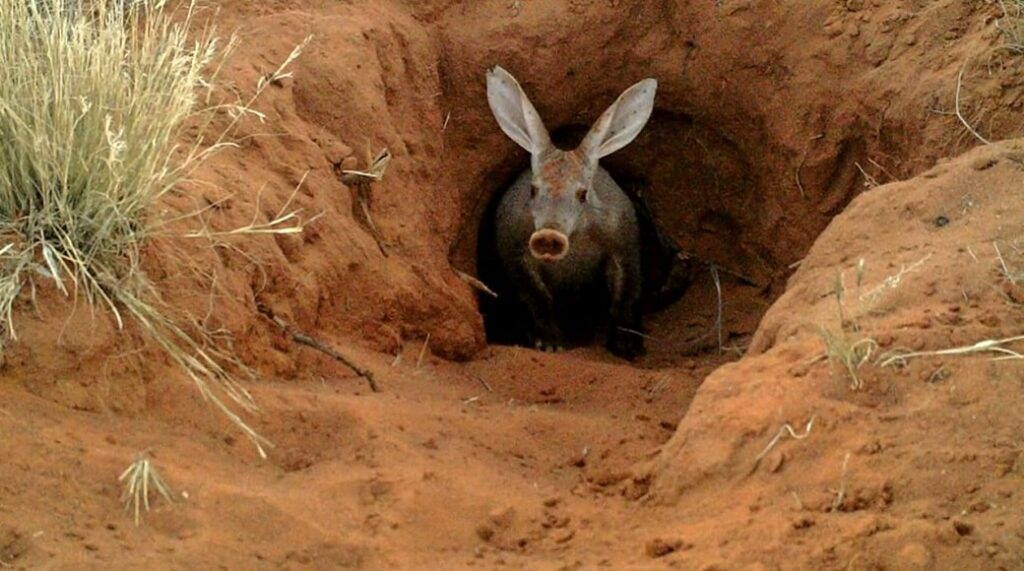
The aardvark, a solitary and nocturnal mammal, inhabits various environments across sub-Saharan Africa, ranging from Senegal to South Africa. These environments include savannas, woodlands, and grasslands, but aardvarks avoid overly arid or rocky areas which hinder their burrowing activities. With a distinctive appearance characterized by a long snout, large ears, and a robust body covered in coarse hair, aardvarks are uniquely adapted to their lifestyle.
They primarily consume ants and termites, using their sharp claws and long, sticky tongues to extract these insects from nests. Despite facing threats from habitat loss, human-wildlife conflict, and climate change impacts on their food sources, aardvarks are listed as “Least Concern” by the IUCN, though their populations are noted to be decreasing. This status emphasizes the importance of ongoing monitoring and conservation efforts to ensure their survival. Curious for more? Read the full article here!
Aardwolf
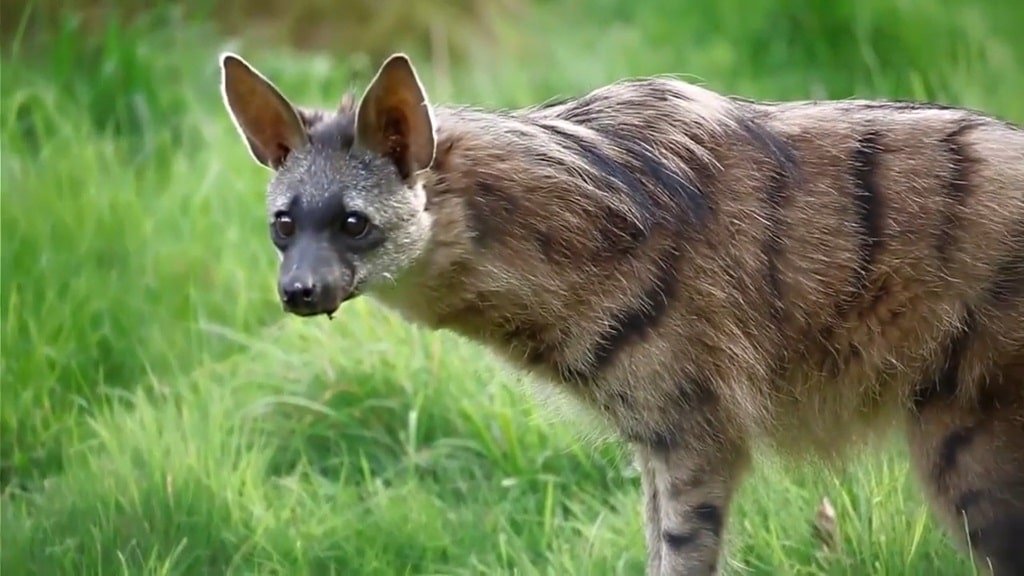
The aardwolf, residing predominantly in the savannas, shrublands, and grasslands of Southern and East Africa, avoids densely forested or desert areas. This creature is distinguished by its yellowish fur with black stripes and a mane that can be raised to appear larger when threatened. A specialized insectivore, the aardwolf primarily consumes termites, particularly from the Trinervitermes genus, using its long, sticky tongue to lap them up without destroying their mounds. This feeding strategy ensures a continual food source.
Aardwolves are nocturnal, though they may exhibit diurnal activity during colder months to conserve heat. Their conservation status is currently listed as “Least Concern” by the IUCN, largely due to stable population levels across their natural habitat, though they face threats from habitat loss and periodic droughts, which diminish their food supply. Despite these challenges, aardwolves are often appreciated by farmers for their role in controlling pest populations, particularly termites that can damage crops.
Abyssinian
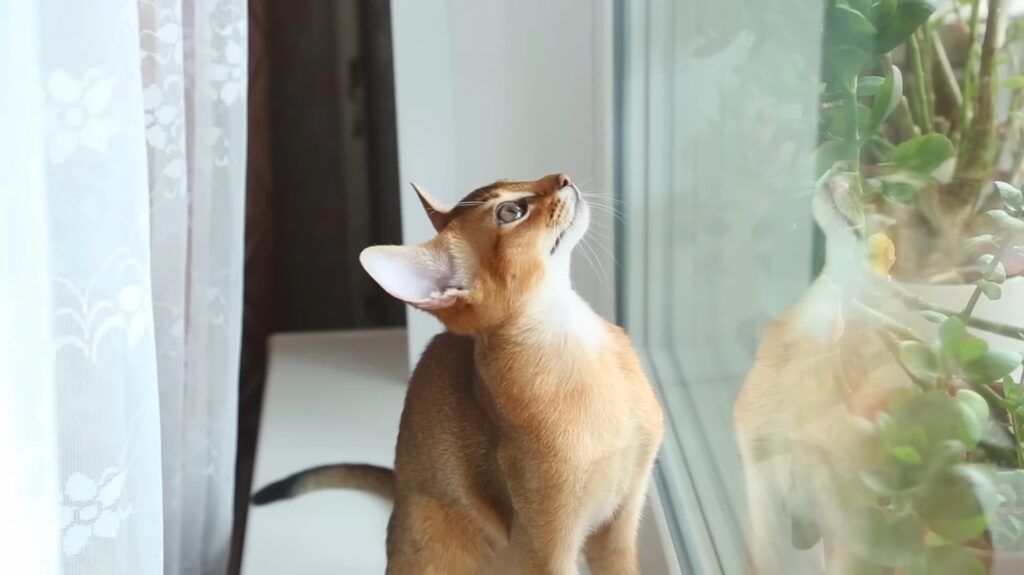
The Abyssinian cat, known for its sleek, muscular build and distinctive ticked coat, is a medium-sized breed with fine bone structure, pronounced by almond-shaped eyes in hues of green, gold, copper, or hazel. These cats exhibit a range of coat colors, including ruddy, red, and blue, and require minimal grooming due to their short, dense fur. Originally believed to have come from the coastal regions of the Indian Ocean and Southeast Asia, Abyssinians were named after Abyssinia (modern-day Ethiopia), where the first cats of this breed were supposedly imported into Europe.
Highly social and interactive, Abyssinians thrive on human companionship and are known for their playful and curious nature, often described as the clowns of the cat kingdom. While generally healthy, they are predisposed to conditions like renal amyloidosis and progressive retinal atrophy, making regular veterinary visits essential. These cats are well-adapted to family life, demanding interaction and providing affection, making them a cherished breed among cat enthusiasts globally.
Abyssinian Guinea Pig
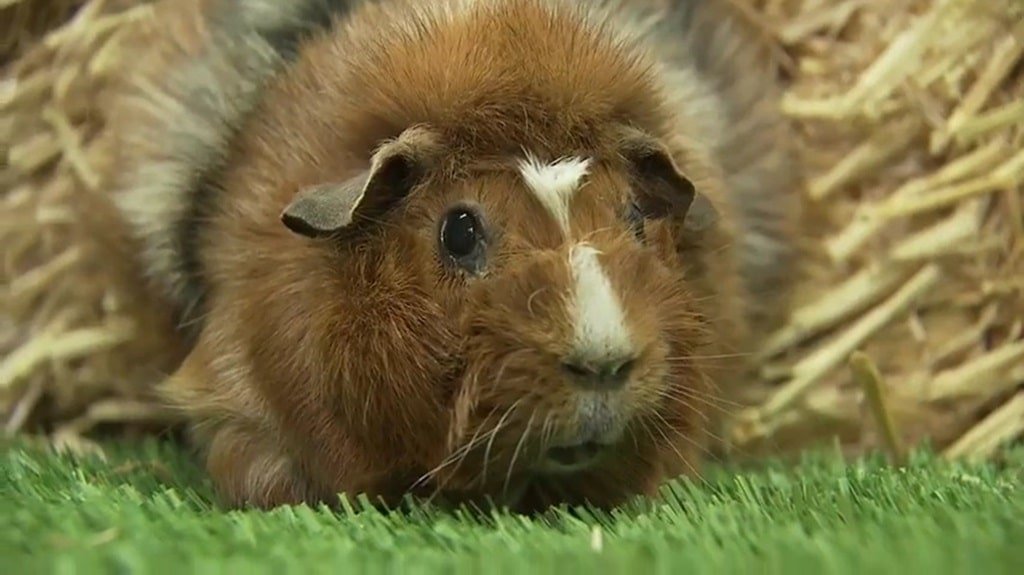
The Abyssinian guinea pig is a breed known for its distinctive appearance characterized by a rough coat with unique swirls called rosettes. Originally from South America, these guinea pigs are among the oldest of the breeds and were popular in Victorian England for exhibitions. They thrive in social environments, preferring the company of other guinea pigs, and are known for their friendly and outgoing nature, making them excellent pets for families.
Abyssinians require a diet predominantly made up of hay, supplemented with vitamin C-fortified pellets and fresh vegetables to ensure proper nutrition. They are relatively easy to care for but do require regular grooming to manage their distinctive coats. Owners should provide a spacious cage with solid flooring to avoid injuries, and include various toys and hideouts to support their active lifestyle. While Abyssinian guinea pigs are not endangered, responsible pet ownership and breeding practices are important to maintain their health and welfare.
Acadian Flycatcher
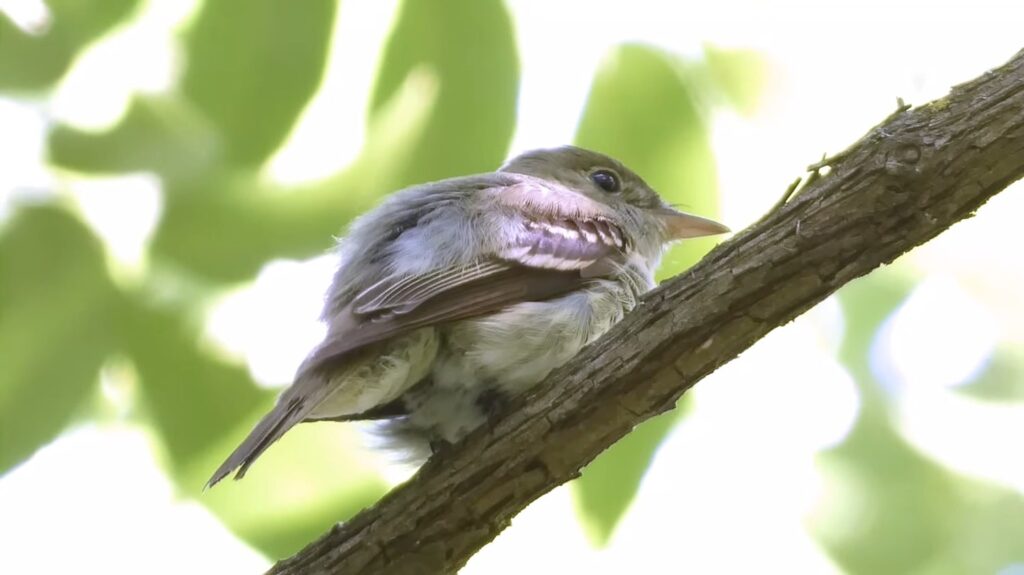
The Acadian Flycatcher, a small songbird identified by its olive-green upperparts, pale underparts, and distinctive white eye-ring, is native to the eastern United States and migrates to Central and South America during winter. This bird, which prefers mature, undisturbed deciduous forests often near water bodies like streams or swamps, is recognized for its explosive “peet-sa” song and is an adept insect hunter, catching prey mid-flight using hawking techniques or picking them off foliage while hovering.
Despite its relatively stable population, the Acadian Flycatcher, one of the animals starting with A, faces threats from habitat loss and changes in forest composition due to human activity, which are significant concerns for its conservation.
Achrioptera Manga
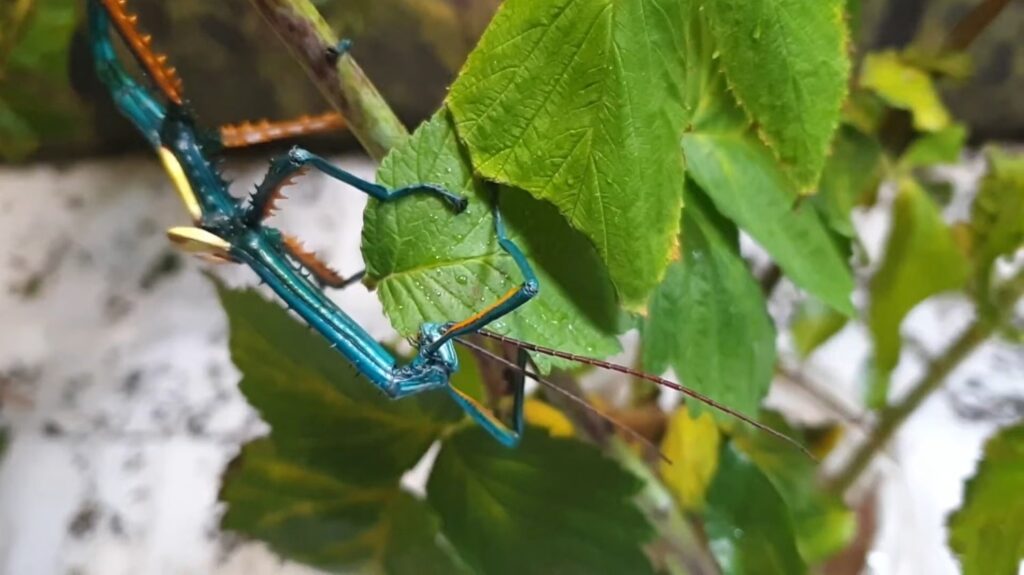
The Achrioptera manga is a striking species of stick insect found only in the northern forests of Madagascar, specifically in the Montagne des Français and Foret d’Orangea. This species is noted for its vivid coloration and sexual dimorphism; males display a bright blue color, while females are generally brown, aiding their camouflage in natural surroundings. Both sexes are relatively large, with males reaching about 13-14.5 cm in length and females growing even larger, up to 20-24 cm.
These insects are primarily active during the day and feed on a variety of local plants, including bramble, oak, and eucalyptus. Despite their limited range, these areas have become protected, which helps conserve their habitat. The Achrioptera manga, with its distinctive appearance and behaviors, highlights the unique biodiversity of Madagascar.
Ackie Monitor
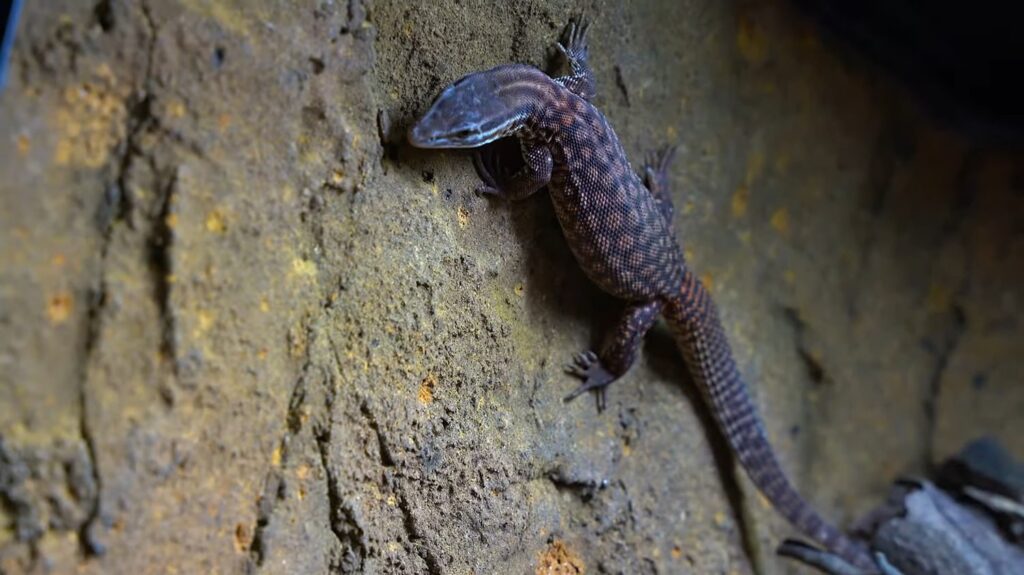
The Ackie Monitor, known scientifically as Varanus acanthurus, is a small monitor lizard native to the arid regions of northern Australia. Characterized by a distinctive spiny tail and vibrant colors ranging from red to orange, these lizards are relatively small, reaching about two to three feet in length. They thrive in hot, dry habitats such as deserts and scrublands, where they utilize rock crevices for shelter and temperature regulation. Ackie Monitors are diurnal and primarily feed on insects and small vertebrates.
Known for their curious and docile nature, they are popular in the pet trade. Adequate care in captivity includes a spacious enclosure with a temperature gradient, UVB lighting, and a diet supplemented with essential nutrients to mimic their natural predatory lifestyle.
Addax
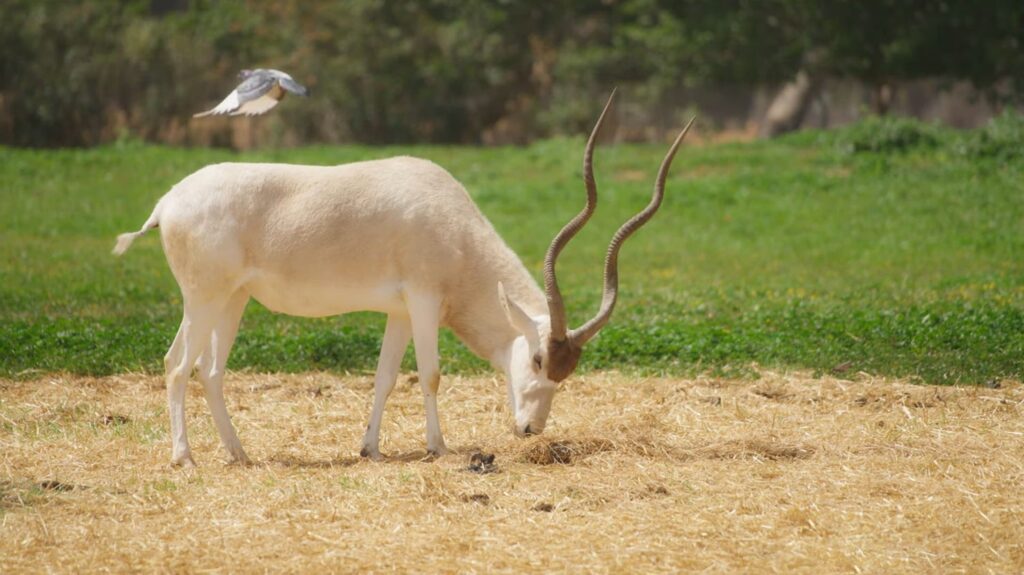
The Addax, also known as Addax nasomaculatus, is a critically endangered species of antelope native to the Sahara Desert. This species has adapted remarkably to desert life, able to survive in harsh, arid conditions with limited water, as it obtains moisture from the plants it consumes. The Addax features a striking pale coat that changes color with the seasons and long, twisted horns found in both males and females.
Historically widespread across North Africa, its population has dramatically declined due to uncontrolled hunting, habitat loss, and disturbances from industrial activities like oil exploration. Current estimates suggest fewer than a hundred individuals remain in the wild, primarily in Niger’s Termit & Tin Toumma National Nature Reserve. Conservation efforts are in place, focusing on habitat protection and captive breeding programs aimed at reintroduction.
Adélie Penguin
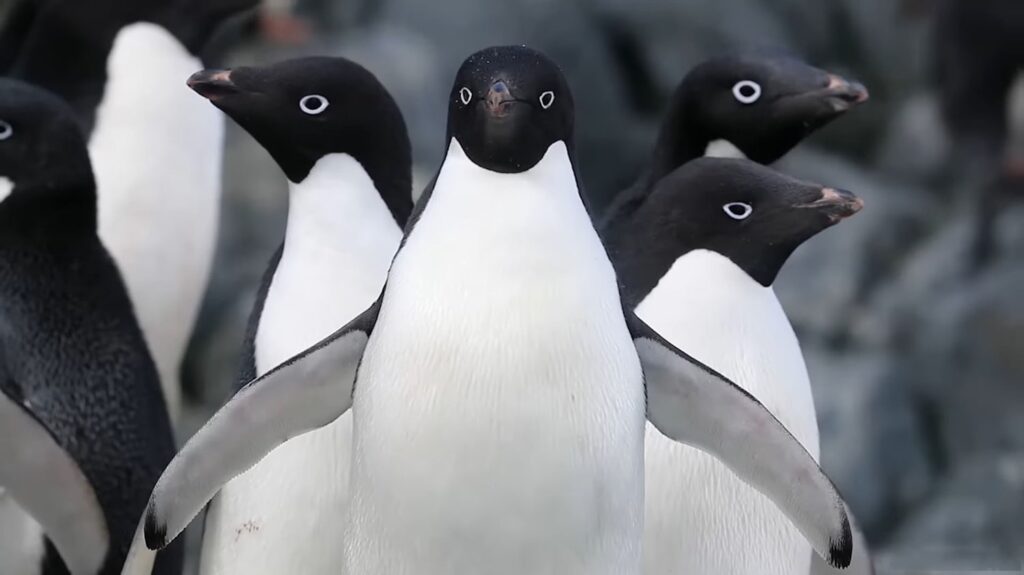
The Adélie penguin, scientifically named Pygoscelis adeliae, is a resilient bird native exclusively to the Antarctic coast and surrounding islands. This species is distinguished by its black head, throat, upper parts, and a white belly, with a striking white ring around its eyes. Adults typically measure between 70 to 73 cm in height and weigh between 3.8 to 8.2 kg, with females generally smaller than males.
The Adélie penguin thrives in harsh Antarctic conditions, breeding on ice-free land despite the predominantly ice-covered landscape. Their diet mainly consists of krill, fish, and squid, which they are adept at hunting, often diving up to 180 meters. While currently listed as “Least Concern” by conservation statuses, their populations in regions affected by climate change have seen significant declines, underscoring the ongoing threats of environmental changes and the need for continued conservation efforts.
Admiral Butterfly
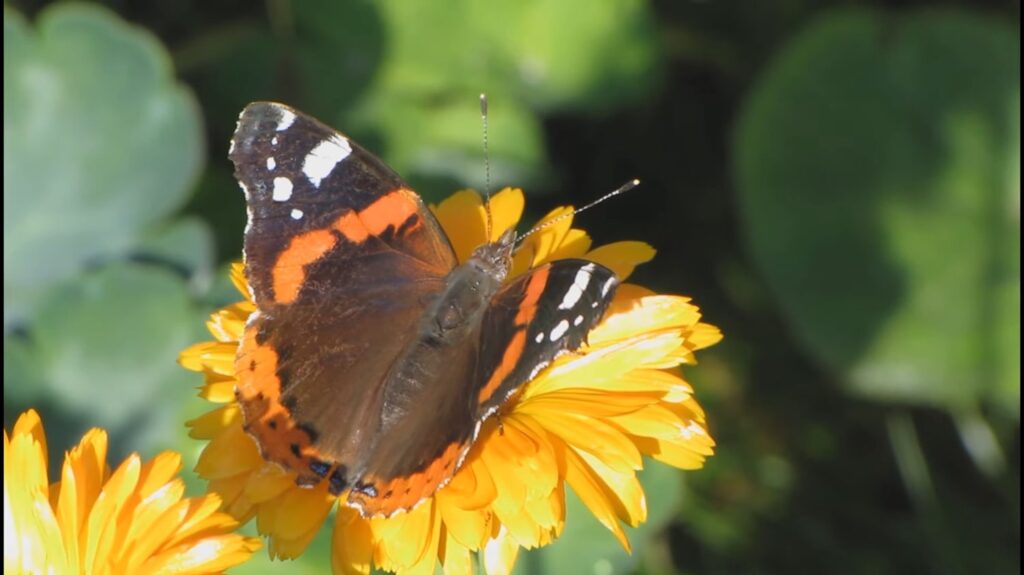
The Admiral Butterfly, encompassing several species within the genera Limenitis and Vanessa, is recognized for its vivid and distinctive wing patterns. These butterflies are widespread, found across temperate regions of North America, Europe, and Asia, inhabiting environments ranging from woodlands and meadows to tropical highlands. The most familiar among these, the Red Admiral (Vanessa atalanta), showcases black wings with striking red-orange bands and white spots, adapting to various climates by migrating to suitable habitats during colder months.
Although not currently evaluated by the IUCN, the Admiral Butterfly is considered to have stable populations in many parts of its range. This stability is attributed to its adaptability to diverse environments and its role as a pollinator, contributing positively to ecosystems by feeding on nectar and helping in plant pollination.
Aesculapian Snake
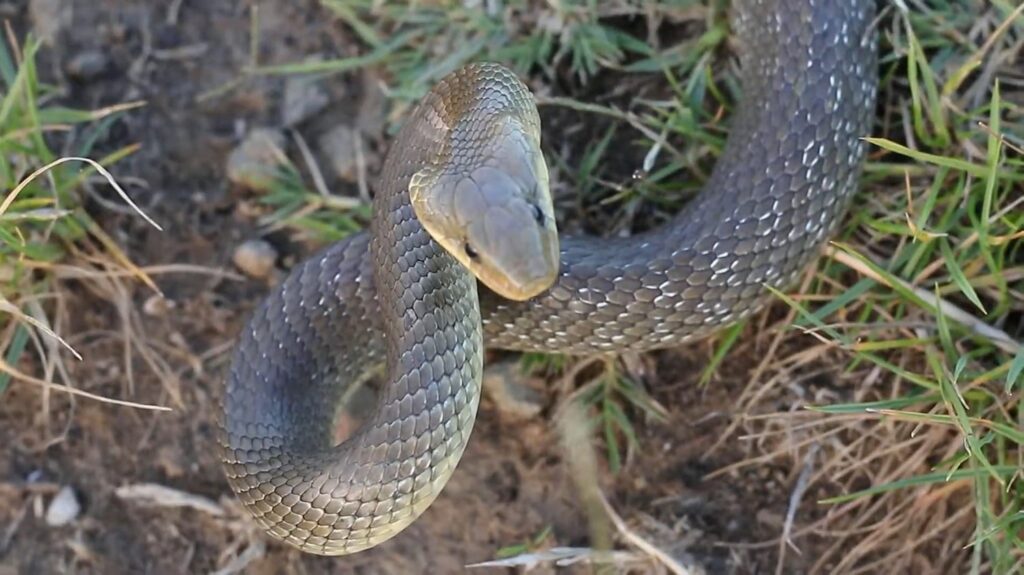
The Aesculapian Snake, known scientifically as Zamenis longissimus, is a non-venomous species native to a wide range of Europe and parts of western Asia. It thrives in forested, moderately humid, hilly, or rocky areas, showing a preference for habitats that provide ample cover and sun exposure, such as broadleaf forests along river valleys. Distinguished by its smooth scales and a metallic sheen, the Aesculapian snake can exhibit colors ranging from olive yellow to brownish-green, often featuring a pattern of white-edged scales. This snake can grow up to 2 meters in length, making it one of the largest snakes in Europe.
Aesculapian snakes are solitary and diurnal, often seen basking on rocks or climbing trees. They are adept climbers and can be found at high altitudes in montane regions during the summer months. Their diet primarily consists of small mammals like rodents, but they also consume birds, eggs, and nestlings. These snakes are oviparous, laying eggs that hatch independent, fully formed young. Currently listed as “Least Concern” by the IUCN, the Aesculapian snake faces threats from habitat loss and road mortality.
Affenpinscher

The Affenpinscher, originally from Germany, is known for its distinct appearance and lively personality. This small dog, standing about 9 to 11.5 inches tall and weighing 7 to 10 pounds, has a wiry coat in colors like black, silver, and red with a black mask. They are part of the “Pinschers and Schnauzers” group and are not classified as terriers. Known for being fearless, friendly, and somewhat stubborn, Affenpinschers are affectionate towards family but can be territorial about their belongings.
Their care involves regular grooming due to their coat type, and they are prone to certain health issues such as hip dysplasia and dental problems. While they don’t require excessive exercise, daily activity is necessary to keep them happy and healthy. They typically live for 12 to 15 years and are considered a hypoallergenic breed.
Afghan Hound

The Afghan Hound, originally bred in the harsh, mountainous regions of Afghanistan, is renowned for its distinct, elegant appearance characterized by a long, silky coat and a regal posture. This breed comes in various colors including black, cream, and red, often adorned with a characteristic facial mask. Known for their independence and dignified demeanor, Afghan Hounds were historically used for hunting due to their exceptional speed and agility across rugged terrains. Today, they are primarily kept as companion animals, valued for their loyalty and affection towards their families, though they maintain a reserved nature.
Regular grooming and exercise are crucial for their well-being, given their luxurious coat and active lifestyle. Recognized by major kennel clubs, the Afghan Hound, one of the animals that start with A, is a popular participant in dog shows around the world. While there are no specific conservation issues affecting this breed, responsible breeding practices are important to maintain their health and genetic diversity.
African Bullfrog
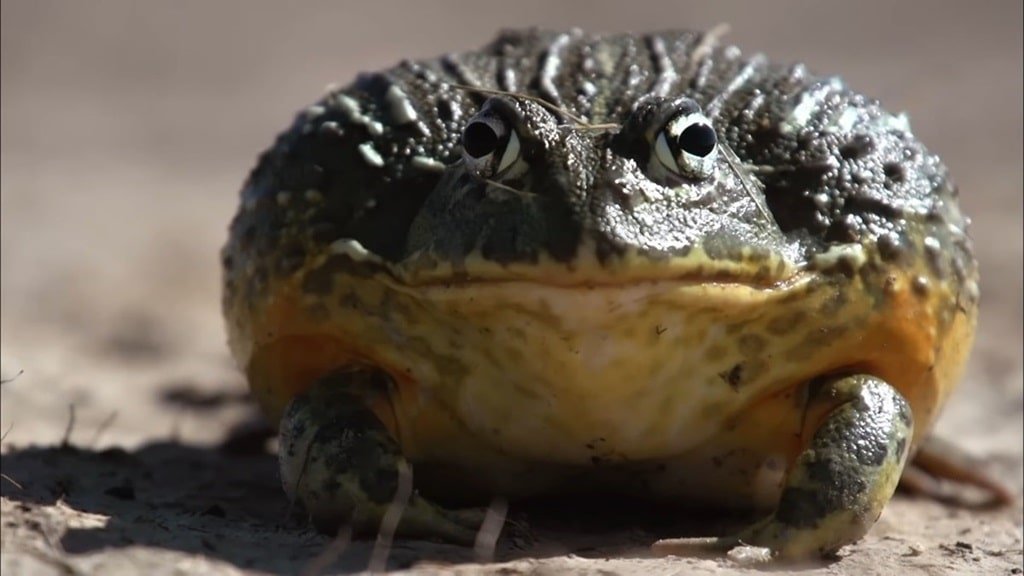
The African Bullfrog, or Pyxicephalus adspersus, is a robust amphibian native to sub-Saharan Africa, spanning a range of habitats from savannas and grasslands to more arid deserts. Recognizable for its size, the male can grow up to 10 inches and weigh over 4 pounds, making it one of the largest frogs in the region. Unlike most frog species where females are larger, in African Bullfrogs, the males are significantly bigger. They are generally olive green with a yellow or orange throat and possess a unique physical adaptation – odontodes or tooth-like structures on their lower jaws, which aid in gripping their prey.
These amphibians are known for their solitary nature, becoming social only during the breeding season which is triggered by heavy rains. Their reproductive process is notable; females can lay thousands of eggs in temporary water bodies created by the seasonal rains. Males are protective, often guarding the eggs from predators, although they can also exhibit cannibalistic behavior towards their tadpoles if environmental conditions necessitate.
Despite their fierce demeanor, African Bullfrogs are considered of “Least Concern” by conservation status but face risks from habitat destruction and the pet trade. Their ability to burrow and enter a state of dormancy helps them survive in changing and harsh climates. They are also known to be voracious eaters, consuming almost anything that fits into their large mouths, from insects to small mammals.
African Bush Elephant
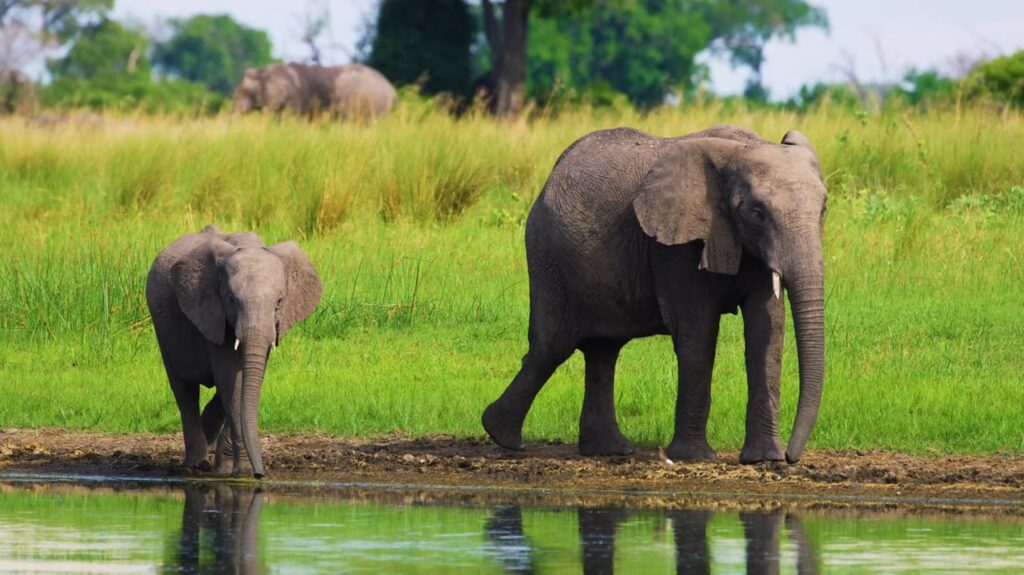
The African Bush Elephant, scientifically known as Loxodonta africana, is the largest land animal, distributed across 37 countries in Sub-Saharan Africa. These elephants are found in diverse habitats including forests, grasslands, and woodlands, and even arid deserts and wetlands, indicating their adaptability to different environments. Characteristically, they have large ears, which help regulate their body temperature, and long tusks, which are unfortunately coveted for ivory. Males are significantly larger than females, often reaching up to 3 meters at the shoulder and weighing as much as 6,100 kg.
Currently, the African Bush Elephant is classified as Endangered on the IUCN Red List, primarily due to habitat loss and poaching for ivory. These elephants play a crucial ecological role, such as aiding in the dispersal of seeds which helps maintain forest and savanna ecosystems. Despite international efforts to protect these majestic animals, challenges such as illegal ivory trade and human-elephant conflict continue to threaten their survival. Conservation strategies include anti-poaching patrols, habitat restoration, and initiatives to mitigate human-wildlife conflicts.
African Civet
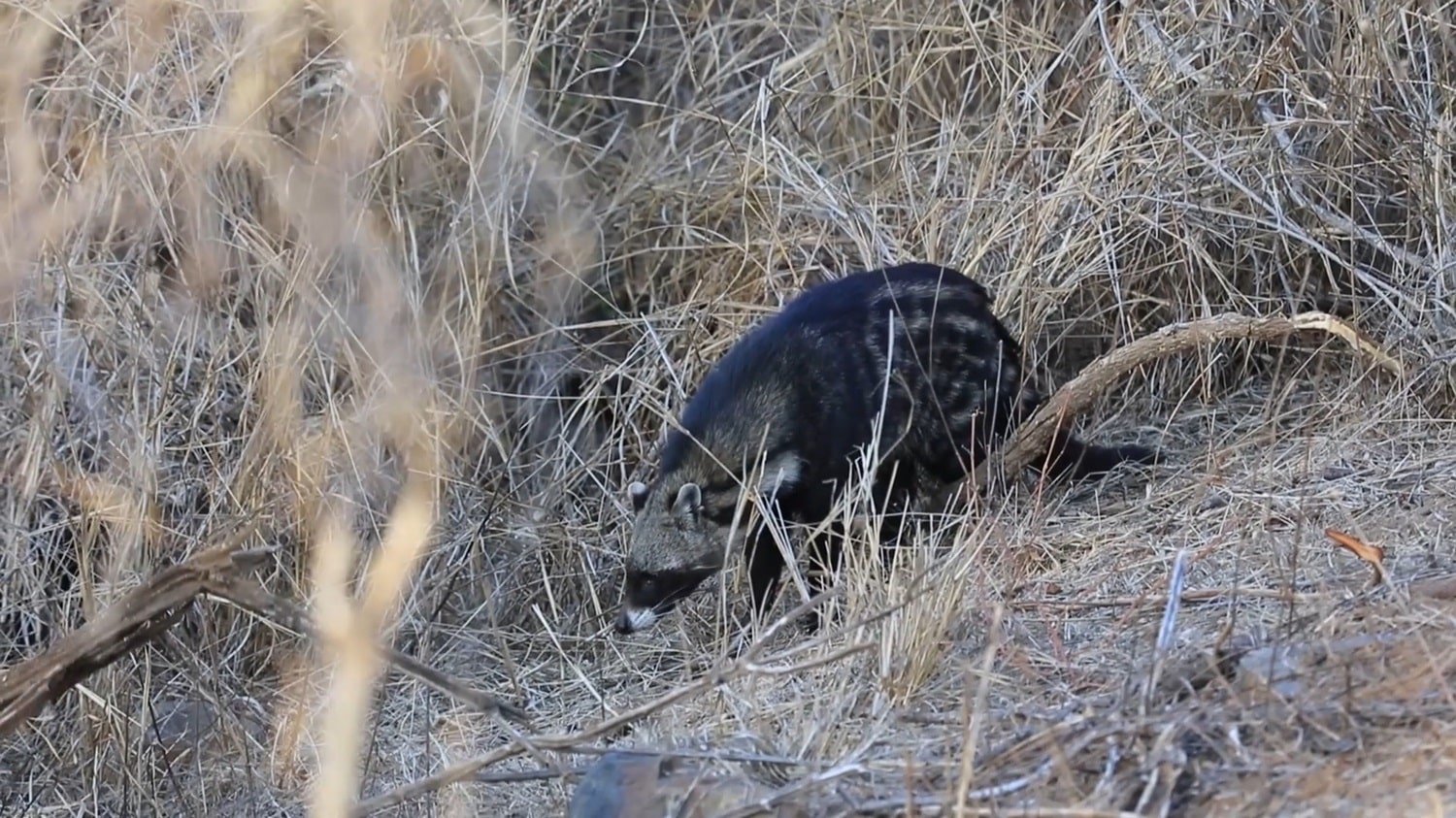
The African Civet, Civettictis civetta, is widespread across sub-Saharan Africa, inhabiting a variety of environments including forests, savannahs, and shrublands, often near water sources. It is recognized for its distinctive black and white patterning, coarse fur, and a prominent dorsal crest which erects when threatened. Notably, it possesses perineal glands that produce civetone, a compound used in perfumery. Currently, the African Civet is listed as “Least Concern” on the IUCN Red List, indicating it is not immediately threatened with extinction, although local declines due to habitat destruction and hunting have been noted.
African Clawed Frog
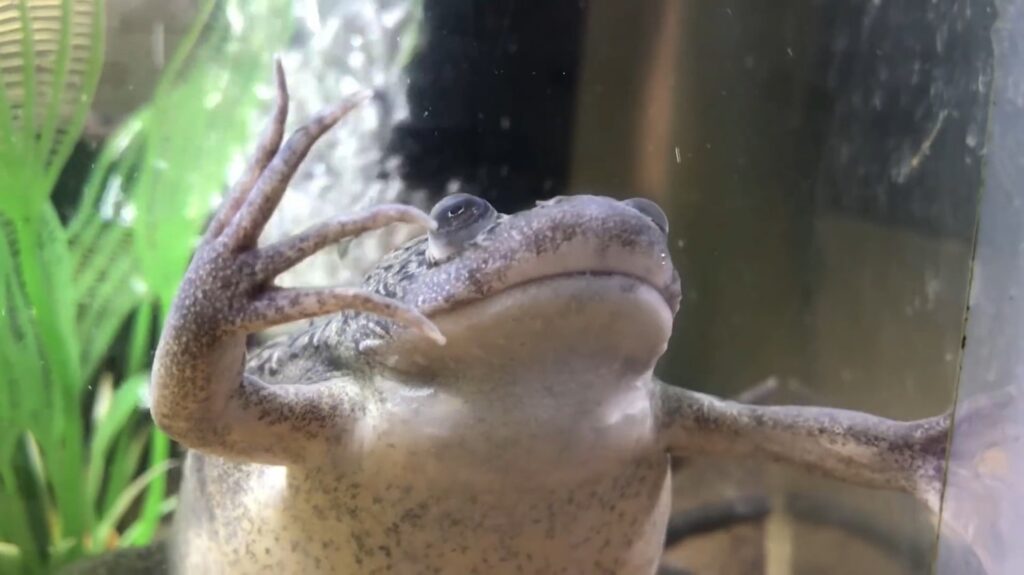
The African Clawed Frog (Xenopus laevis), native to Sub-Saharan Africa, is a fully aquatic species thriving in stagnant ponds and slow-flowing rivers, often in areas with lush algae but no higher vegetation. This species exhibits a unique appearance with a flattened body, small wedge-shaped head, and notable lack of a visible ear and tongue. It possesses claw-like structures on its hind feet, used to tear apart food.
The frogs are predominantly olive-gray with mottled patterns aiding in camouflage. Despite being widespread across its native range, it has also become an invasive species in various global locations due to its release from aquariums and laboratories. It is currently listed as Least Concern by the IUCN but poses ecological threats in non-native habitats by outcompeting local species and spreading diseases.
African Fish Eagle
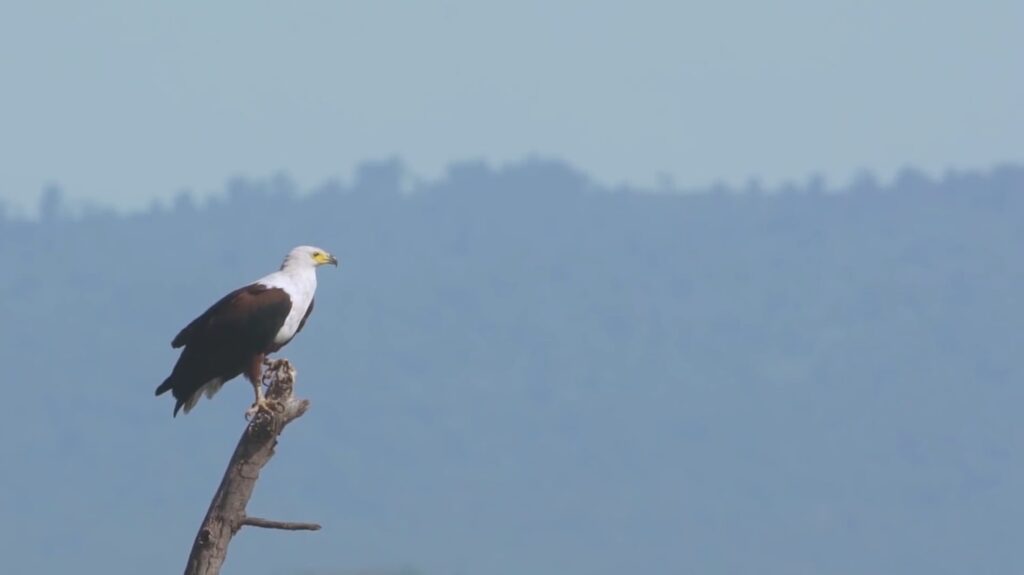
The African Fish Eagle (Haliaeetus vocifer) is widespread across sub-Saharan Africa, thriving near large bodies of freshwater like lakes and rivers, as well as some coastal areas. This majestic bird is easily recognized by its striking contrast of a white head against a mostly brown body and its powerful build. It has a broad wingspan ranging from about 2 to 2.4 meters, supporting its skilled hunting of fish, which it snatches from the water with sharp talons. While it primarily feeds on fish, it also preys on waterbirds and occasionally scavenges or engages in kleptoparasitism, stealing catches from other birds.
The African Fish Eagle is celebrated as a national symbol in multiple African countries and is currently listed as Least Concern by conservation statuses, though it faces threats from habitat destruction and pollution.
African Forest Elephant
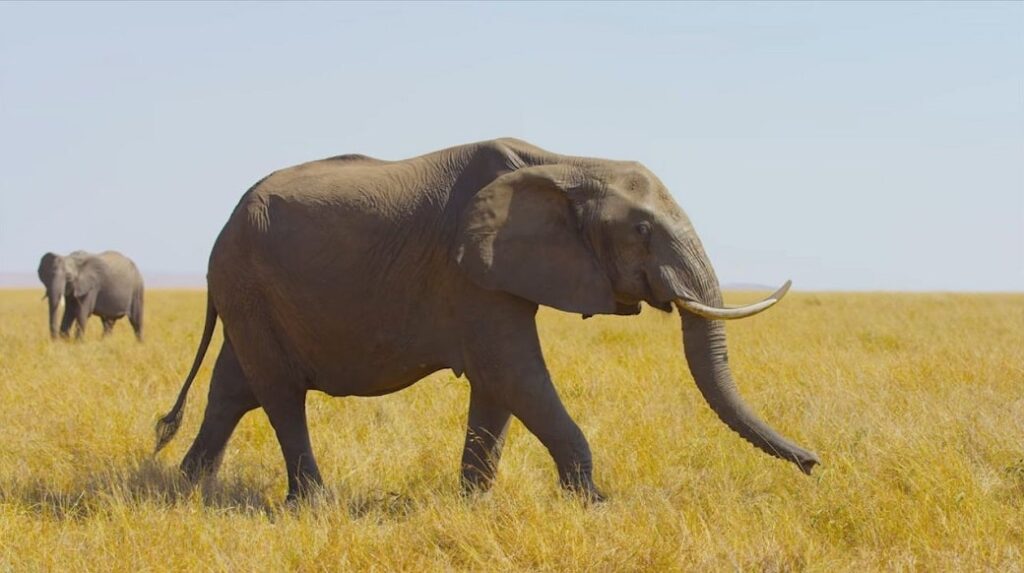
The African Forest Elephant, a distinct species from the African Savanna Elephant, inhabits the dense tropical forests across West and Central Africa, extending from Senegal east to the Democratic Republic of the Congo. Recognized for its smaller stature compared to its savanna counterpart, this elephant features straight, downward-pointing tusks and a rounded body covered in sparse hair.
Currently classified as Critically Endangered by the IUCN, the African Forest Elephant faces severe threats from poaching for ivory and habitat loss due to deforestation and human encroachment. Conservation efforts are vital to protect the remaining populations which are essential for maintaining forest biodiversity. Curious for more? Read the full article here!
African Golden Cat
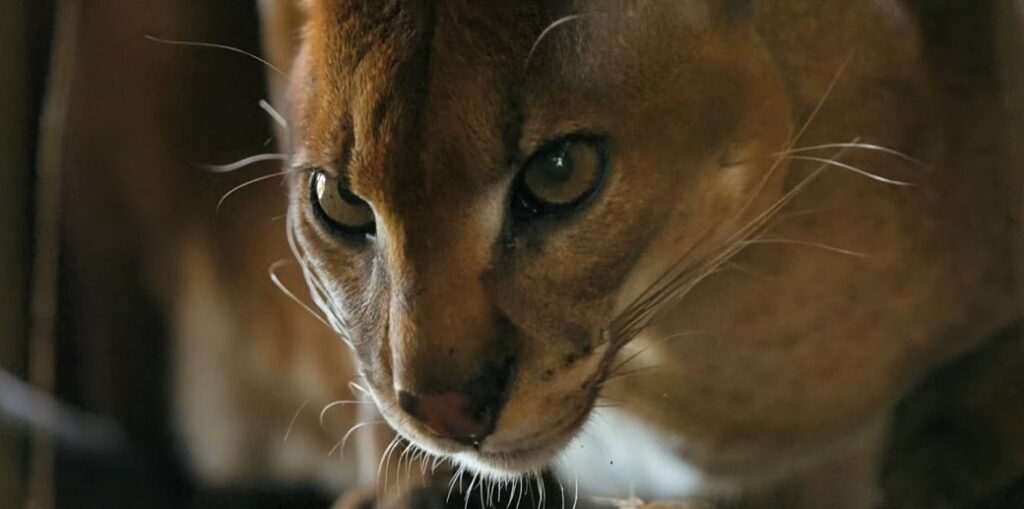
The African Golden Cat (Caracal aurata) is a medium-sized wild cat predominantly found in the dense rainforests and mountainous regions of West and Central Africa. These elusive cats are rarely seen due to their secretive nature and primarily solitary behavior. Their fur color varies widely from golden to reddish-brown, often with a pattern of spots or stripes, which provides camouflage in their natural habitat.
Classified as Vulnerable by the IUCN, the African Golden Cat faces significant threats from habitat loss due to deforestation, as well as from poaching and bushmeat hunting. Conservation efforts are crucial to understand and protect this species, which is still poorly known due to its reclusive lifestyle.Curious for more? Read the full article here!
African Grey Parrot
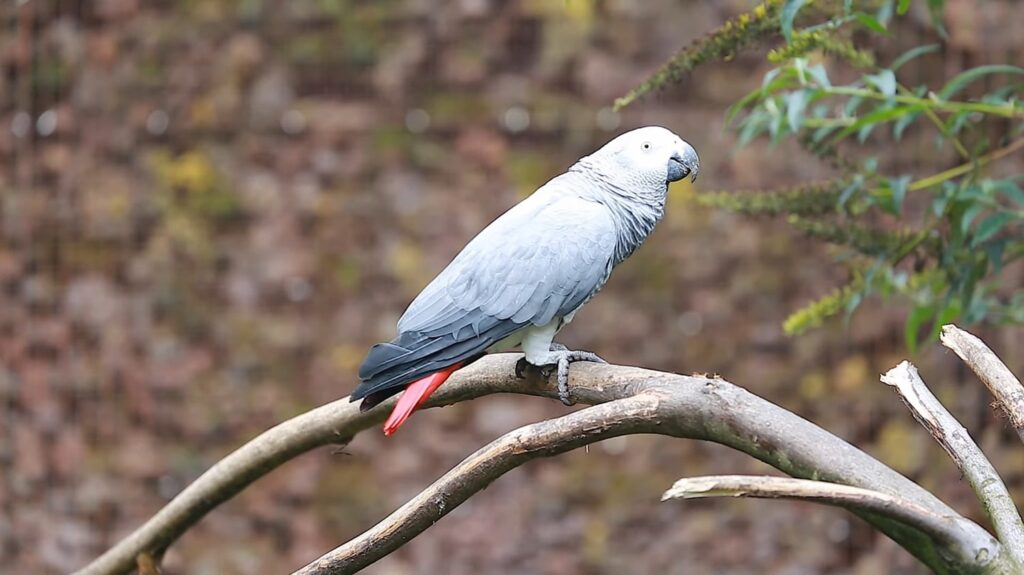
The African Grey Parrot, known for its striking appearance and high intelligence, is native to the dense forests and coastal mangroves of equatorial Africa, spanning from Côte d’Ivoire to Kenya. This medium-sized parrot is predominantly grey with a notable red tail, and adults typically exhibit a darker grey on the head and wings. Highly social, these parrots are often found in large flocks, though they form close bonds within smaller groups or pairs. Currently, the African Grey Parrot faces significant threats from habitat loss due to deforestation and the international pet trade, leading to its classification as an endangered species by conservation authorities.
African Jacana
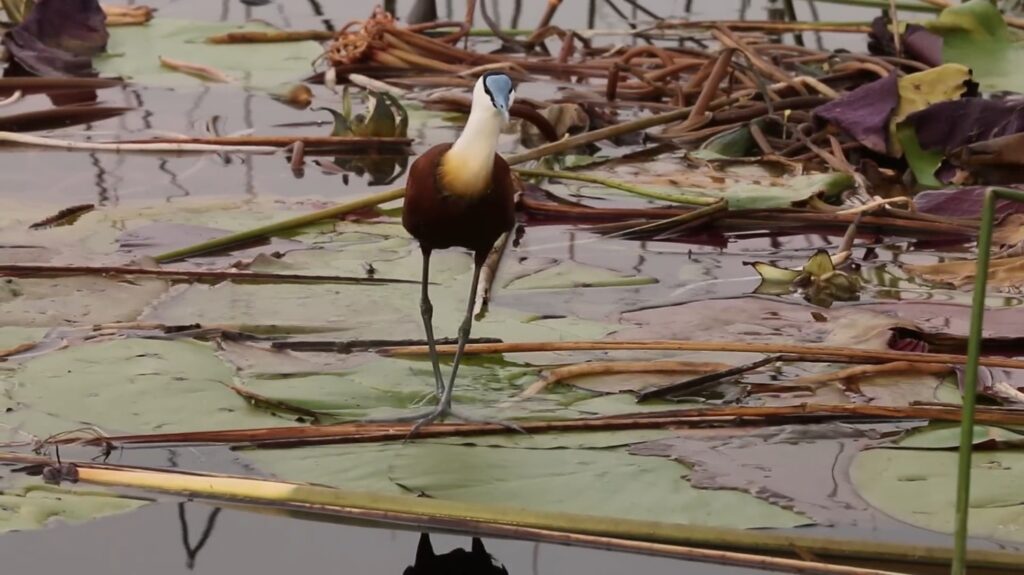
The African Jacana (Actophilornis africanus) is a distinctive wading bird native to sub-Saharan Africa, thriving in a range of wetland habitats such as shallow lakes and ponds covered in floating vegetation. These birds are recognized for their striking appearance with a chestnut plumage, a sky-blue bill, and exceptionally long toes that allow them to walk on floating plants.
African Jacanas, one of the animals that start with A, exhibit a unique breeding system where the larger females mate with multiple males, leaving them to incubate the eggs and raise the young. Classified as “Least Concern” by the IUCN, they are not currently at risk of extinction but do face challenges from habitat loss and environmental changes.
African Palm Civet
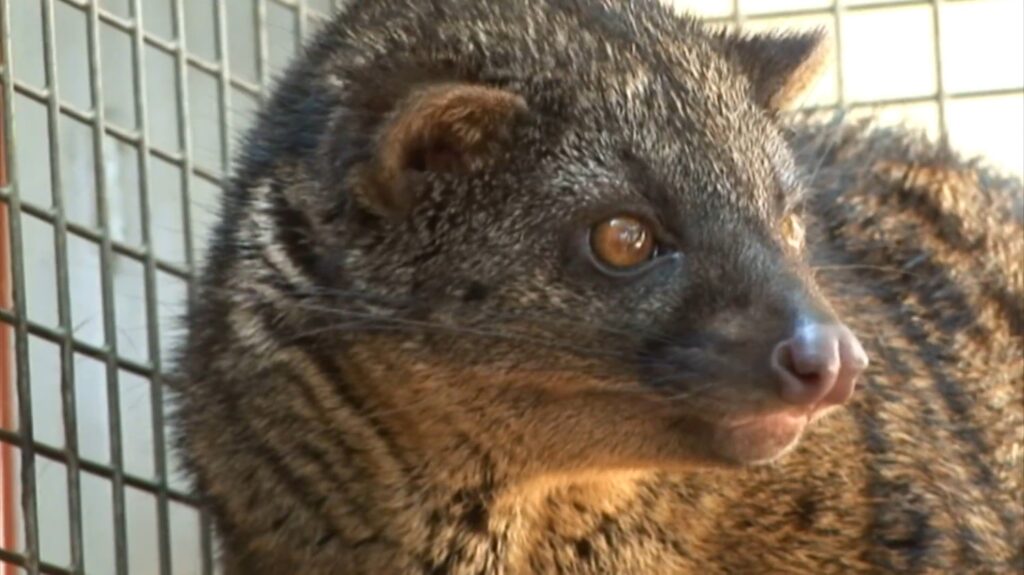
The African Palm Civet, also known as Nandinia binotata, is native to the tropical jungles and forests of sub-Saharan Africa, extending from Guinea to South Sudan and into eastern Zimbabwe. This small, nocturnal mammal is distinguished by its grey to dark brown fur with dark spots, a long ringed tail, and notable scent glands used for marking territory and mating. It thrives in various habitats, from rainforests to savanna woodlands. Despite its adaptability, the African Palm Civet, one of the animals that start with A, faces threats from habitat loss due to deforestation and bushmeat hunting, but it is currently classified as “Least Concern” on the IUCN Red List.
African Penguin
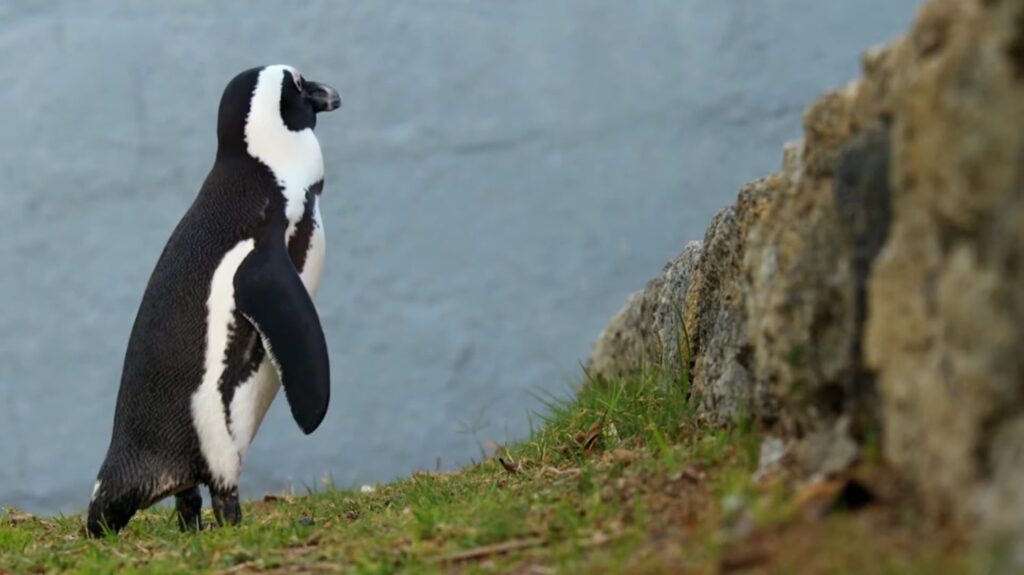
The African Penguin (Spheniscus demersus), also known as the Cape or Jackass Penguin, is a small to medium-sized bird native to the southern African coast, primarily found in South Africa and Namibia. This species is distinctive for its black-and-white plumage, which serves as camouflage in water—black on the back and white on the belly. The penguin’s face features a unique horseshoe-shaped, white stripe that extends from around the eyes to the chin. Juveniles have gray-blue feathers that darken as they mature.
African Penguins, one of the animals that start with A, live in coastal areas where they form large colonies on islands and mainland sites. They are adapted to life in the ocean, feeding primarily on fish like anchovies and sardines, supplemented by squid and crustaceans.
Despite their adaptation, the species is facing severe threats from overfishing, oil spills, and habitat destruction, contributing to a rapid decline in their populations. As of recent assessments, they are classified as Endangered, highlighting the urgent need for continued and effective conservation efforts to prevent further declines.
African Sugarcane Borer
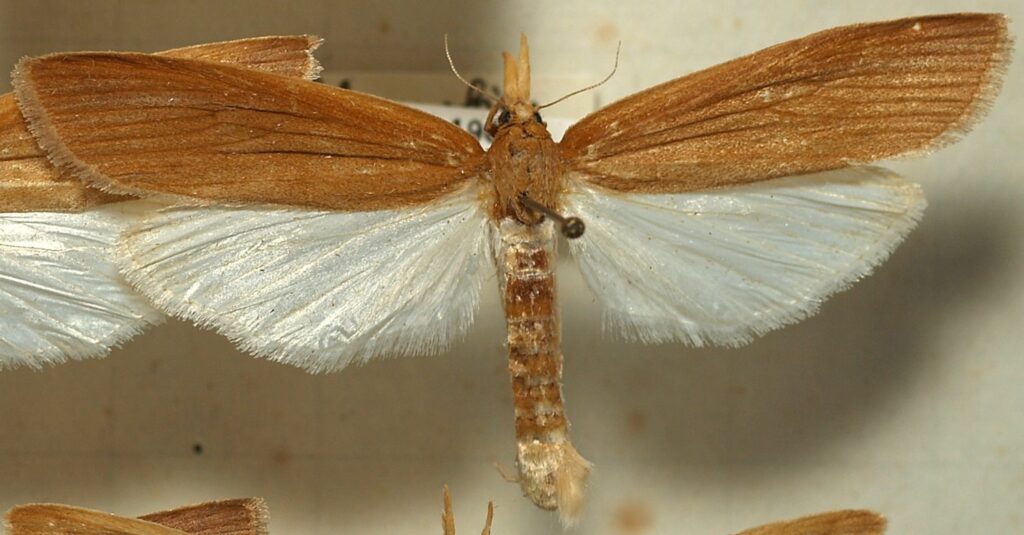
The African Sugarcane Borer (Eldana saccharina), native to sub-Saharan Africa, is a significant pest primarily affecting sugarcane crops. This small moth has a wingspan of about 35 mm and exhibits pale brown forewings with distinct dark spots. These borers are also found in other grass crops like maize and sorghum, indicating their adaptability and wide host range. The larvae are particularly destructive, boring into the stalks of young, succulent plants, which can lead to severe crop damage and economic losses.
Despite their pest status, they play a role in their ecosystems and are subject to natural control by predators like birds and parasitoid wasps. Their conservation status has not been formally evaluated, but they are of concern primarily in agricultural contexts due to their impact on crop yields.
African Tree Toad
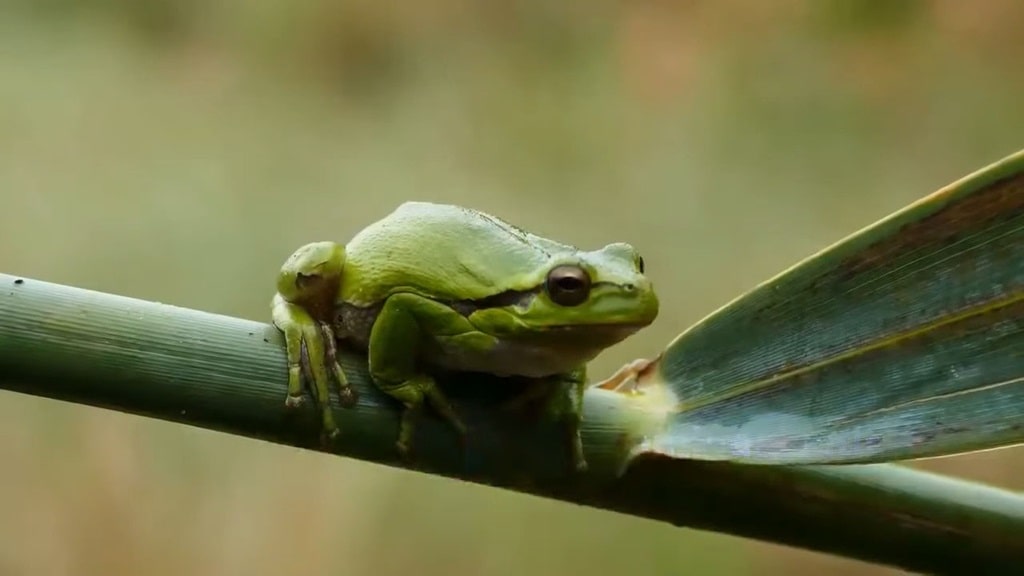
The African Tree Toad (Nectophryne afra), native to the tropical rainforests of Central and West Africa, thrives in moist, subtropical climates, typically residing on tree barks and among dense foliage. This toad is distinguished by its compact body and adhesive toe pads, which facilitate excellent climbing ability, essential for its arboreal lifestyle. Predominantly green or yellow-green in color, the African Tree Toad blends seamlessly with its environment, aiding in predator evasion. Although it is currently classified as “Least Concern” by the IUCN, it faces threats from habitat loss due to deforestation. Conservation efforts are crucial to maintain its population and the ecological balance of its habitat.
African Wild Dog
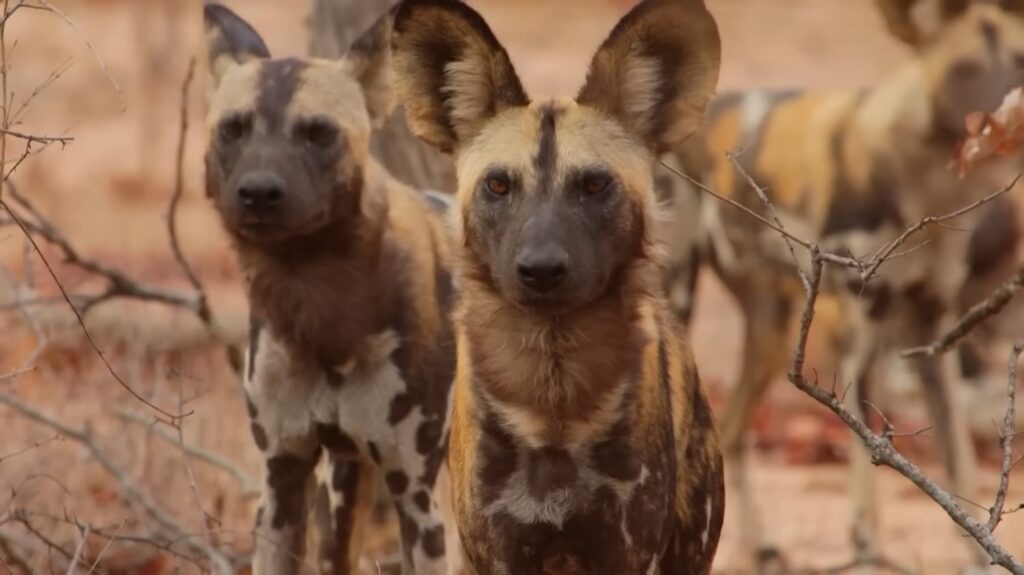
The African Wild Dog (Lycaon pictus), also known as the painted dog, inhabits various regions across sub-Saharan Africa, thriving in environments ranging from deserts and forests to grasslands. Recognized for its distinct, mottled coat of black, brown, red, yellow, and white, no two individuals have the same pattern, enhancing their uniqueness within the animal kingdom. These canids are highly social and intelligent, living in packs that exhibit intricate social behaviors and cooperative hunting techniques, often allowing them to have high success rates in capturing prey.
Currently listed as Endangered, African Wild Dogs face severe threats from habitat fragmentation, direct persecution, and diseases transmitted by domestic animals. Their populations are concentrated primarily in southern and eastern Africa, with ongoing conservation efforts focusing on habitat protection, community engagement, and mitigating human-wildlife conflict to stabilize and hopefully increase their numbers.
Africanized Bee
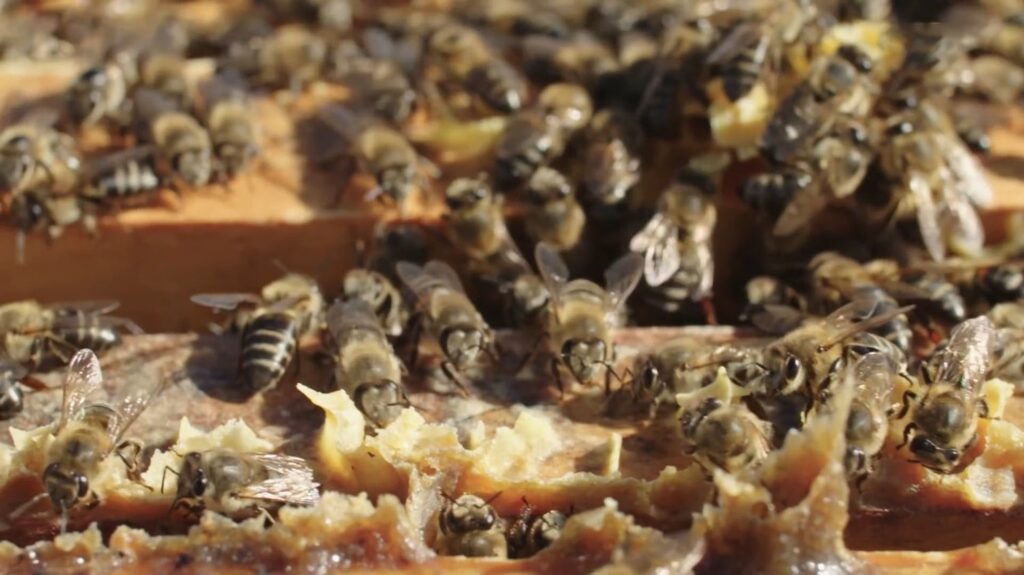
The Africanized bee, commonly known as the killer bee, is a hybrid of the African honey bee (Apis mellifera scutellata) and various European honey bee subspecies. Initially introduced to Brazil in the 1950s, these bees have since spread throughout South and Central America, reaching the southern United States. They thrive in warm and tropical climates but have also adapted to temperate zones and urban environments.
Africanized bees are slightly smaller than European honey bees and feature similar brown and yellow stripes. Known for their aggressive behavior, they defend their hives vigorously and swarm more frequently. Classified as an invasive species, they pose significant ecological challenges, particularly in regions with milder winters where they can establish colonies year-round.
Agama Lizard
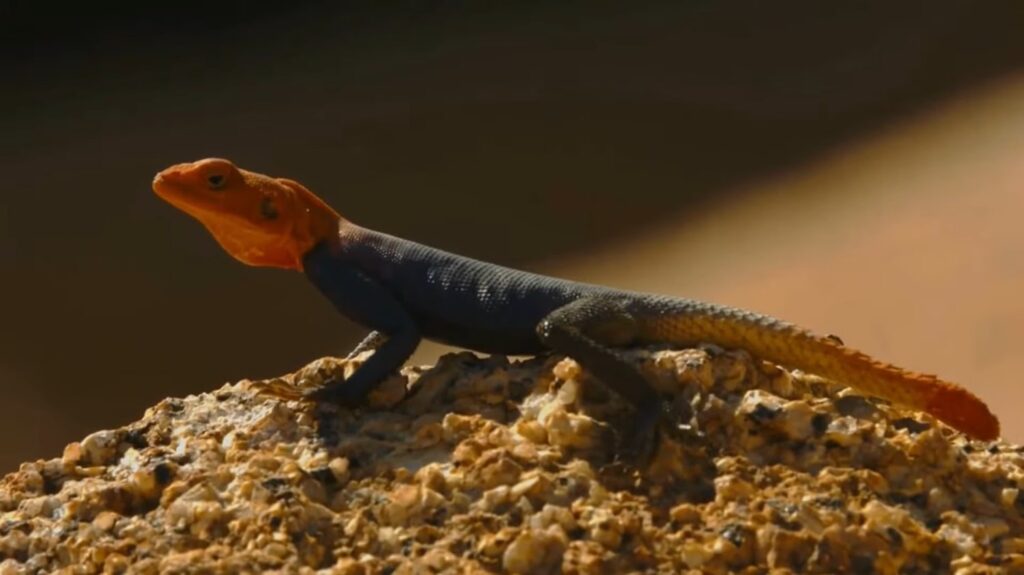
The Agama Lizard (Agama agama), also known as the common agama or rainbow agama, is native to sub-Saharan Africa and thrives in diverse habitats including deserts, savannas, and urban areas. These lizards are easily recognizable by their vibrant coloration, particularly in males which display bright red or orange heads and blue bodies during the breeding season. Adult agamas measure between 12 to 14 inches in length. They are insectivores, primarily consuming ants, grasshoppers, beetles, and termites. The Agama Lizard is not currently considered at risk, but habitat destruction and urbanization pose potential threats to their populations. These lizards are known for their territorial behavior and complex social structures within groups.
Agkistrodon Contortrix

The Agkistrodon contortrix, commonly known as the copperhead, is a venomous pit viper found throughout the eastern and central United States, from southern New England to Texas and as far south as northern Mexico. These snakes inhabit a variety of environments, including deciduous forests, rocky outcrops, swamps, and along streams. Recognizable by their distinctive hourglass-shaped bands on a tan to copper-colored body, copperheads typically grow between 50-95 cm in length. Despite their venomous nature, copperheads are not highly aggressive and their venom is relatively mild compared to other pit vipers. Classified as “Least Concern” by the IUCN, their populations are stable, though they face threats from habitat destruction and fragmentation.
Agouti
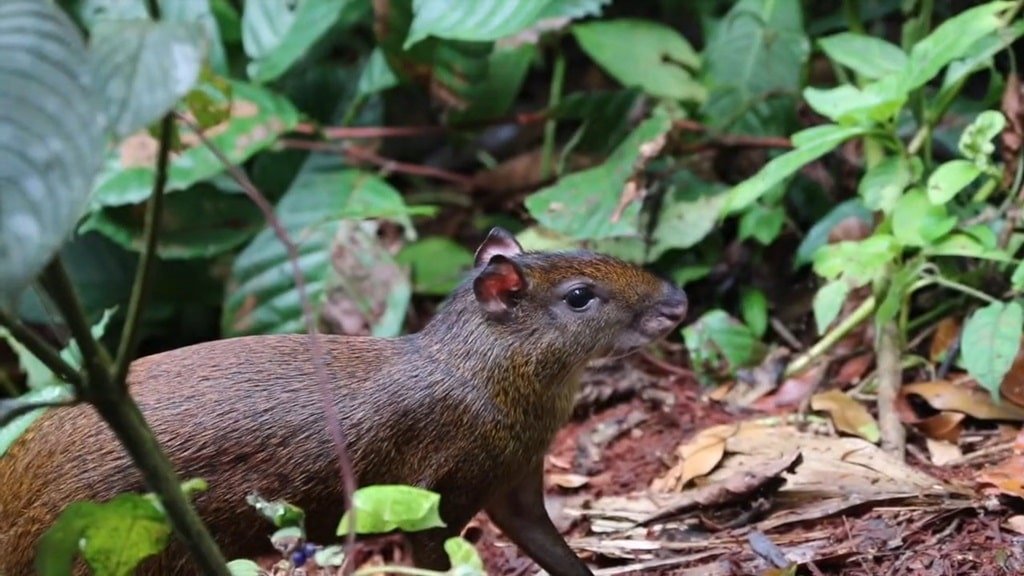
The Agouti, specifically the Red-rumped Agouti (Dasyprocta leporina), is native to the tropical regions of South America, including Brazil, Venezuela, Guyana, and surrounding areas. They inhabit various forest types, including rainforests and secondary forests, as well as savannas and agricultural areas near water.
Agoutis, one of the animals that start with A, are similar in appearance to guinea pigs but are larger, with a length of 19-25 inches and weighing 6.6-13 pounds. They have coarse, glossy fur, typically brownish with an orange-red rump. Classified as “Least Concern” by the IUCN, their population is stable, although they face threats from habitat destruction and hunting in some areas.
Aidi
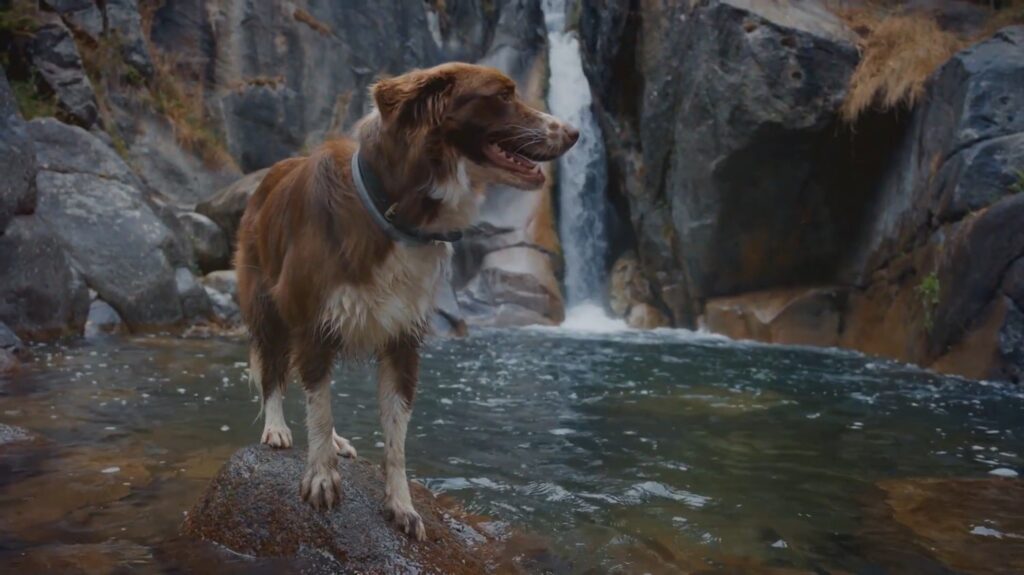
The Aidi, also known as the Atlas Mountain Dog, originates from the Atlas Mountains of North Africa, particularly Morocco. This breed is known for its role as a livestock guardian, protecting herds from predators. Aidis are medium-sized, standing 20-24 inches tall and weighing around 50-55 pounds. They have a thick, weather-resistant double coat, which can be white, black, pale red, or tawny, and a muscular build. Their distinctive features include a bear-like head, plumed tail, and high-set, slightly drooping ears. Aidis are not considered at risk and have no specific conservation status. However, maintaining responsible breeding practices is essential to preserve their health and working capabilities.
Ainu

The Ainu dog, also known as the Hokkaido dog, originates from the Hokkaido region of Japan. This breed thrives in the mountainous and forested areas of northern Japan, where it was traditionally used by the Ainu people for hunting large game such as bears and deer. The Ainu dog is medium-sized, standing 18-22 inches tall and weighing 45-66 pounds, with a thick double coat that comes in various colors including red, white, black, and brindle. Known for their bravery and loyalty, these dogs are excellent guard dogs and companions. Although not listed as endangered, the Ainu dog is considered a rare breed and efforts are made to preserve its lineage through responsible breeding practices.
Airedale Terrier
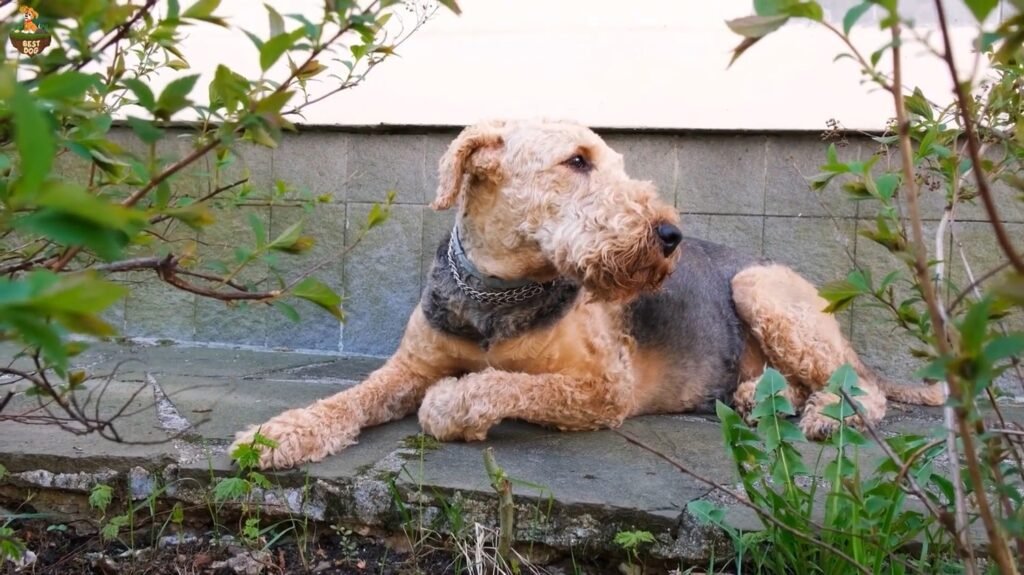
Terriers” due to its large size. This breed typically stands about 23 inches tall and weighs between 50 to 70 pounds. Airedales have a dense, wiry coat that is black and tan, with a distinct saddle pattern on their back. They are highly versatile, initially bred for hunting otters and rats and later utilized in various roles including military and police work. Airedales are energetic, intelligent, and require ample exercise and mental stimulation. They are generally healthy with a lifespan of 11-14 years, and while not endangered, they benefit from responsible breeding practices to maintain their vigor and temperament.
Airedoodle

The Airedoodle is a hybrid dog breed resulting from crossing an Airedale Terrier with a Poodle. This breed typically stands 22 to 26 inches tall and weighs between 40 to 60 pounds. Airedoodles have a curly or wavy coat, which can be hypoallergenic like the Poodle’s, and come in various colors including cream, black, grey, and reddish tones. They possess a distinct beard and mustache, reflecting their Airedale heritage. Known for their high energy levels, intelligence, and friendly nature, Airedoodles thrive in active households that provide ample exercise and mental stimulation. They are not listed as a threatened species, as they are a designer breed created for companionship.
Akbash
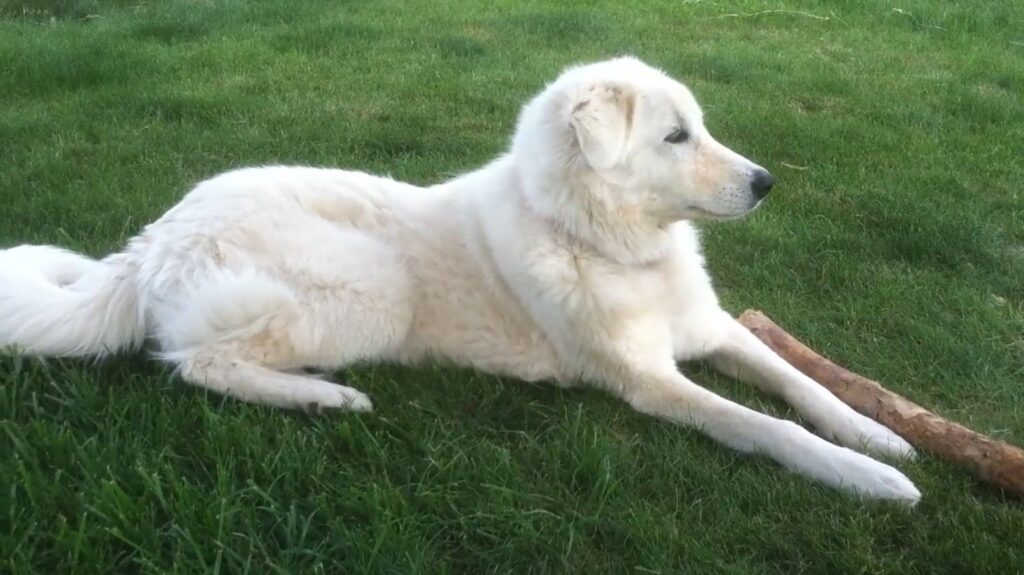
The Akbash is a large guardian dog breed originating from western Turkey, particularly the Anatolia region. These dogs are known for their white, double coats which can be medium to long in length. They have a distinct appearance with a wedge-shaped head, dark eyes, and a heavily feathered tail. Akbash dogs are primarily used to guard livestock, blending seamlessly with flocks due to their white coats. They thrive in rural habitats such as moors, valleys, and hillsides. Despite their long history as a working breed, they are currently not recognized by the American Kennel Club but are acknowledged by the United Kennel Club. Conservation efforts focus on maintaining their role as livestock guardians in their native regions.
Akita

The Akita is a large and powerful dog breed originating from Japan’s Akita Prefecture. It features a thick double coat, erect triangular ears, and a curled tail. Akitas are known for their loyalty, courage, and dignified appearance. They thrive in colder climates due to their dense coat but can adapt to moderate climates with proper care. These dogs were initially bred for hunting and guarding, and they remain popular as loyal and protective companions today. Akitas are not considered endangered, and responsible breeding practices help maintain their population and genetic diversity. Curious for more? Read the full article here!
Akita Shepherd
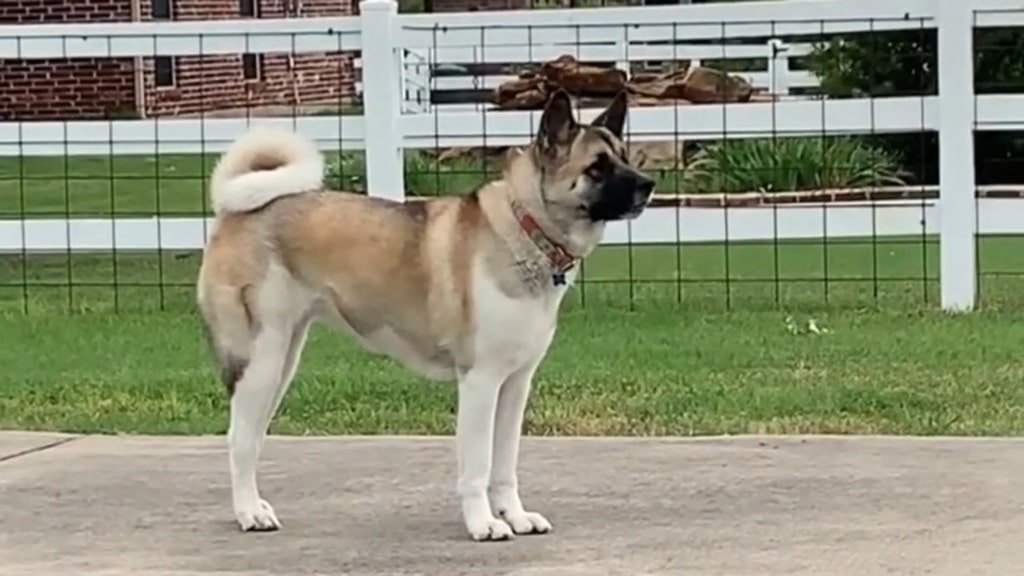
The Akita Shepherd is a hybrid breed resulting from the cross between an Akita and a German Shepherd. This breed is large and muscular, standing 24-28 inches tall and weighing 75-115 pounds. Akita Shepherds possess a thick double coat that can vary in color, including black, tan, fawn, and brindle. They are known for their protective nature, loyalty, and intelligence, making them excellent guard dogs and companions. They adapt well to various environments, from homes with yards to apartments, provided they receive adequate exercise. The Akita Shepherd is not considered endangered, and their population is growing, especially in the United States and Japan.
Alabai
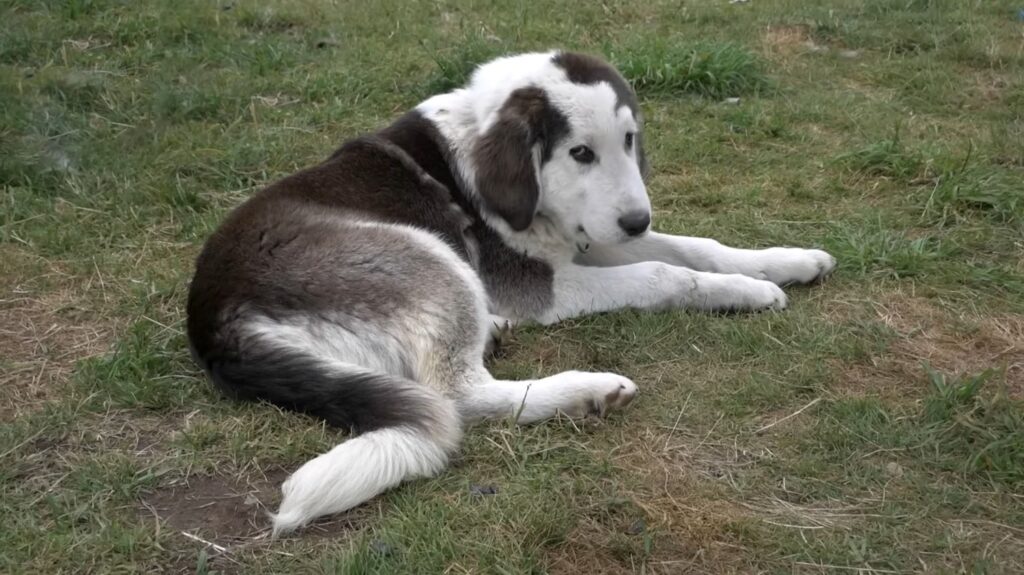
The Alabai, also known as the Central Asian Shepherd Dog, hails from the vast regions of Central Asia, including countries like Turkmenistan, Kazakhstan, Uzbekistan, and Kyrgyzstan. This breed is known for its impressive size and strength, standing 25 to 30 inches tall and weighing between 88 to 174 pounds. Alabais have a thick double coat that comes in various colors such as black, white, fawn, and brindle, which protects them in both hot and cold climates.
They are highly territorial and protective, making them excellent guard dogs. Their primary role has traditionally been to protect livestock from predators. Alabais, one of the animals that start with A, are known for their independence, intelligence, and loyalty to their families. They are generally healthy but can suffer from hip and elbow dysplasia.
Alaskan Husky

The Alaskan Husky, primarily bred for sledding, originates from Alaska. These dogs thrive in cold climates, given their thick double coats that protect them from freezing temperatures. Typically, they are medium to large in size, with males weighing between 40-60 pounds and females 35-48 pounds. Alaskan Huskies exhibit a wide range of appearances due to their mixed breed heritage, often featuring lean, muscular bodies built for endurance and speed.
Known for their high energy and sociable nature, they require ample exercise and mental stimulation. Alaskan Huskies are generally healthy but can be prone to hip dysplasia and eye issues. Their population is stable, with no specific conservation concerns.
Alaskan Klee Kai

The Alaskan Klee Kai is a small, spitz-type breed developed in Alaska during the 1970s. This breed was created by selectively breeding Alaskan and Siberian Huskies with smaller breeds like the American Eskimo Dog and Schipperke to resemble a compact version of the Siberian Husky. The Alaskan Klee Kai comes in three sizes: Toy (up to 13 inches, 6-12 pounds), Miniature (13-15 inches, 10-18 pounds), and Standard (15-17.5 inches, 16-25 pounds). Known for their striking appearance, these dogs feature a dense double coat and distinctive facial masks.
Alaskan Klee Kais, one of the animals that start with A, are energetic, intelligent, and require regular exercise and mental stimulation. They are cautious around strangers but affectionate with their families, making them excellent watchdogs. Despite their relatively recent development, they are considered a healthy breed, though they can be prone to genetic conditions such as juvenile cataracts, thyroid issues, and heart problems.
Alaskan Malamute

The Alaskan Malamute, originally bred by the Inuit people, is a large and powerful Arctic sled dog known for its strength and endurance. This breed, developed for hauling heavy loads in harsh climates, stands 23-25 inches tall and weighs between 75-85 pounds. Malamutes have a thick double coat in colors like black and white, grey and white, or red and white, and they feature distinct facial markings and a curled tail.
These dogs thrive in cold climates and require significant exercise and grooming due to their high energy and heavy shedding. Alaskan Malamutes, one of the animals that start with A, are friendly and affectionate, making them excellent family pets, though they are not ideal as guard dogs due to their sociable nature. They have a high prey drive and need supervision around small animals. Health concerns for this breed include hip and elbow dysplasia, inherited polyneuropathy, and hypothyroidism. Despite these issues, Malamutes generally live long lives, averaging 12-15 years.
Alaskan Pollock
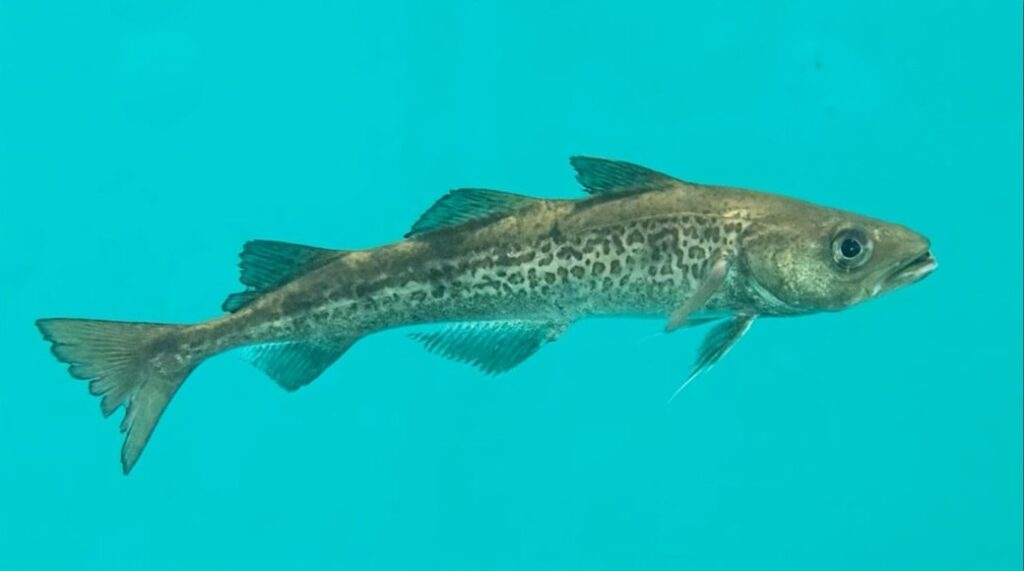
The Alaskan Pollock, also known as Walleye Pollock (Gadus chalcogrammus), is primarily found in the North Pacific Ocean, especially in the Bering Sea and Gulf of Alaska. These fish are known for their speckled coloring, which helps them blend into the seafloor to evade predators. Alaskan Pollock are typically 12-20 inches long and weigh between 1-3 pounds. They are a fast-growing, short-lived species, usually living up to 12 years.
Alaskan Pollock, one of the animals that start with A, inhabit mid-water and near-bottom depths, with juveniles staying above the thermocline and adults dwelling deeper. They exhibit diel vertical migration, moving to different depths to follow their food sources. The species plays a crucial role in the ecosystem, serving as a key prey item for various marine animals.
The Alaskan Pollock fishery is one of the world’s most significant, valued for its sustainability and efficient management practices. It is listed as a species of ” Near Threatened” on the IUCN Red List, indicating a stable population due to effective fishery management and conservation efforts. Curious for more? Read the full article here!
Alaskan Shepherd

The Alaskan Shepherd is a hybrid breed resulting from crossing the Alaskan Malamute and the German Shepherd. These dogs typically originate in the United States and are known for their large, muscular build, standing 22-25 inches tall and weighing between 60-85 pounds. Alaskan Shepherds have a dense double coat that requires regular grooming.
They are versatile and adaptable, thriving in both urban and rural environments as long as they receive adequate exercise and mental stimulation. These dogs are loyal, protective, and intelligent, making them excellent working dogs and companions. Common health issues include diabetes, cataracts, and hip dysplasia, with a lifespan of 10-13 years.
Albacore Tuna
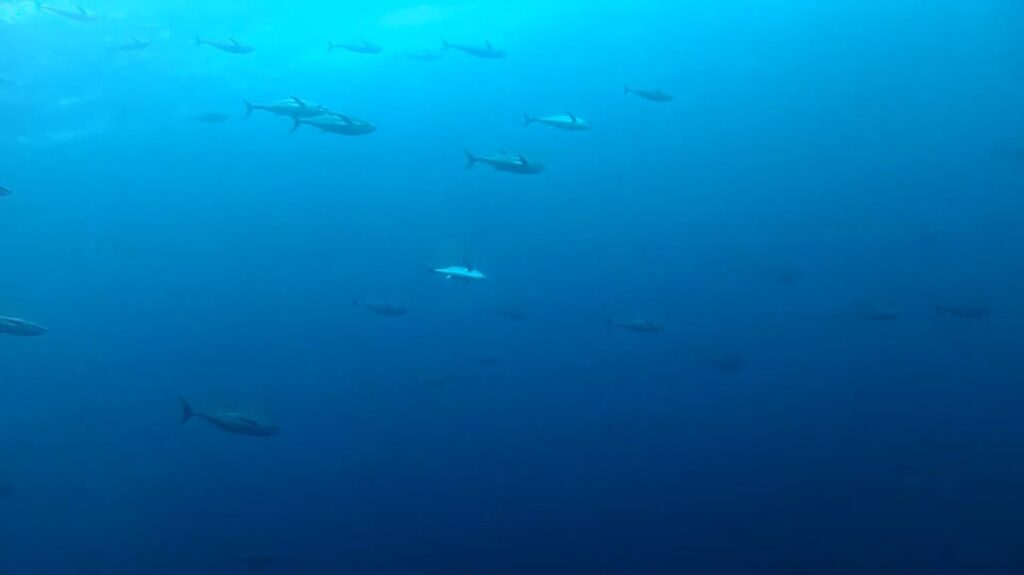
The Albacore Tuna (Thunnus alalunga) is a highly migratory species found in tropical and temperate waters across the Atlantic, Pacific, and Indian Oceans, as well as the Mediterranean Sea. They prefer epipelagic and mesopelagic zones, typically in surface waters with temperatures between 15.6°C and 19.4°C. Albacore Tuna are easily recognizable by their streamlined, torpedo-shaped bodies, dark blue backs, silvery-white sides, and notably long pectoral fins.
These tunas can grow up to 4 feet in length and weigh around 80 pounds. They are an important species for commercial fisheries, especially valued for their use in canned tuna. Albacore Tuna are listed as “Near Threatened” by the IUCN due to overfishing pressures, although their population is managed through sustainable fishing practices in many regions.
Albatross
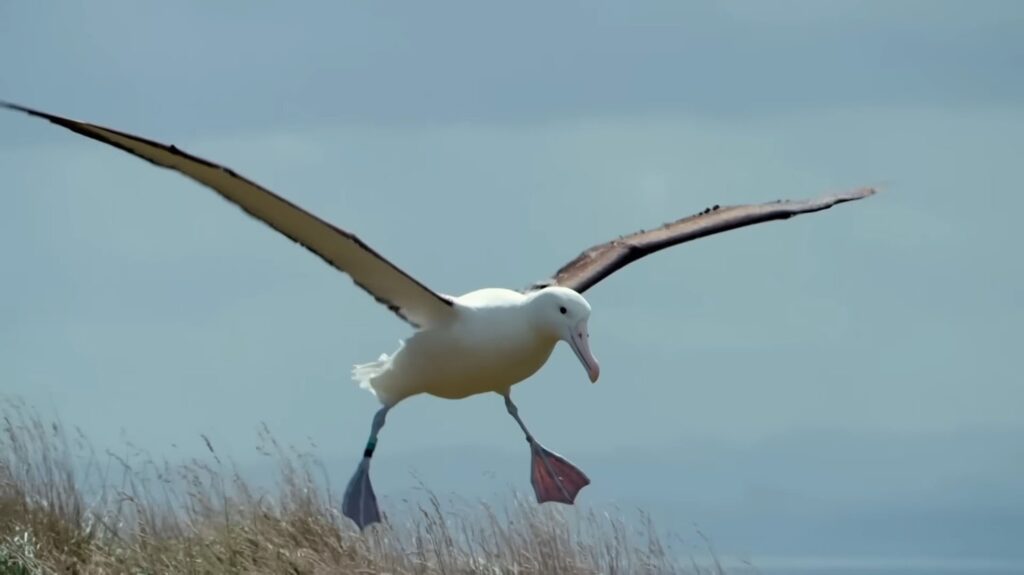
The Albatross, belonging to the family Diomedeidae, is a large seabird found primarily in the Southern Ocean and the North Pacific. These birds are exceptional gliders with the largest wingspans of any bird, reaching up to 3.5 meters. Albatrosses, one of the animals that start with A, are recognized for their white and dark plumage, which varies among species, and their long, slender wings.
They inhabit remote oceanic islands for nesting and are highly efficient flyers, traveling great distances across oceans using dynamic and slope soaring techniques. They primarily feed on squid, fish, and krill, either by scavenging or surface seizing.
Albertonectes

Albertonectes, an extinct genus of elasmosaurid plesiosaur, lived during the Late Cretaceous Period around 100.5 to 66 million years ago. These marine reptiles inhabited the Western Interior Seaway, a vast, shallow sea that once divided North America. They were discovered in the Bearpaw Formation of Alberta, Canada.
Albertonectes, one of the animals that start with A, were remarkable for their long, stiff necks, which made up more than half of their 38-foot total body length. Weighing around 4.8 tons, they had sharp teeth suited for catching small fish and squid. They faced predators like large sharks and possibly mosasaurs. Albertonectes went extinct before the mass extinction event that wiped out the dinosaurs 66 million years ago.
Albino
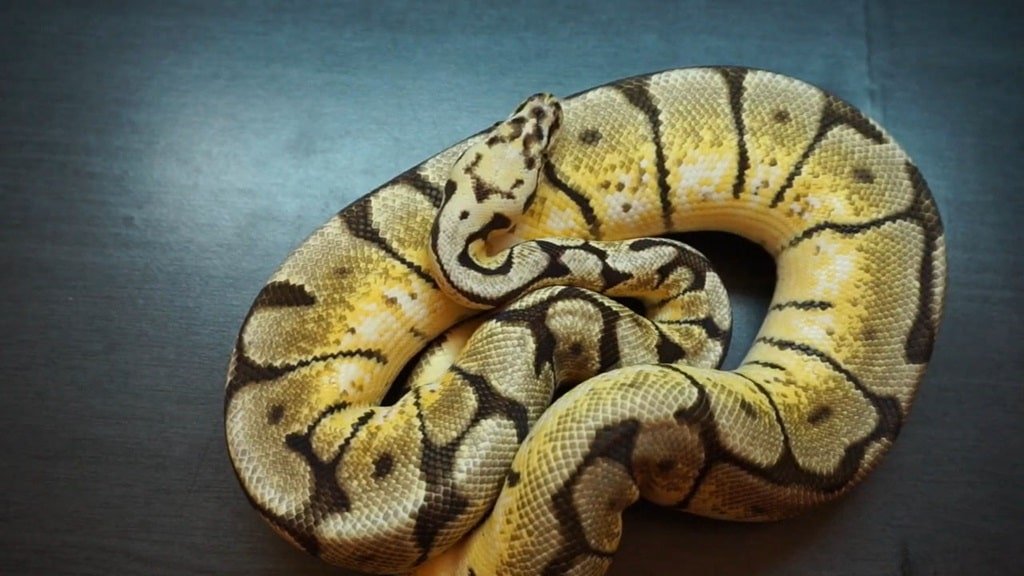
The Albino (Amelanistic) Corn Snake is native to the southeastern United States, ranging from New Jersey to the Florida Keys. These non-venomous snakes prefer habitats such as grasslands, forests, and rocky areas, often seeking shelter in burrows or under logs. Albino corn snakes, one of the animals that start with A, lack melanin, resulting in their distinctive pale appearance with striking red, orange, or pink markings and red eyes. They are typically 2 to 6 feet long and weigh between 1 and 2 pounds. Known for their docile temperament, these snakes are popular pets and adapt well to captivity.
Aldabra Giant Tortoise
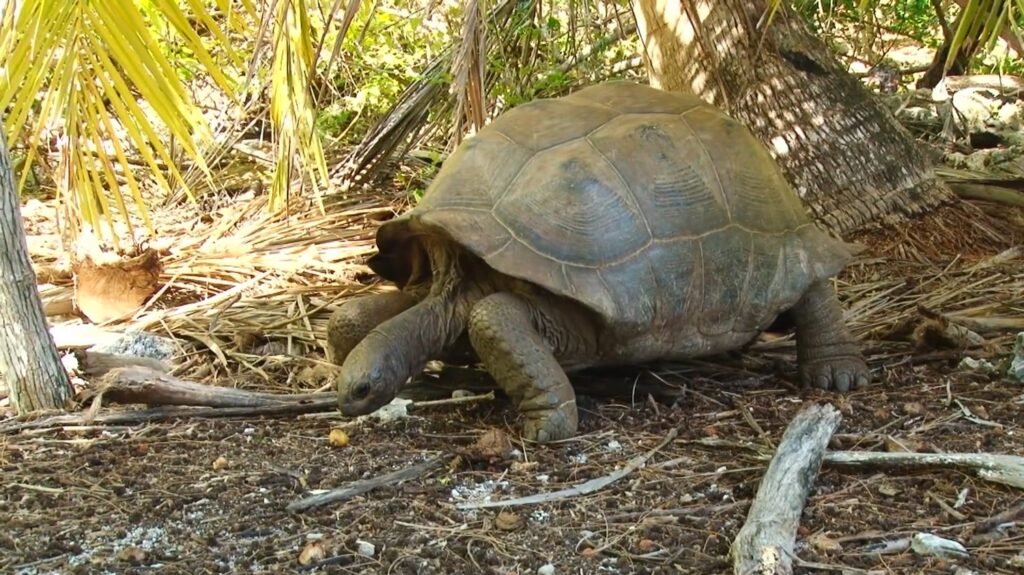
The Aldabra Giant Tortoise (Aldabrachelys gigantea) is native to the Aldabra Atoll in the Seychelles, an isolated group of islands in the Indian Ocean. They inhabit a variety of environments, including grasslands, mangrove swamps, scrub forests, and coastal dunes. These tortoises are among the largest in the world, with males reaching up to 550 pounds and 4 feet in length, while females are slightly smaller.
Their high-domed, brown or tan carapaces and long necks allow them to reach vegetation high off the ground. The Aldabra Giant Tortoise is primarily herbivorous, feeding on grasses, leaves, woody plants, and fruits, though they occasionally consume small invertebrates and carrion.
Conservation efforts have been successful in stabilizing their population, which is now around 100,000 individuals. They are classified as “Vulnerable” by the IUCN due to past threats like habitat destruction and overhunting, but ongoing protection measures, especially in the UNESCO World Heritage-listed Aldabra Atoll, have aided their recovery.
Alligator Gar
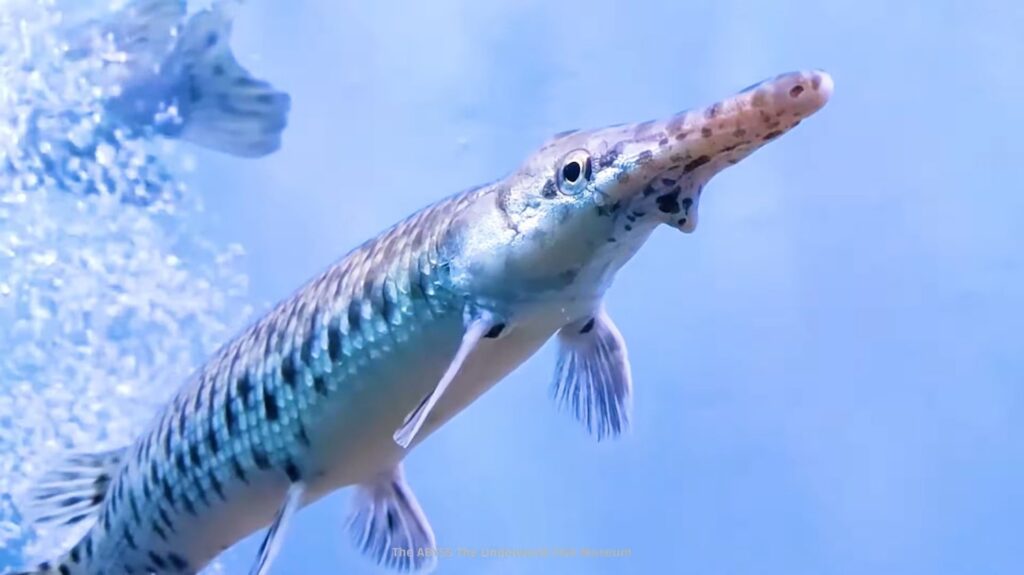
The Alligator Gar (Atractosteus spatula) is a large freshwater fish native to the southern United States, extending into parts of the Midwest and down to Mexico. These fish are primarily found in slow-moving rivers, reservoirs, and brackish waters near the coast. They are renowned for their broad, alligator-like snouts and double rows of sharp teeth. Alligator gars can grow up to 10 feet long and weigh as much as 350 pounds, though they commonly average around 6 feet in length.
Their bodies are covered in hard, diamond-shaped scales, and they have a brownish or olive coloration on top, fading to lighter shades on their bellies. Alligator gars are opportunistic predators, feeding on fish, waterfowl, and small mammals. Despite their fearsome appearance, alligator gars are not aggressive towards humans.
Allosaurus
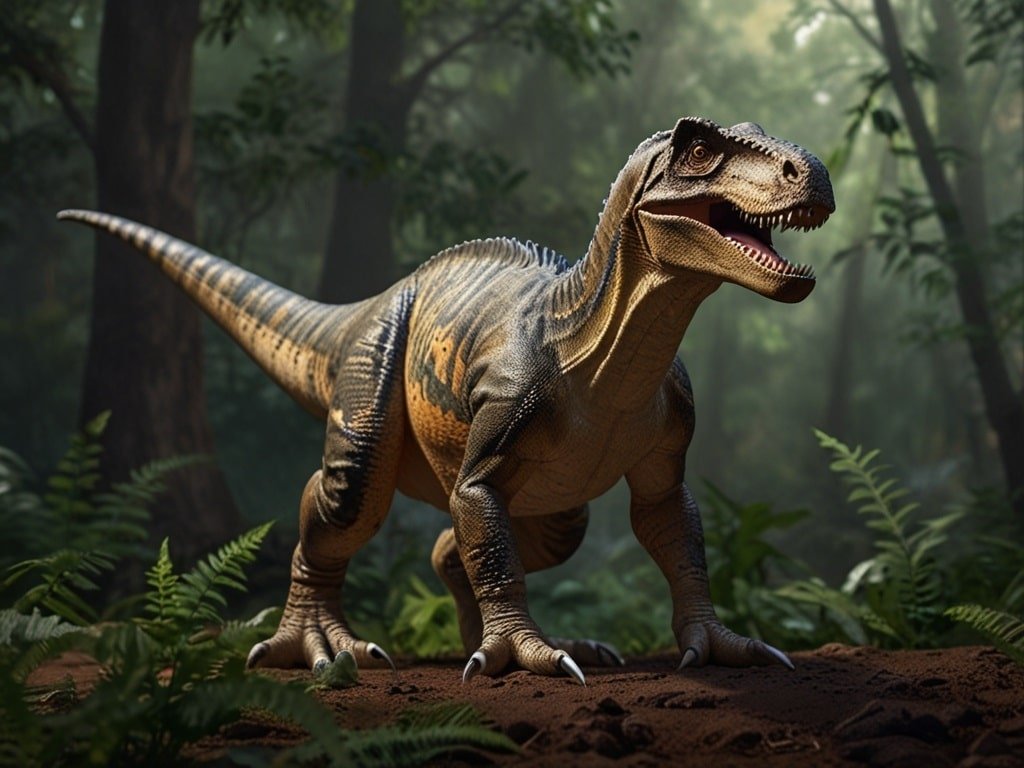
Allosaurus, a large carnivorous dinosaur, roamed North America and parts of Europe during the Late Jurassic period, approximately 155 to 145 million years ago. These predators primarily lived in semi-arid environments with seasonal variations, such as floodplains and conifer forests.
Allosaurus, one of the animals that start with A, typically measured around 28 to 39 feet in length and weighed between 2,000 to 4,400 pounds. They had massive skulls with sharp, serrated teeth, powerful hind limbs, and short, robust forelimbs. Their diet consisted mainly of large herbivorous dinosaurs like Stegosaurus and Apatosaurus.
Despite their fearsome reputation, they likely had a relatively low bite force and might have scavenged as much as they hunted. Fossils are primarily found in the Morrison Formation in the western United States. The Allosaurus is classified as “extinct” with no living descendants.
Alpaca
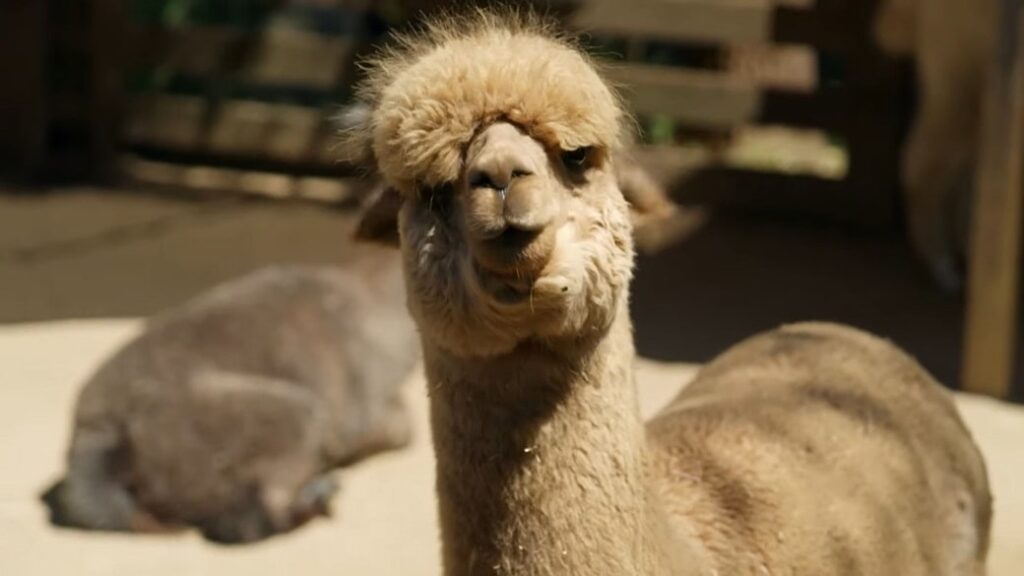
The alpaca (Lama pacos) is a domesticated species of South American camelid, native to the Andean mountain range, primarily in Peru, Bolivia, Ecuador, and northern Chile. They thrive at high altitudes, often between 9,000 to 15,000 feet, where the climate is harsh and vegetation sparse. Alpacas are well-adapted to these environments, possessing dense, insulating fleece that comes in a variety of colors and soft, padded feet that minimize impact on delicate terrains.
Alpacas, one of the animals that start with A, are small compared to llamas, standing about 34-36 inches at the shoulder and weighing between 121-143 pounds. They have long necks, small heads, and large, pointed ears. There are two breeds: the Huacaya, with fluffy, crimped fleece, and the rarer Suri, with silky, straight fleece that hangs in locks.
Alpine Dachsbracke
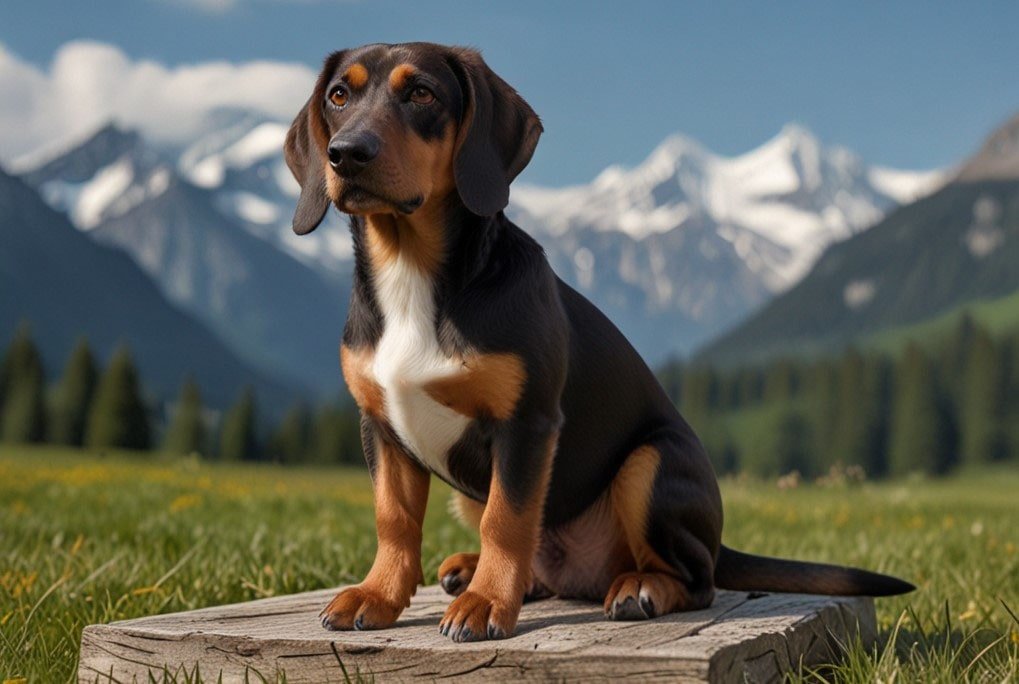
The Alpine Dachsbracke is a sturdy scent hound breed originating from Austria, specifically bred for hunting in mountainous terrains. These dogs are compact, muscular, and have a double coat consisting of a thick topcoat and dense undercoat, typically colored dark deer red with some black hairs. They stand about 13-16 inches tall and weigh between 33-40 pounds.
Alpine Dachsbrackes are known for their determination and excellent tracking abilities, making them valuable for hunting and tracking wounded game. They have a robust build with short legs and a long body, similar to a Dachshund but more muscular. Their ears are medium-sized and hang down, and they often have a white star on their chest. These dogs are friendly, loyal, and make good family pets, though they require regular exercise and mental stimulation due to their high energy levels.
Alpine Goat
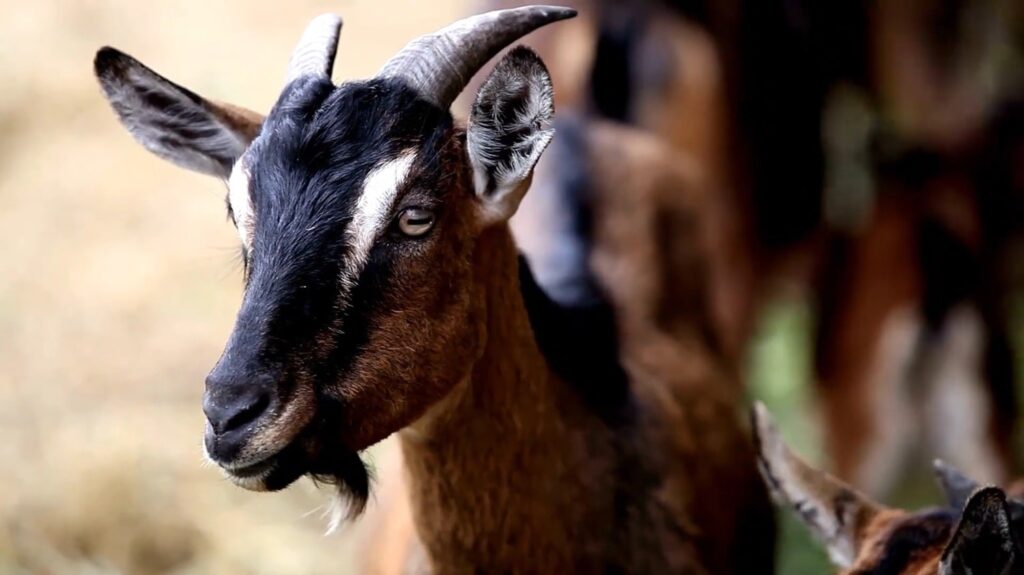
The Alpine goat, scientifically known as Capra aegagrus hircus, originates from the French Alps and is now domesticated globally. These medium to large-sized goats are renowned for their excellent milk production, which has a relatively low fat content. Alpine goats typically stand 30-40 inches tall and weigh between 135-170 pounds, with males often being larger. They exhibit a variety of colors and patterns and have erect ears and slightly curved horns.
These goats thrive in mountainous grasslands and plateaus, favoring cool to cold environments. While adaptable to various climates, they require proper shelter and care in warmer regions to avoid overheating. Alpine goats are friendly, curious, and known for their hardiness, making them popular in dairy farming worldwide.
Alusky

The Alusky is a hybrid breed resulting from crossing the Alaskan Malamute and Siberian Husky. This large dog typically weighs between 60 to 100 pounds and stands 23 to 28 inches tall. Aluskies have a muscular build, thick double coat, and can come in various colors, often with striking blue or multicolored eyes. Known for their strength, endurance, and agility, they are well-suited for physically demanding tasks and require plenty of exercise and mental stimulation.
Aluskies, one of the animals that start with A, thrive in spacious environments with secure fencing, making them unsuitable for apartment living. They are friendly and social, often getting along well with other pets if properly socialized. Due to their high energy levels and intelligence, consistent training and firm leadership are essential to prevent undesirable behaviors like digging or chewing. They are prone to some health issues, including hip dysplasia and eye problems, but generally enjoy a lifespan of 10 to 15 years with proper care.
Amano Shrimp
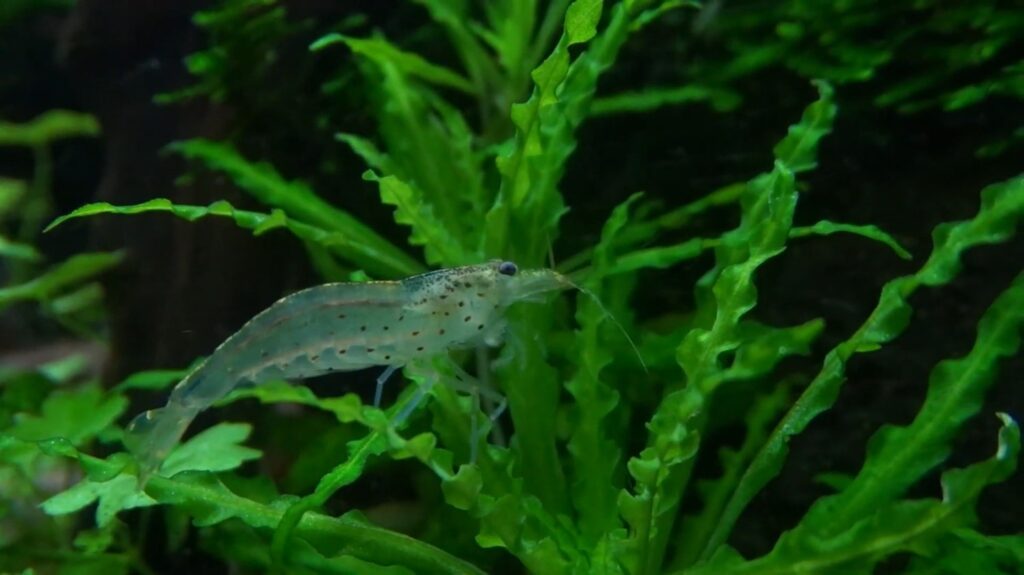
The Amano Shrimp (Caridina multidentata), named after the renowned aquarist Takashi Amano, is native to Japan, Taiwan, and parts of East Asia. They inhabit freshwater rivers and streams and require brackish water for breeding. Amano shrimp, one of the animals that start with A, have transparent bodies with distinctive brown or greenish-brown stripes, growing up to 2 inches in length. These shrimp thrive in temperate climates with water temperatures between 70-78°F (21-26°C).
Known for their algae-eating abilities, Amano shrimp are popular in aquariums for maintaining cleanliness without harming plants. They are peaceful and adaptable, making them suitable for community tanks.
Amargasaurus
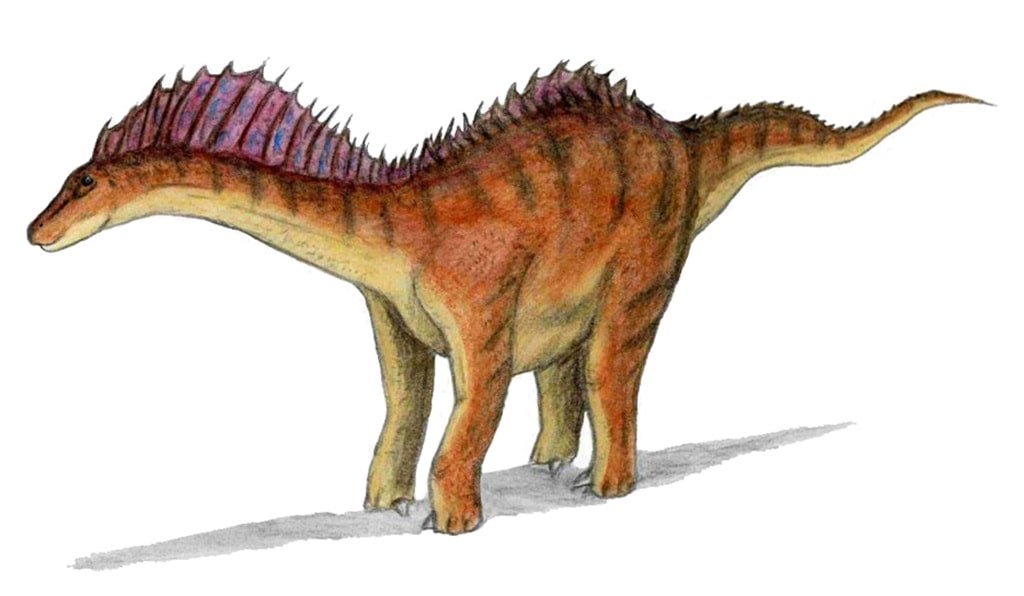
Amargasaurus was a sauropod dinosaur that lived during the Early Cretaceous period, approximately 130 to 120 million years ago, in what is now Argentina. Fossils have been discovered in the La Amarga Formation in the Neuquén Province. This region, part of ancient Gondwana, featured warm, semi-arid conditions with seasonal variations, including riparian zones that provided essential water sources and vegetation.
Amargasaurus was about 30 feet long and weighed around 2-3 tons. Its most distinctive features were the double rows of tall, bony spines running along its neck and back, possibly covered in keratin. These spines could have served various functions, such as defense, temperature regulation, or display during mating rituals.
Amazon Parrot
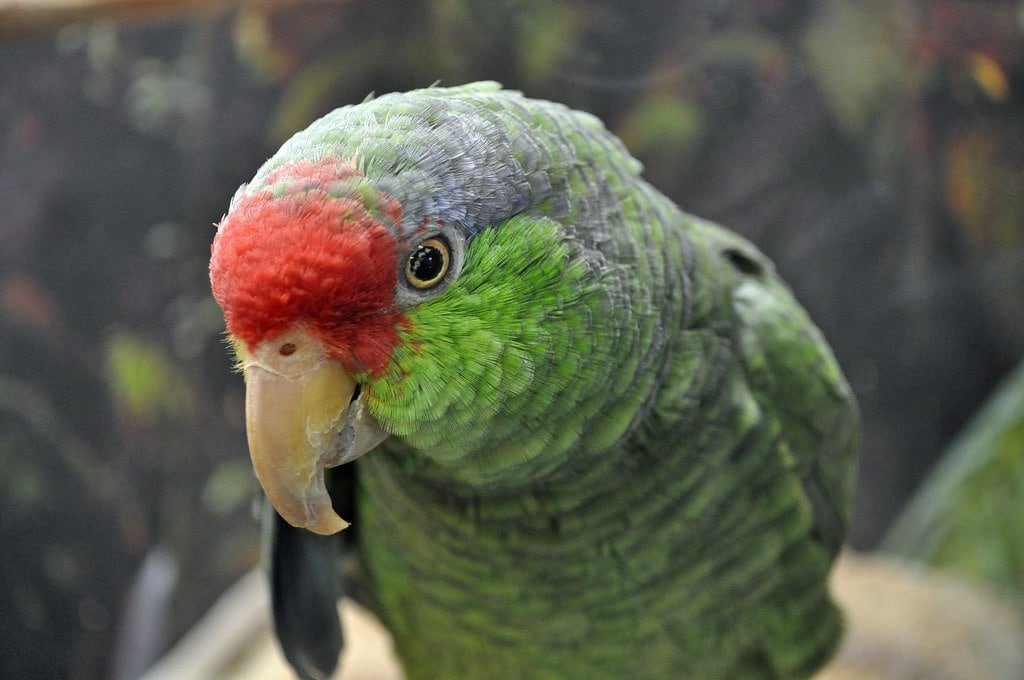
Amazon parrots, belonging to the genus Amazona, are medium to large-sized parrots native to the Americas, ranging from South America to Mexico and the Caribbean. These birds thrive in diverse habitats, including rainforests, woodlands, and savannas, often preferring forest canopies. They are primarily green, with vibrant accents of red, yellow, blue, or orange on their heads, wings, and tails.
Amazon parrots are renowned for their exceptional vocal abilities and intelligence, making them popular pets. However, their populations face threats from habitat loss, deforestation, and the illegal pet trade. As a result, several species are classified as critically endangered.
Amazon River Dolphin

The Amazon River Dolphin, also known as the pink river dolphin or boto, inhabits the freshwater regions of the Amazon and Orinoco river basins across countries like Brazil, Peru, Bolivia, Ecuador, Colombia, and Venezuela. These dolphins thrive in rivers, lakes, and flooded forests, showing remarkable adaptability to their environment.
Adult Amazon River Dolphins are distinguished by their unique pink color, which becomes more pronounced with age, especially in males. They can grow up to 9.2 feet in length and weigh as much as 352 pounds. Unlike oceanic dolphins, they have a flexible neck, enabling them to maneuver around submerged trees and other obstacles.
Classified as endangered, Amazon River Dolphins face significant threats from habitat destruction, pollution, and fishing practices. Efforts by conservation groups are crucial to protect their habitat and mitigate human impact on their populations.
Amazon Tree Boa
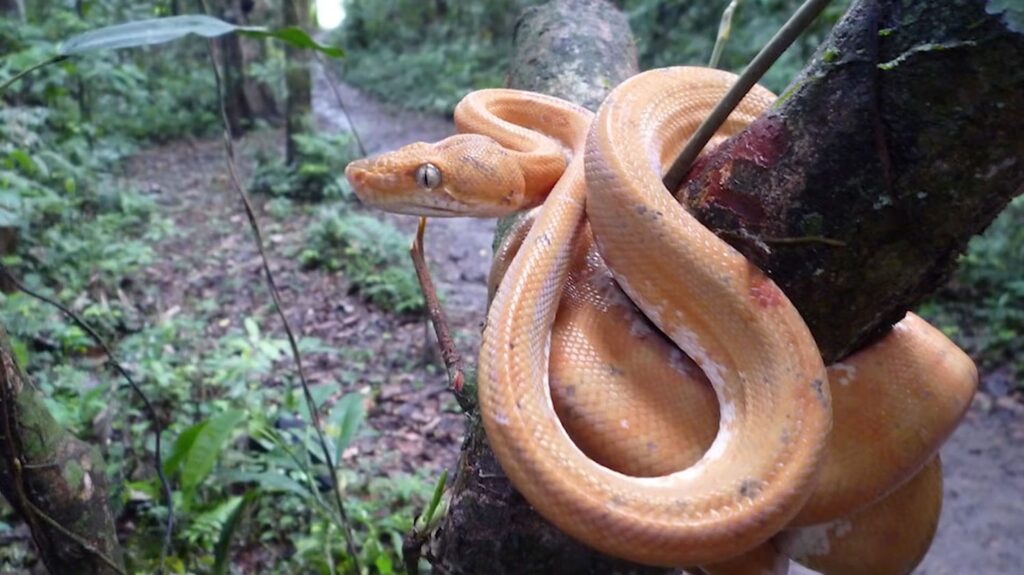
The Amazon Tree Boa (Corallus hortulanus) is an arboreal snake native to the tropical rainforests of South America, including Brazil, Peru, Ecuador, Colombia, Venezuela, and the Guianas. It thrives in humid environments, such as dense forests, riverine forests, and sometimes even plantations near human habitation.
These boas are known for their long, slender bodies and diverse coloration, which can range from black, brown, and gray to vivid reds, oranges, and yellows. They can grow between 5 to 6.5 feet in length and are equipped with prehensile tails for navigating tree branches.
The Amazon Tree Boa, one of the animals that start with A, is a carnivorous predator, primarily feeding on small mammals, birds, frogs, and lizards. Despite their aggressive nature, they are non-venomous and use constriction to subdue their prey. Listed as “Least Concern” by the IUCN, their population remains stable, though they face threats from habitat destruction and the pet trade. Conservation efforts focus on habitat protection to ensure their survival.
Amazonian Royal Flycatcher
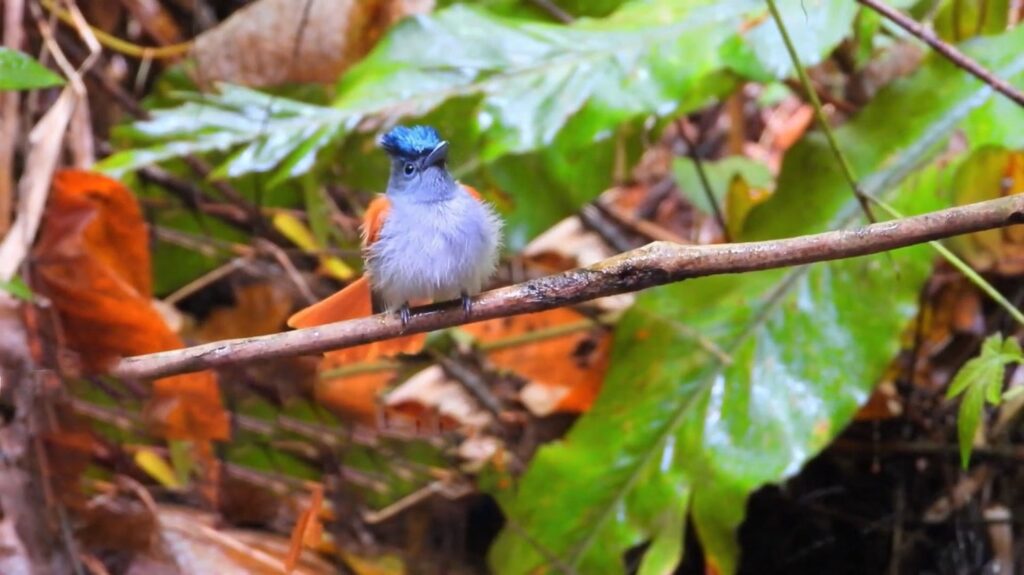
The Amazonian Royal Flycatcher (Onychorhynchus coronatus) is a striking bird found in the Amazon Basin, inhabiting regions in Brazil, Peru, Colombia, Ecuador, and Venezuela. These birds thrive in humid lowland rainforests, especially near rivers and streams, and prefer areas with dense vegetation and high rainfall.
Measuring about 15 cm (5.9 inches) in length and weighing between 9.7 to 14 grams, they are known for their vibrant and elaborate crests. Males display a fiery orange crest with blue tips, while females have a yellow-orange crest. Their bodies are predominantly brown with reddish cinnamon tails and buffy yellow undersides.
The Amazonian Royal Flycatcher, one of the animals that start with A, feeds primarily on insects, such as beetles, ants, and flies, which it catches mid-flight or plucks from foliage. During the breeding season, they construct long, pendant-shaped nests, often suspended over water to deter predators. Despite habitat loss due to deforestation, the species is currently classified as “Least Concern” by the IUCN.
Amberjack
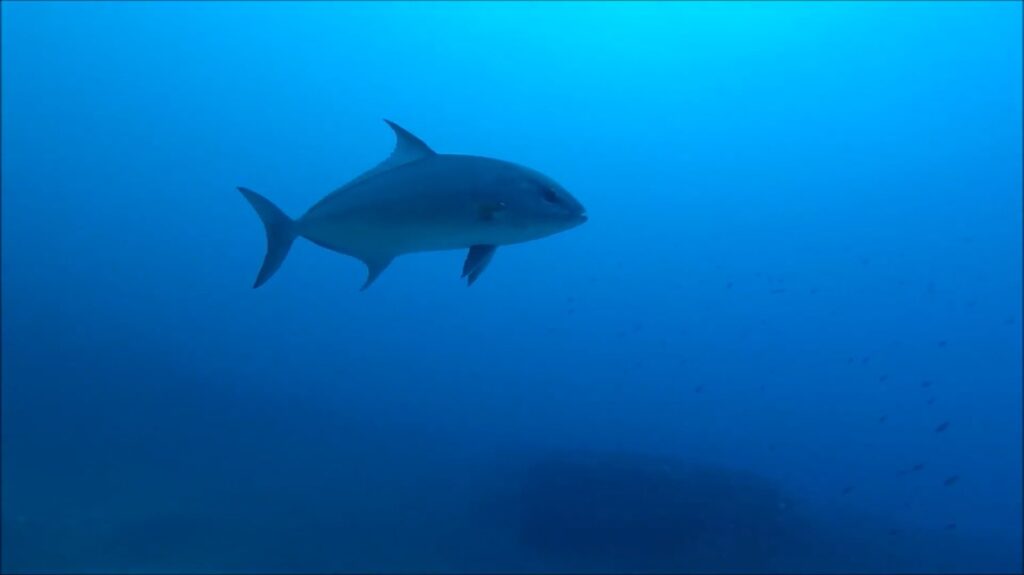
The Amberjack, specifically the Greater Amberjack (Seriola dumerili), is found in the Atlantic and Pacific Oceans, ranging from Nova Scotia to Brazil, including the Gulf of Mexico and the Caribbean. Amberjack, one of the animals that start with A, thrive in warm, subtropical waters at depths of 60 to 240 feet, often around reefs, rocky outcrops, and shipwrecks.
Amberjacks, one of the animals that start with A, are robust fish with bluish-grey backs and silvery-white bellies. They can grow up to 6 feet long and weigh up to 200 pounds. Juveniles display vertical bars on their sides, which fade as they mature. As opportunistic predators, Amberjacks feed on benthic and pelagic fish, cephalopods, and crustaceans. They are known for their strong fighting ability, making them popular among sport fishermen.
Ambrosia Beetle
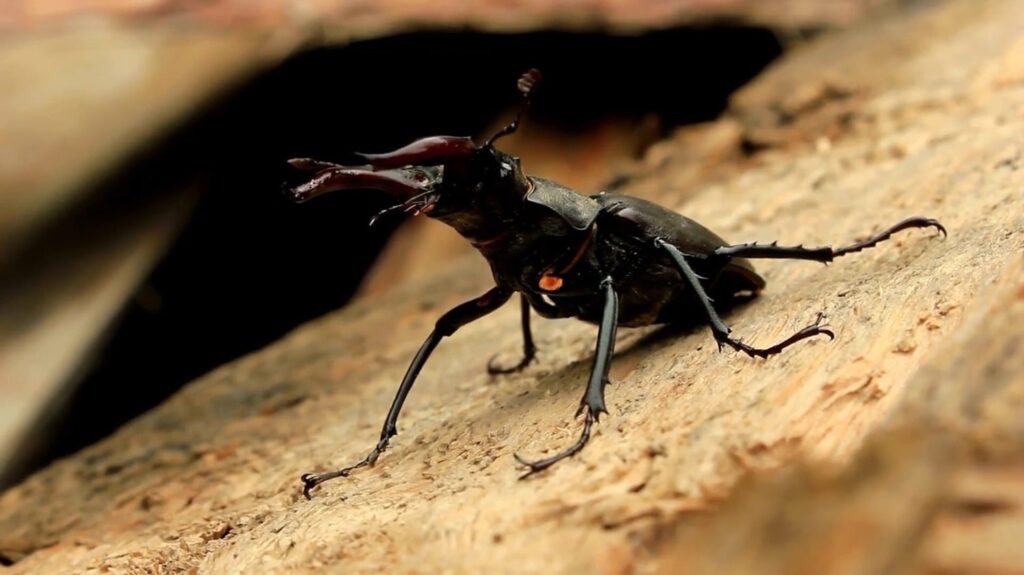
The ambrosia beetle is found globally, with the highest diversity in tropical regions. It inhabits forests, orchards, and urban areas, preferring dead, dying, or stressed trees, though some species attack healthy trees. Ambrosia beetles, one of the animals that start with A, are small, cylindrical, and range in color from brown to black. They have a symbiotic relationship with fungi, which they cultivate within tree galleries for food.
American Alligator
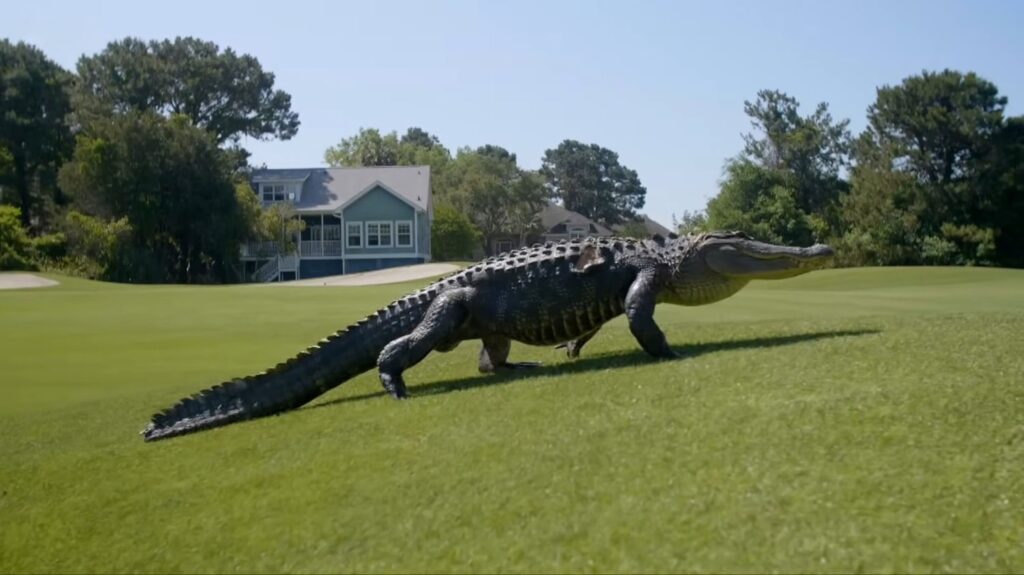
The American alligator (Alligator mississippiensis) is native to the southeastern United States, from North Carolina to Texas, primarily inhabiting freshwater environments such as slow-moving rivers, swamps, marshes, and lakes. They are large reptiles, with males reaching up to 12 feet in length and weighing around 1,000 pounds. Their dark, armored skin features bony scales called scutes. Once endangered, conservation efforts have helped their population rebound, and they are now classified as “Least Concern.” These alligators play a crucial role in their ecosystem, creating burrows that provide habitat for other species.
American Alsatian
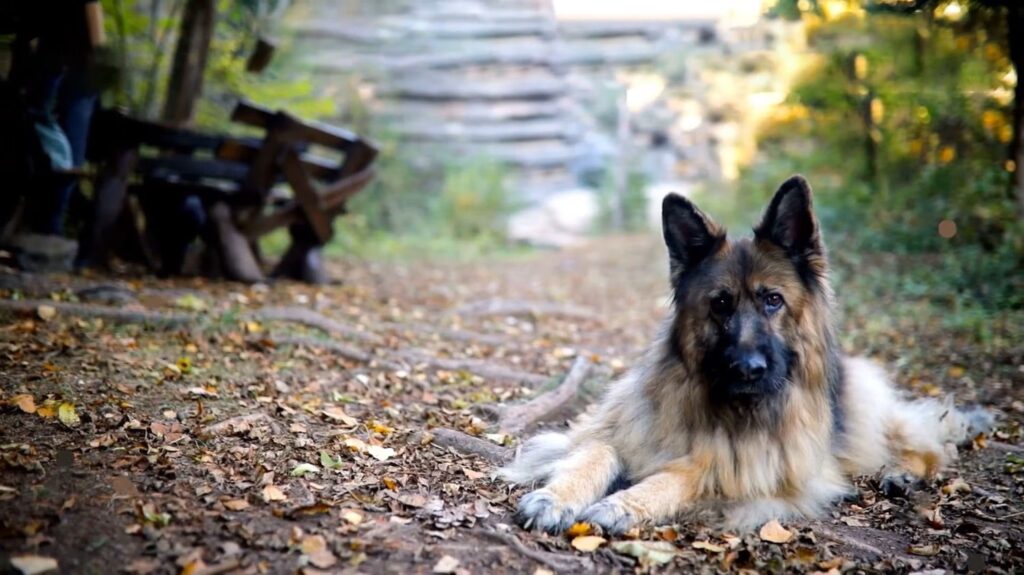
The American Alsatian is a large breed of dog developed in the United States. Originating from the Alsace region, it is bred for its gentle temperament and loyalty. These dogs have thick, double coats that come in various colors, including black, silver, and cream. American Alsatians, one of the animals that start with A, are known for their wolf-like appearance, with a robust build, erect ears, and a bushy tail. They are primarily kept as companion animals and thrive in home environments where they can interact closely with their families.
American Bulldog

The American Bulldog is native to the United States, originating in the South. It thrives in domestic settings, often found on farms or in suburban homes with ample space. This breed is large and muscular, with males typically weighing between 66-130 pounds and females 60-90 pounds. They have a short coat, usually white with patches of other colors. There are two main types: the stockier, heavier Johnson type, and the more athletic Scott type. Although they were once near extinction, American Bulldogs are now common pets known for their loyalty and strength.
American Bully
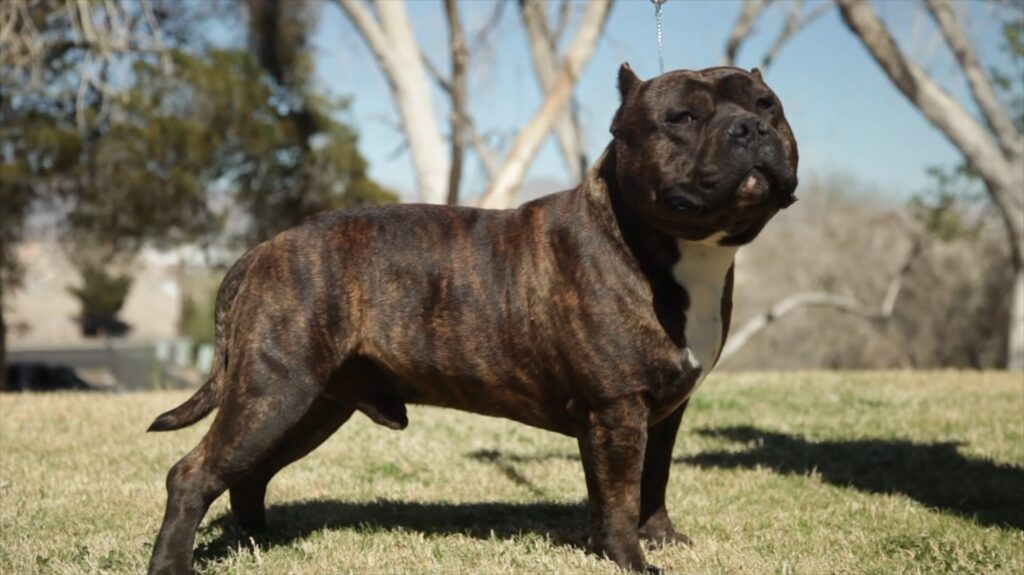
The American Bully is a relatively new breed of dog that originated in the United States during the 1980s. It was developed as a companion breed from various bull breeds, such as the American Pit Bull Terrier and American Staffordshire Terrier, emphasizing a compact, muscular build and gentle temperament. Known for their loyalty and affection towards family members, American Bullies come in several sizes (Standard, Classic, Pocket, and XL) and a variety of colors and coat patterns. They require regular exercise and socialization to thrive, and their adaptable nature makes them suitable for both urban and suburban living environments.
American Cocker Spaniel
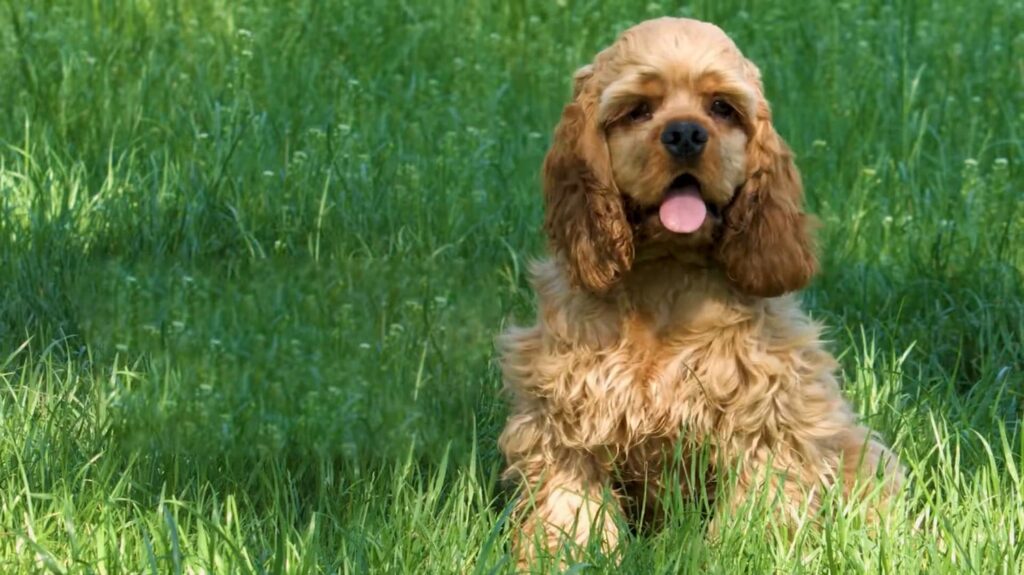
The American Cocker Spaniel, one of the animals that start with A, is a small, merry dog breed known for its long, silky fur and big, expressive eyes. Originally bred for hunting birds, these energetic canines are now popular family companions. Standing at about 14-15 inches tall, they are the smallest breed in the American Kennel Club’s Sporting group. Their luxurious coat comes in a variety of colors, including black, brown, and tan. While they retain their playful spirit, American Cocker Spaniels are known for being gentle and adaptable, making them a great choice for families with children.
American Cockroach
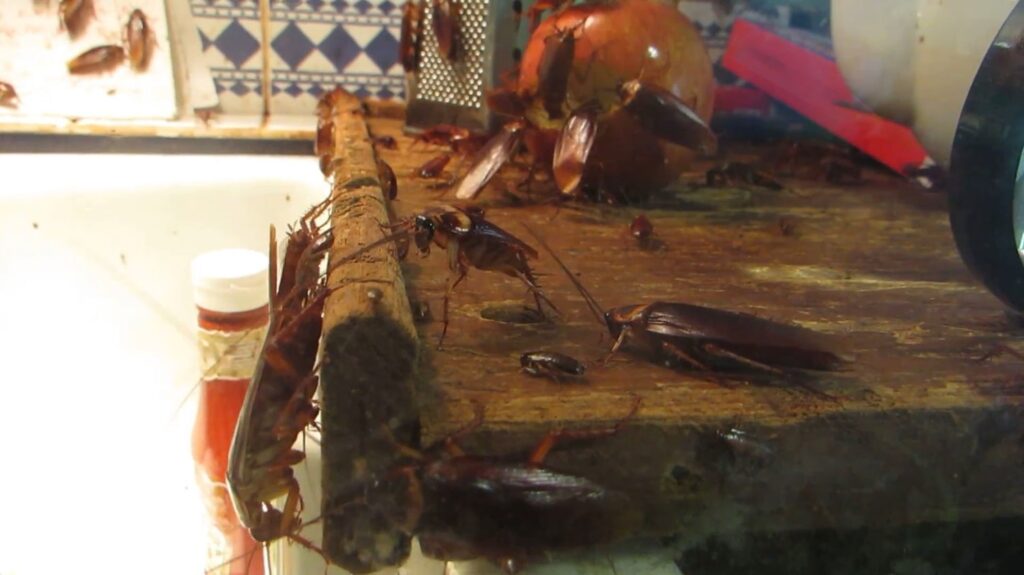
Contrary to its name, the American cockroach is not native to North America, but arrived by ship from Africa centuries ago. Despite their unsettling appearance, these reddish-brown insects are surprisingly resilient, surviving for weeks without food and even a short time without their head! They are opportunistic eaters, scavenging for decaying matter but happily consuming almost anything they find. While American cockroaches can fly short distances, their preferred habitat is outdoors or in warm, damp areas inside homes, like basements or crawlspaces.
American Coonhound
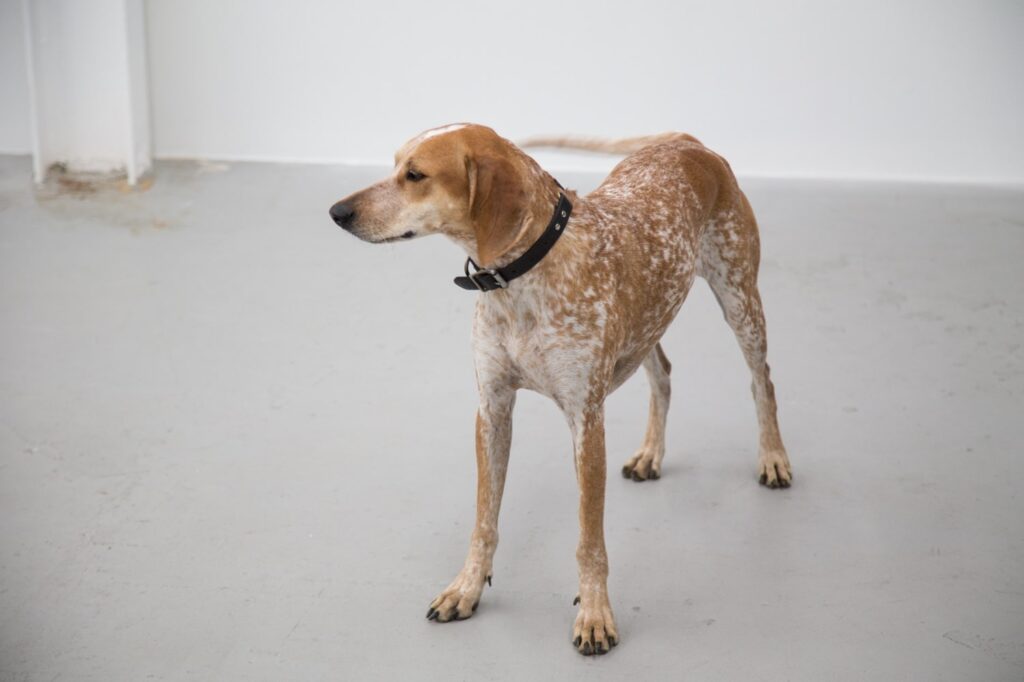
The American Coonhound, also nicknamed the Redtick Coonhound, is a breed built for endurance and speed. With a sleek, muscular build and a deep chest, these athletic dogs were bred to hunt raccoons. Their keen sense of smell and relentless pursuit make them skilled trackers. Interestingly, some believe George Washington himself helped develop the breed. Beyond hunting, American Coonhounds are known for their friendly and social nature, though their strong hunting instincts and loud bark might not make them ideal for apartment living.
American Dog Tick
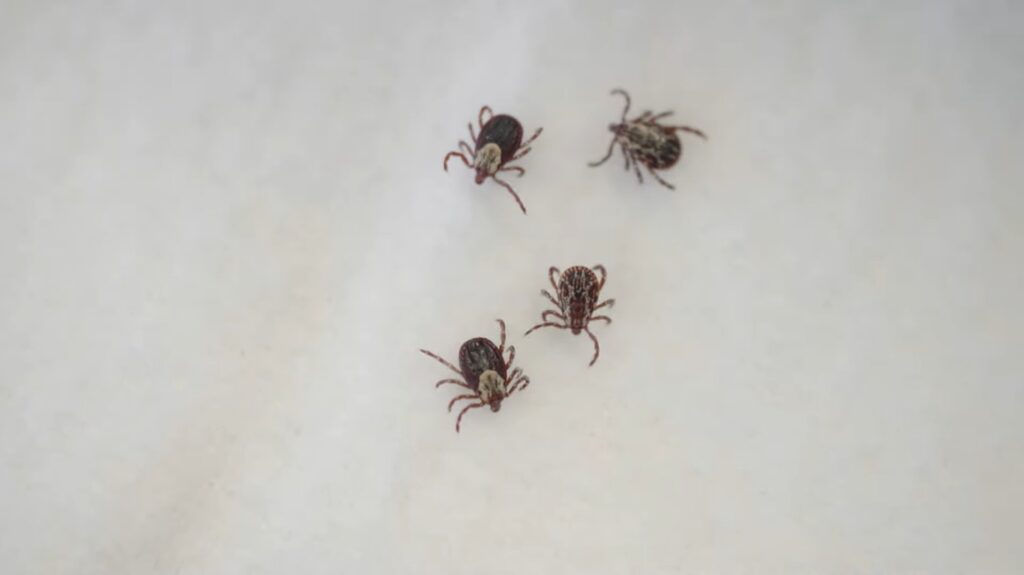
Found primarily in the eastern half of North America, the American dog tick, also known as the wood tick, is a three-host tick that feeds on various mammals throughout its lifecycle. Adult females, known for targeting medium-sized animals like dogs and humans, can swell significantly after feeding on blood. While these ticks can transmit diseases like Rocky Mountain spotted fever, early detection and removal are key to preventing illness. They are most active during spring and summer, frequenting wooded areas and tall grass where they wait for a host to brush by.
American Eel
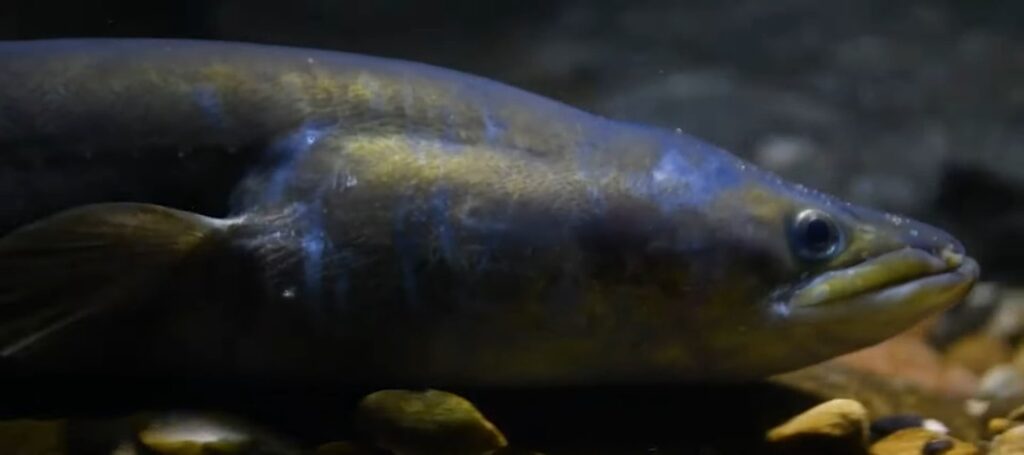
The American eel, one of the animals that start with A, is a fascinating fish with a unique life cycle. Nicknamed the “slippery swimmer” for its mucus-covered, snake-like body, this eel spends most of its life in freshwater rivers and streams. However, unlike most freshwater fish, the American eel, one of the animals that start with A, is catadromous, meaning it migrates to the Sargasso Sea in the Atlantic Ocean to spawn. After hatching, the transparent young eels drift on ocean currents for a year before reaching the American coast, where they then swim upstream to their freshwater homes. These eels are nocturnal hunters, feeding on crustaceans, insects, and small fish.
American Eskimo Dog
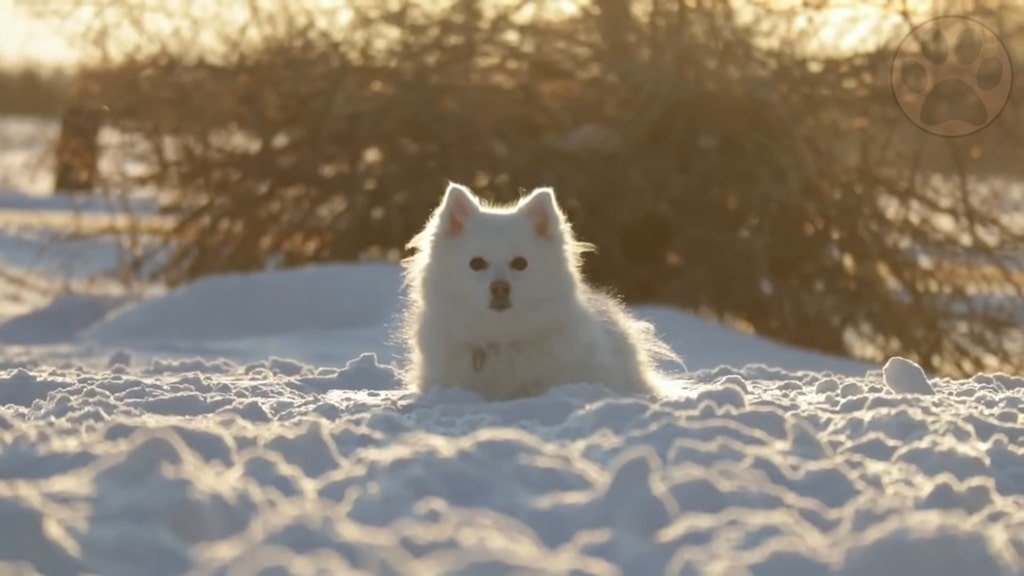
The American Eskimo Dog, also known as the Eskie, is a charming Spitz breed known for its thick, white double coat and playful spirit. Despite their name, Eskies hail from Germany, where they were originally herding and guard dogs. Renowned for their intelligence and eagerness to please, these loyal companions excel in obedience training and agility. Coming in standard, miniature, and toy sizes, Eskies are adaptable to various living situations as long as they receive enough exercise and mental stimulation. Their friendly nature makes them great family dogs, though their alertness can lead to barking if not properly socialized.
American Foxhound
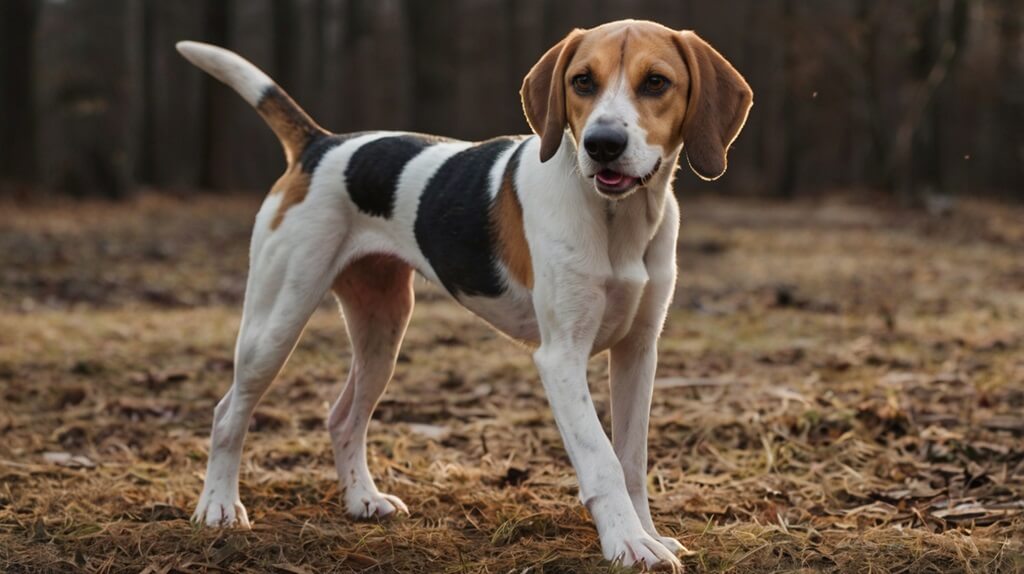
The American Foxhound, a close relative of the English Foxhound, is a scent hound bred for tracking foxes. Described as gentle and loyal with a sweet temperament, these hounds are surprisingly good with children and other pets. However, their independent streak and powerful hunting instincts require experienced owners who can provide ample exercise and training. Their melodious howls might not be ideal for close neighbors, and their focus on following a scent can lead them to ignore commands. Recognizable by their large, expressive eyes and distinctive black, tan, and white markings, the American Foxhound is the official state dog of Virginia.
American Hairless Terrier
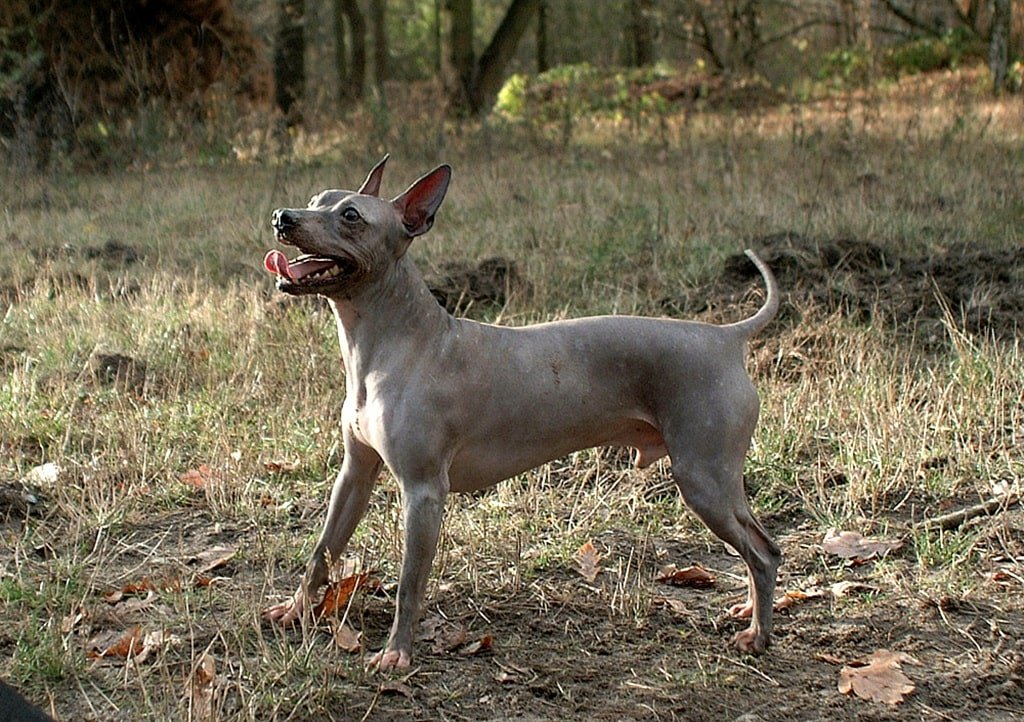
The American Hairless Terrier, an all-American pup, is a lively and intelligent dog breed known for its minimal shedding. Developed from naturally hairless Rat Terriers in the 1970s, these terriers come in two varieties: hairless and coated. The hairless variety, the most recognizable, has smooth, warm skin and might retain eyebrows and whiskers. The coated type boasts a short, shiny coat. Regardless of coat type, American Hairless Terriers, one of the animals that start with A, are energetic and playful companions, making them a great fit for active families. Their small to medium size, typically around 12-16 inches tall, allows them to adapt to various living situations.
American Leopard Hound
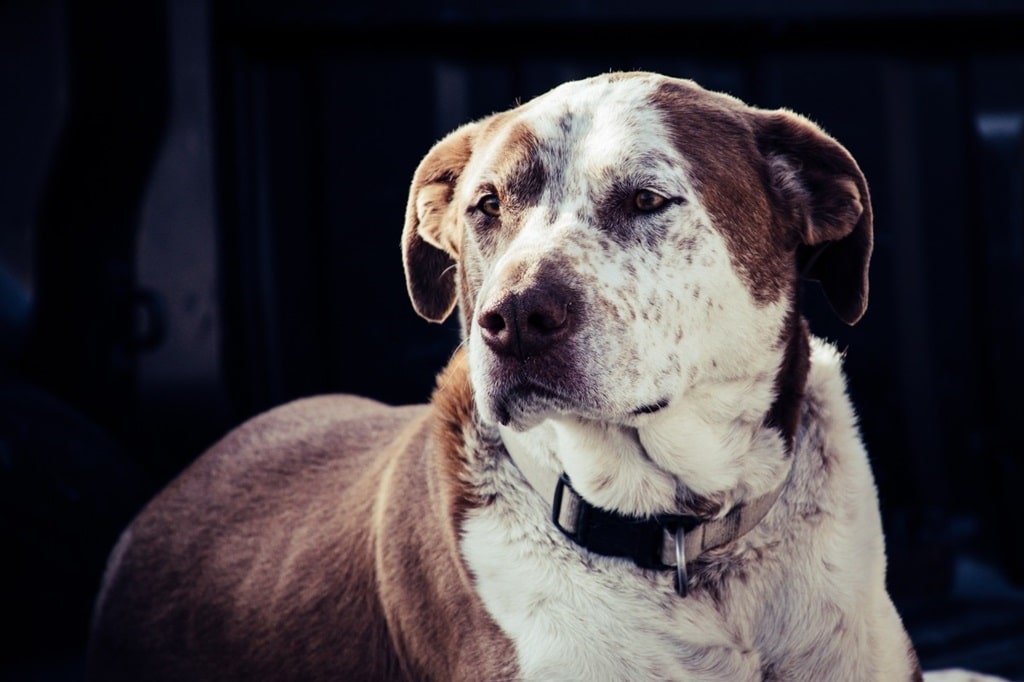
The American Leopard Hound, a distinctive spotted pup, boasts a rich history intertwined with the arrival of Spanish conquistadors. These medium-sized hunting dogs, known for their intelligence and loyalty, are believed to be descendants of European breeds brought to the Americas. Prized for their keen tracking abilities and athleticism,
American Leopard Hounds, one of the animals that start with A, excel at hunting various prey, including bears. Their dense, short coat comes in a variety of colors and patterns, most notably the namesake leopard spots. Despite their hunting prowess, American Leopard Hounds can adapt to family life with proper training and exercise. Their eagerness to please makes them responsive companions for active owners seeking a loyal and adventurous canine friend.
American Paddlefish
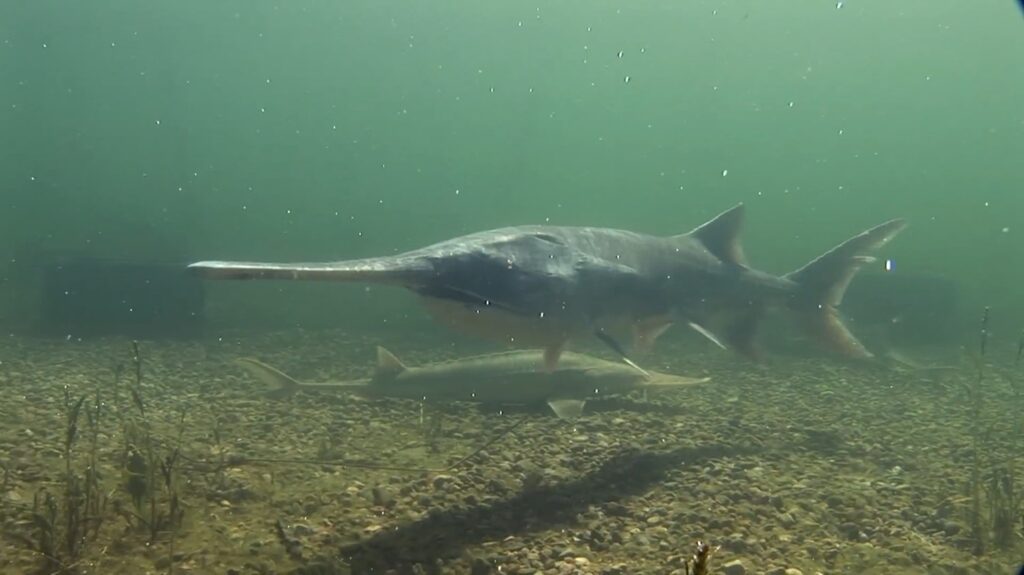
The American Paddlefish is a unique relic, swimming the freshwater depths of North America for over 125 million years. Nicknamed the “spoonbill” for its elongated, flat snout, this giant filter feeder is the last remaining member of its ancient family. Reaching lengths of over seven feet, the American Paddlefish uses its electro-receptive snout to locate plankton, its main food source. Despite its imposing size, this gentle giant is an important part of healthy river ecosystems. However, overfishing and habitat degradation have pushed the American Paddlefish, one of the animals starting with A, towards vulnerability, highlighting the need for conservation efforts.
American Pit Bull Terrier

The American Pit Bull Terrier (APBT) is a medium-sized, muscular dog known for its athleticism and loyalty. While originally bred for bull-baiting (a now-illegal practice), these tenacious canines have become popular family companions due to their friendly and affectionate nature. Despite their powerful build, APBTs are often described as “nanny dogs” for their gentleness with children. However, their intelligence and high energy levels require proper training and socialization to ensure a well-behaved companion. Recognized by the United Kennel Club (UKC) but not the American Kennel Club (AKC), the APBT boasts a short, easy-to-maintain coat that comes in a variety of colors.
American Pugabull
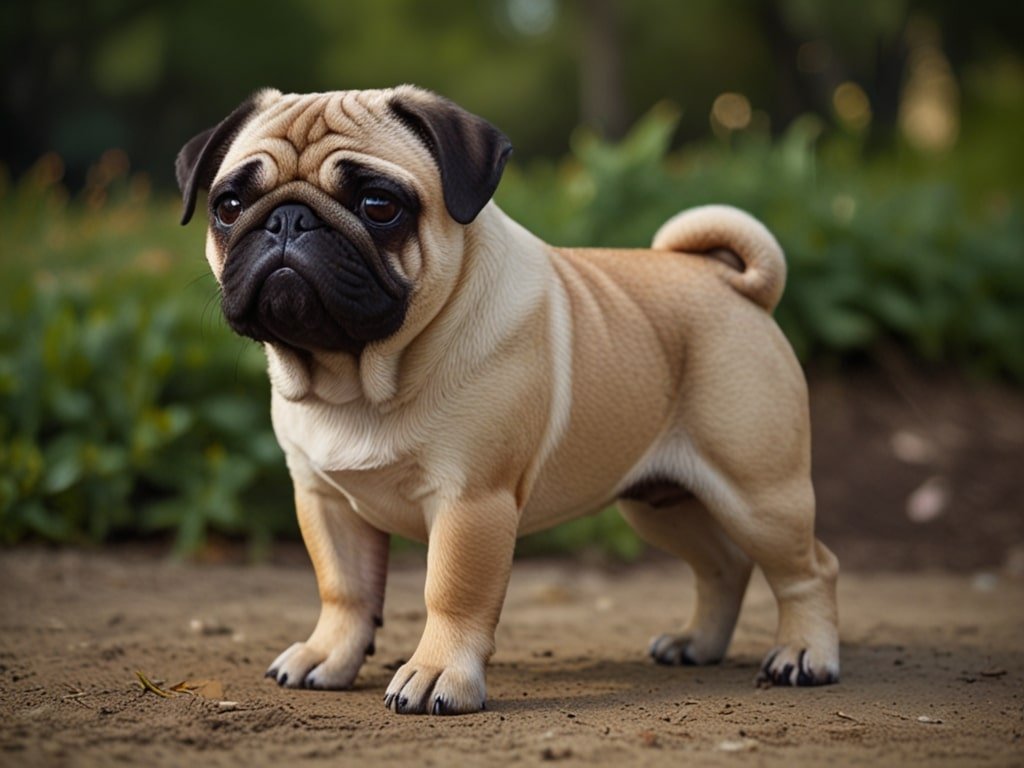
The American Pugabull, one of the animals that start with A, is a mixed breed dog resulting from the cross between an American Bulldog and a Pug. This combination brings together the playful personality of the Pug with the protective nature of the American Bulldog. These medium-sized, loyal companions can be a good fit for families or active individuals seeking a fun-loving and alert pup. Early socialization is recommended due to potential stubbornness inherited from the Bulldog side. American Pugabulls are adaptable to various living situations but require enough exercise to burn off their energetic spirit.
American Pygmy Goat
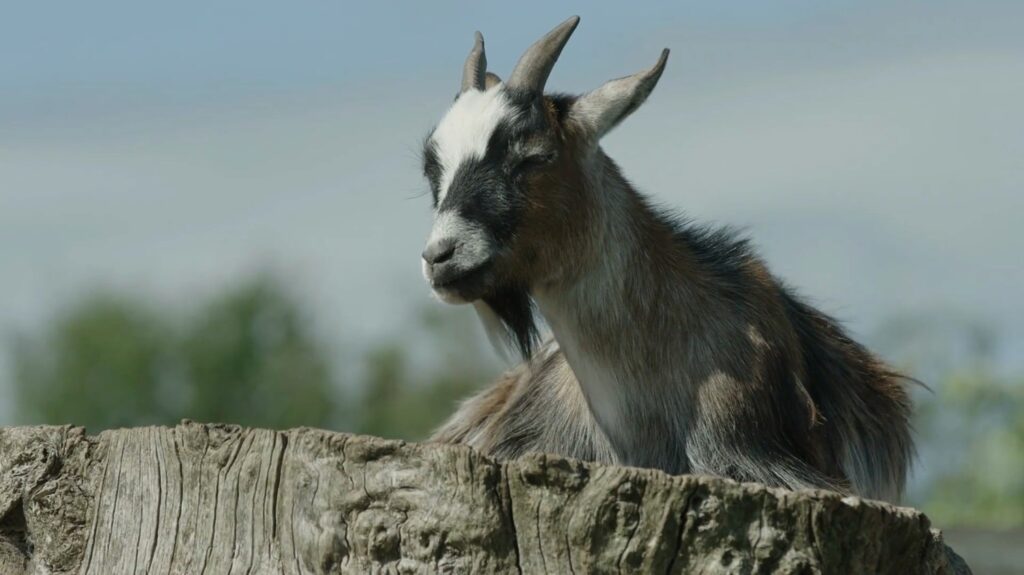
The American Pygmy Goat, a miniature marvel, is a popular breed developed from West African dwarf goats. These compact and stocky animals, reaching heights of just 16 to 20 inches, are known for their playful personalities and friendly nature. Their thick fur comes in a variety of colors like caramel, brown, and black, with some sporting charming markings. Despite their small size, American Pygmy Goats, one of the animals that start with A, are surprisingly social and thrive when kept with at least one companion. Easy to care for and adaptable, they make great companions for hobby farms or families with ample space, bringing joy with their curious and energetic spirit.
American Robin
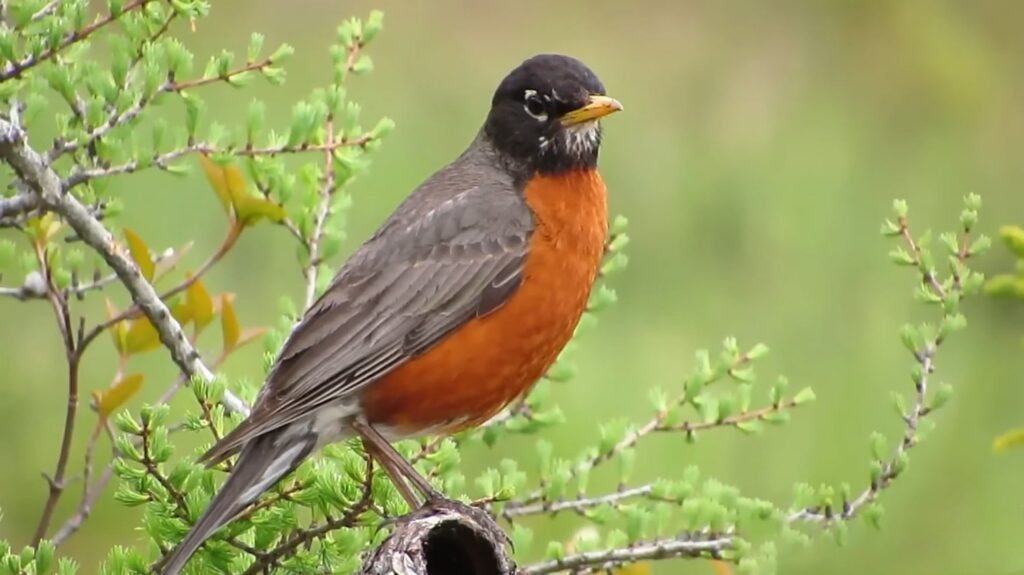
The American Robin, one of the animals that start with A, is a familiar sight across North America, gracing lawns and parks with its cheerful presence. A member of the thrush family, this robin is easily recognized by its warm, reddish-orange breast contrasting with its gray back. While best known for its melodic song, especially in early spring, the American Robin is an adaptable omnivore, feasting on worms in the morning and fruits later in the day. These common songbirds are migratory in some regions, but many stay year-round, adding a touch of vibrancy to the winter landscape.
American Staffordshire Terrier

The American Staffordshire Terrier, also nicknamed AmStaff, is a muscular, medium-sized American dog breed recognized for its loyalty and confidence. Standing at around 18-19 inches tall, these courageous companions are surprisingly affectionate with family, particularly children. Despite their strength, AmStaffs are known for their playful spirit and eagerness to please, making them trainable with consistent guidance.
Their short, smooth coat comes in a variety of colors, and they require moderate exercise to stay happy and healthy. While sometimes confused with American Pit Bull Terriers, AmStaffs are a distinct breed with the American Kennel Club (AKC) recognizing them for their good nature and intelligence.
American Toad
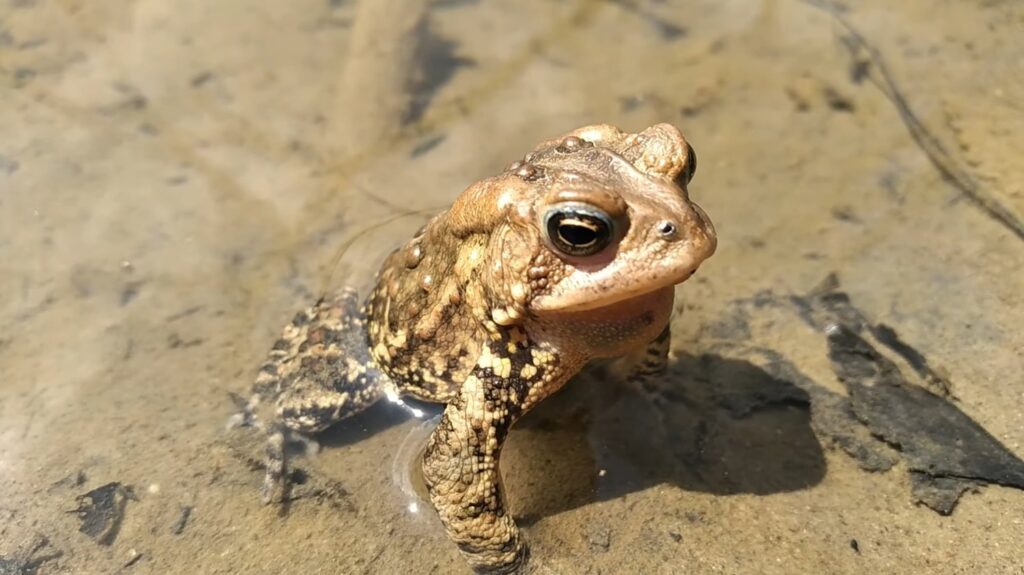
The American Toad, a common sight in backyards and gardens across eastern North America, is a stocky amphibian with a warty, bumpy exterior. Ranging in size from 2 to 4.5 inches, these nocturnal creatures come in various shades of brown, olive, or reddish-brown, often patterned with darker spots. American Toads are beneficial garden dwellers, feasting on insects like slugs and beetles, helping to control garden pests naturally. Their short legs are perfect for hopping, and they have a distinctive high-pitched trill to attract mates during breeding season. Though they might look warty and intimidating, American Toads are harmless to humans and make interesting backyard neighbors.
American Water Spaniel
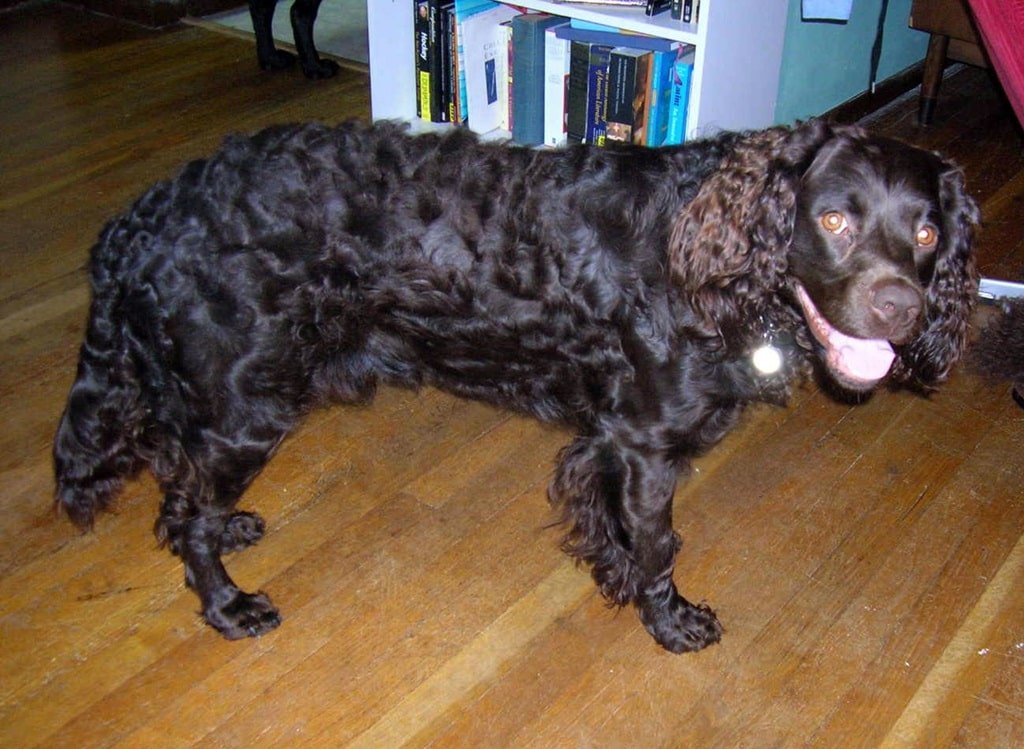
The American Water Spaniel is a medium-sized, energetic dog breed known for its love of water and playful spirit. Originating in Wisconsin, this versatile canine was bred to be an all-around hunting companion, particularly adept at retrieving waterfowl in cold waters. Their dense, curly coat repels water, and their webbed toes make them strong swimmers. American Water Spaniels are intelligent and eager to please, making them trainable and adaptable to various living situations with active families. While friendly with family, they can be reserved with strangers. Standing at 15 to 18 inches tall, these loyal companions come in a range of brown shades, including chocolate and liver.
American Wirehair

The American Wirehair is a unique breed of domestic cat instantly recognizable by its springy, wire-haired coat. This distinct feature is the result of a spontaneous genetic mutation that occurred in a litter of barn cats in upstate New York in 1966. Despite their spunky appearance, American Wirehairs are known for their easygoing and affectionate personalities, making them wonderful companions for families with children and other pets. These medium-sized cats come in a variety of colors and patterns, just like their close relative, the American Shorthair. Regular grooming helps maintain their unique coat and keeps them looking their best.
Amethystine Python
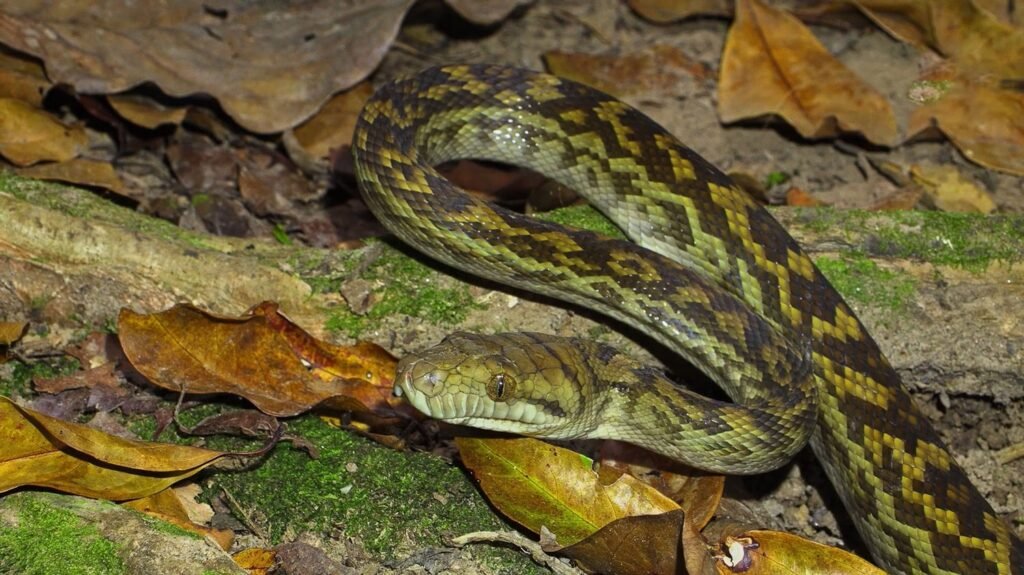
The Amethystine Python, also known as the Scrub Python, is one of the largest snakes in the world, reaching lengths over 18 feet (5.5 meters) and weighing up to 60 pounds (27 kg). Found in Indonesia, Papua New Guinea, and northern Australia, these non-venomous constrictors favor coastal rainforests and scrublands. They are ambush predators, lying in wait for prey like birds and mammals, then squeezing them to death with their powerful coils. Amethystine pythons, one of the animals that start with A, are a popular choice for reptile enthusiasts due to their stunning coloration, which can range from olive to golden brown with bold black markings. Despite their size, they are generally docile when captive-bred and well-cared for.
Amphicoelias Fragillimus
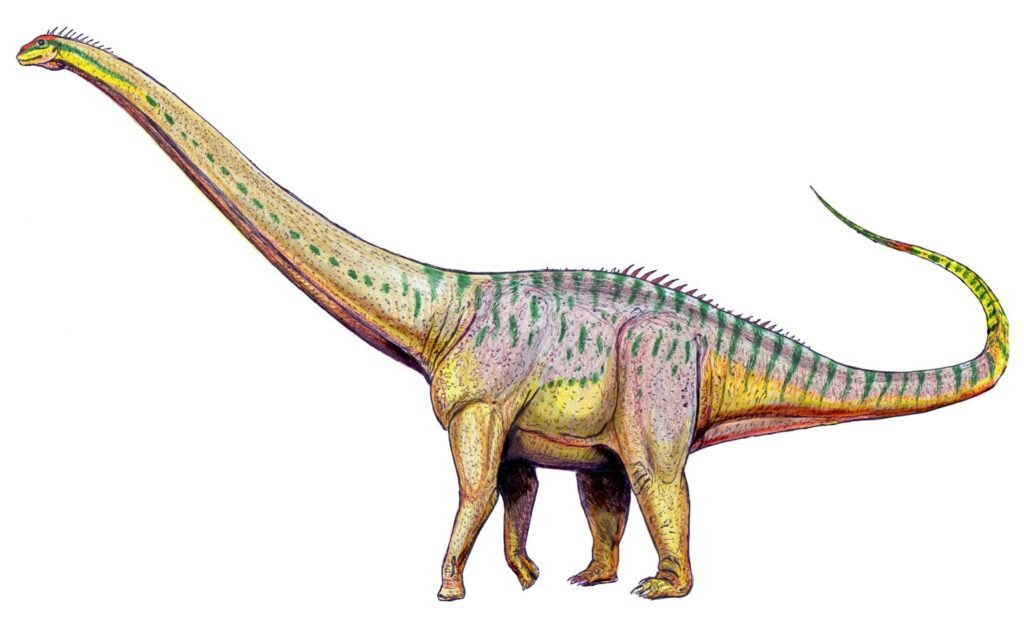
Maraapunisaurus fragillimus, formerly classified as Amphicoelias fragillimus, was a colossal sauropod dinosaur that inhabited North America during the Late Jurassic period, roughly 140 to 160 million years ago. Fossil evidence, unearthed in Colorado, suggests this herbivore possessed an exceptionally long neck, enabling it to browse foliage from high trees in its lush, forested or grassland environment.
However, due to the limitations of a single fossil specimen, size estimates for Maraapunisaurus fragillimus, one of the animals that start with A, have been widely debated. Initially hailed as the largest dinosaur ever discovered, re-evaluations of the skeletal fragment have led to a reassessment of its true proportions.
Amur Leopard
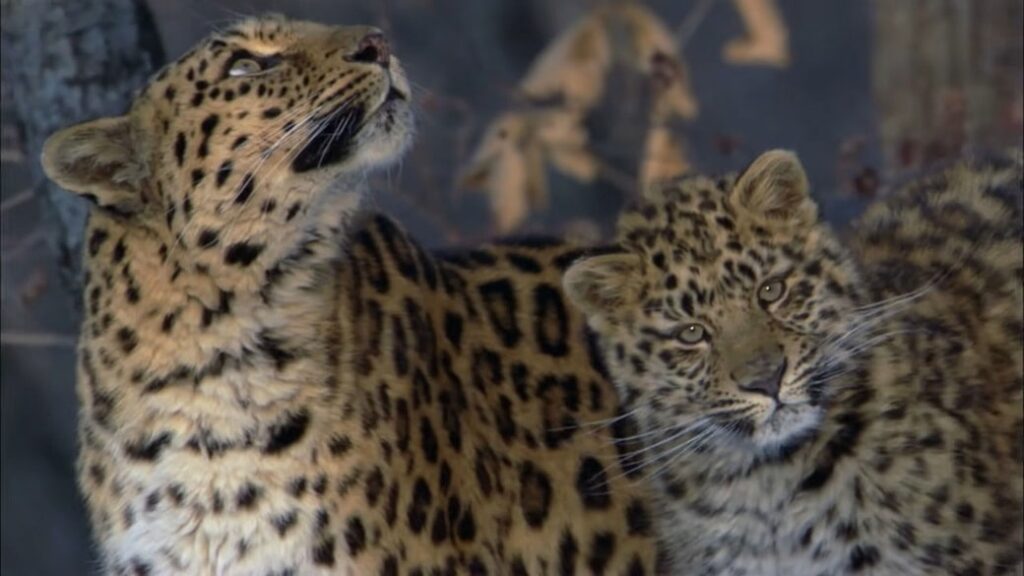
The Amur leopard, a marvel of adaptation, reigns as the rarest big cat on Earth. These solitary hunters, with thick fur for the frigid Russian Far East winters, patrol the border regions between Russia and China. Their spotted coats, larger than other leopards, provide excellent camouflage in the snowy forests. Despite their impressive size, Amur leopards are agile climbers and stealthy stalkers, taking down prey like deer and wild boar. Sadly, habitat loss and hunting have pushed them to the brink of extinction. Conservation efforts are underway to protect these magnificent big cats, aiming to ensure their survival for generations to come.
Anaconda
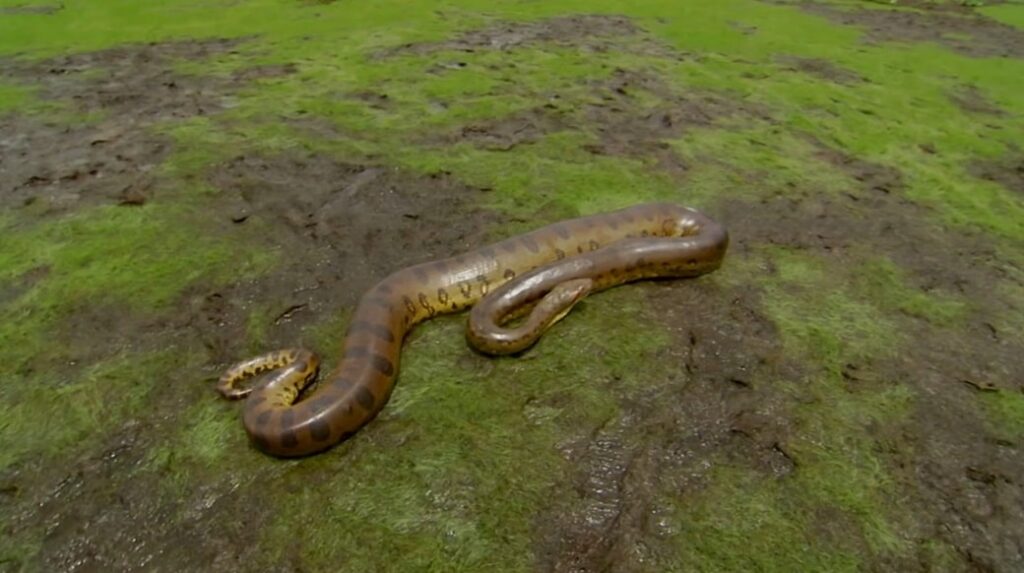
The anaconda reigns supreme as the world’s heaviest snake, reaching lengths of up to 20 feet. Native to South America, these giants inhabit the lush environments of the Amazon and Orinoco River Basins. Anacondas, one of the animals that start with A, are opportunistic feeders, with a varied diet that encompasses fish, birds, and even mammals. They are constrictors, relying on their powerful coils to squeeze the life out of their prey. Unlike egg-laying snakes, anacondas are ovoviviparous, giving birth to live young.
Anatolian Shepherd Dog
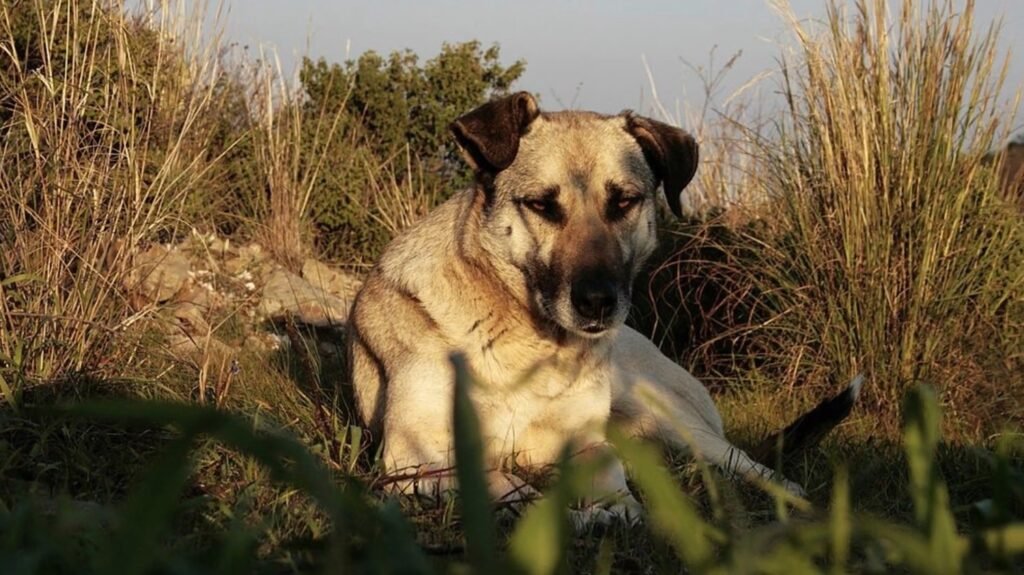
The Anatolian Shepherd Dog, a large and powerful breed originating from Turkey, boasts a rich history as a livestock guardian. Bred to protect flocks from predators in the Anatolian region, these courageous canines are renowned for their loyalty and unwavering devotion to their charges. Their independent nature, however, can pose a challenge during training. Early socialization is paramount for Anatolian Shepherds and due to their strong personalities, they are not recommended for first-time dog owners.
Anchovies
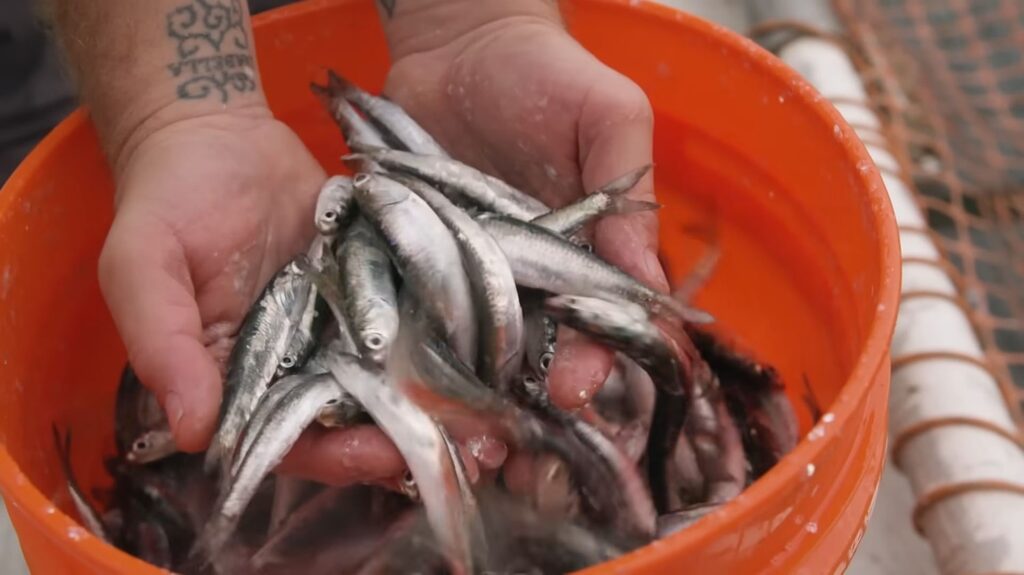
The anchovy, a small, greenish fish boasting a long history, belongs to the Engraulidae family and encompasses over 144 distinct species. Primarily inhabiting temperate saltwater and brackish waters, these forage fish feed on plankton and recently hatched fish. Anchovies themselves constitute a critical food source for a multitude of marine animals, including humans. They are commercially caught for consumption and are frequently used in sauces and as pizza toppings. Given their vital role within the marine ecosystem, careful management of anchovy populations is essential.
Andrewsarchus
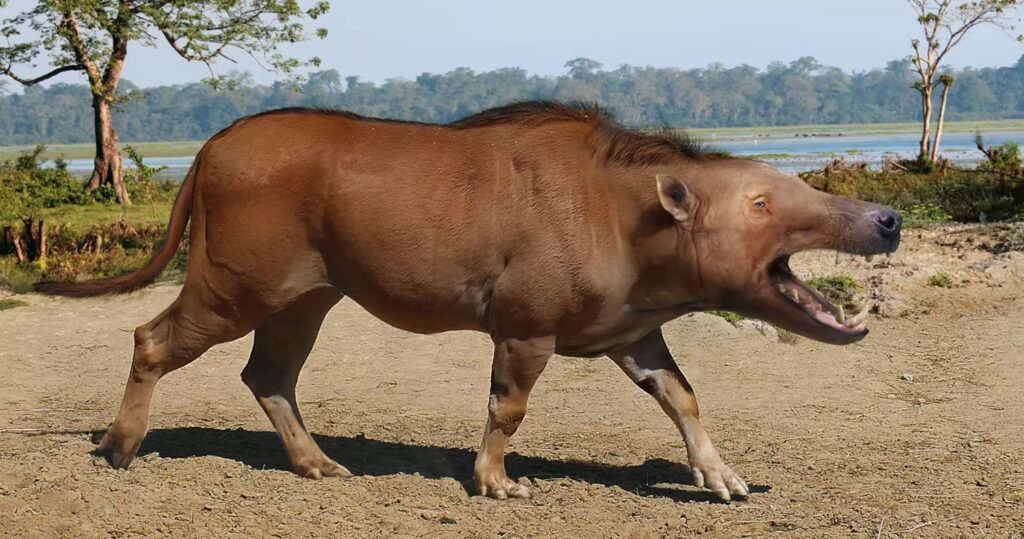
The Andrewsarchus, an extinct terrestrial mammalian carnivore, reigns supreme as the largest land-dwelling meat-eater ever to have walked the Earth. This colossal creature roamed what is now Inner Mongolia, China, during the Middle Eocene epoch, approximately 41 to 38 million years ago. While the specifics of its hunting style remain debated, its imposing size and powerful jaws suggest it likely engaged in both scavenging and active predation. Prey may have included turtles, carrion, and even shellfish. Sadly, the Andrewsarchus, one of the animals that start with A, met its demise due to a shift in climatic conditions.
Angelfish
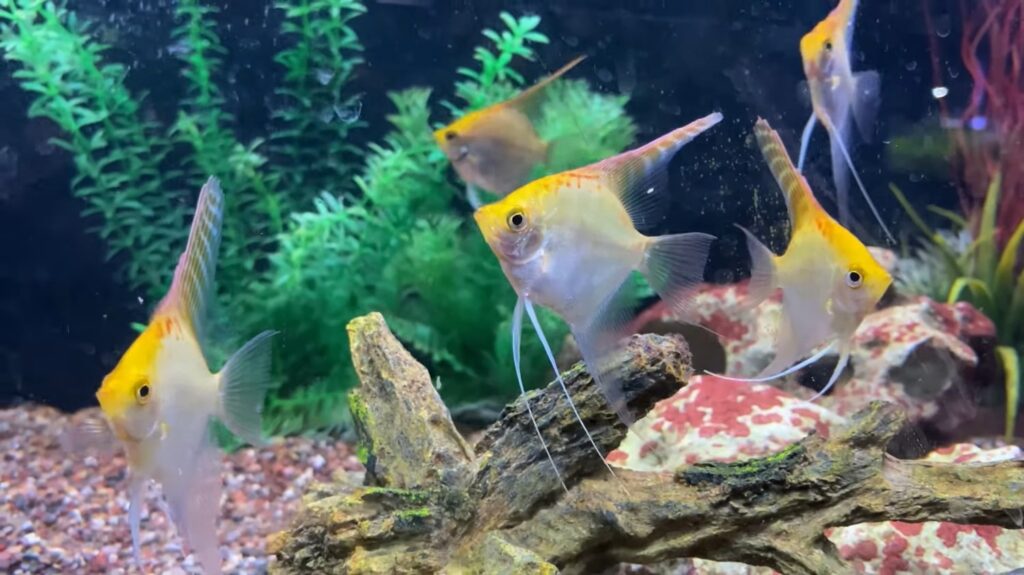
The Angelfish, a dazzling inhabitant of the world’s coral reefs, boasts over 90 vibrantly colored species. These captivating saltwater fish grace the Indian, Atlantic, and western Pacific Oceans, flitting amongst the vibrant underwater landscapes. Angelfish are opportunistic feeders, classified as omnivores. Their diet consists of a diverse range of food sources, including sponges, algae, and small crustaceans. While their average size falls within the range of 24 inches, some species can reach even more impressive lengths. An intriguing characteristic of the Angelfish is its sequential hermaphroditism, allowing them to transition between sexes throughout their lifespan.
Angelshark
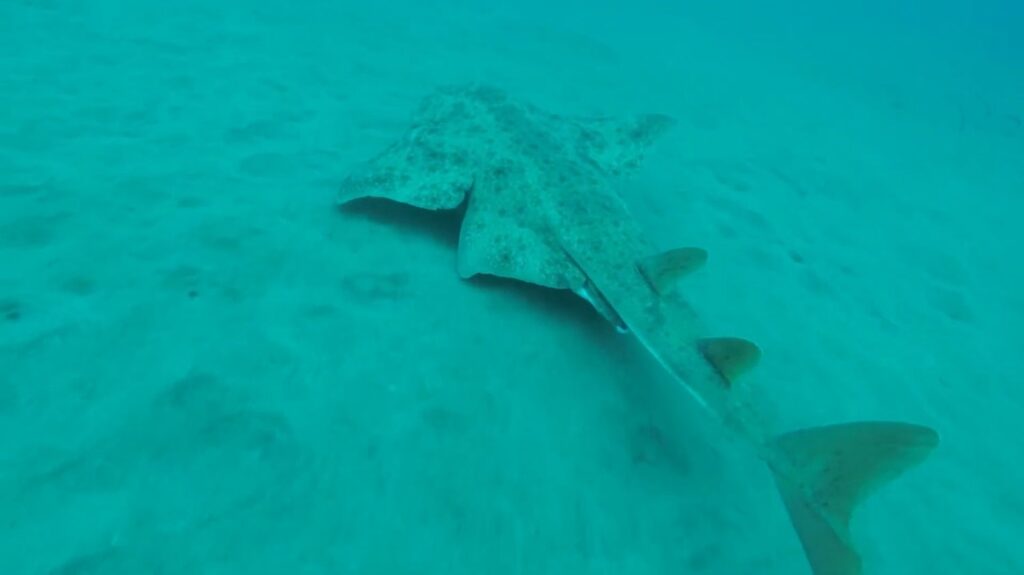
The Angelshark, a master of disguise, is a bottom-dwelling shark facing significant threats. Once abundant in the Mediterranean Sea and Eastern Atlantic, its population has alarmingly declined by over 80%. This nocturnal predator utilizes its unique, flattened body to seamlessly blend into the sandy or muddy seabed. By lying in wait, the Angelshark ambushes unsuspecting prey, which primarily consists of fish, crustaceans, and mollusks. While not typically aggressive towards humans, they can inflict a bite if provoked. Unfortunately, human fishing poses the greatest danger to the Angelshark’s continued existence.
Angled Sunbeam Caterpillar
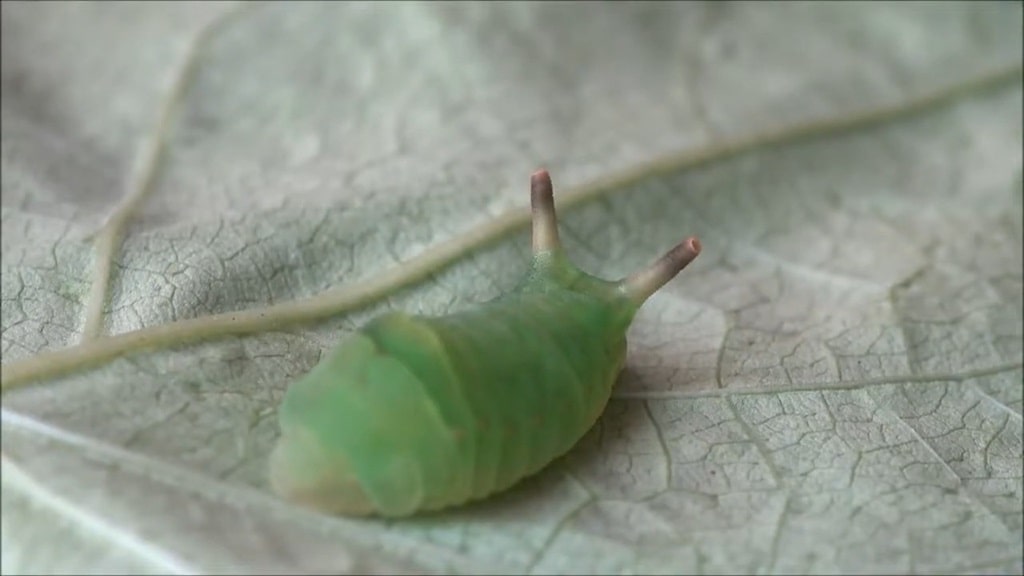
The Angled Sunbeam caterpillar, a vibrant green larva belonging to the gossamer wing butterfly family, adorns the forests of Southeast Asia. These fascinating creatures spend their caterpillar stage feasting on the leaves of broadleaf trees and shrubs. When threatened, a unique defense mechanism comes into play – they unfurl specialized “periscopes” that release startling tentacles, effectively deterring potential predators. Upon reaching adulthood, the Angled Sunbeam caterpillar undergoes a metamorphosis, emerging with stunning wings. These wings, exhibiting sexual dimorphism, boast contrasting colors – orange and black for males and black and white for females. The wings not only provide camouflage within their leafy surroundings but also aid in regulating the butterflies’ body temperature.
Anglerfish
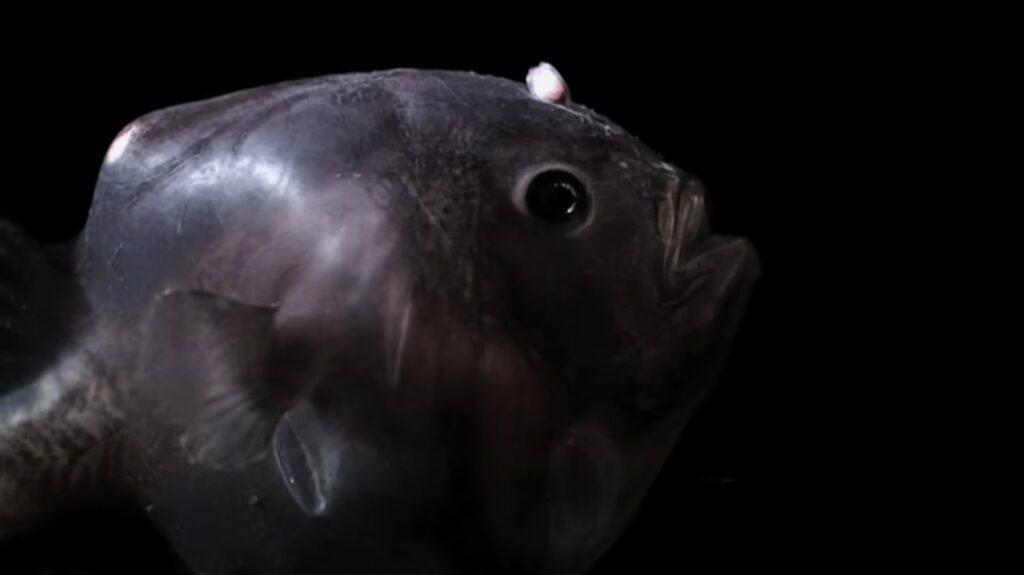
The anglerfish, one of the animals that start with A, is a strange and fascinating fish that lives in the deep, dark ocean. It has a special lure that glows to attract prey, kind of like a fishing rod! This lure is a modified dorsal fin that dangles in front of its gaping maw. The anglerfish comes in all sorts of shapes and sizes, but they all have big teeth to catch their dinner.
These deep-sea dwellers can live for up to 25 years. They reproduce by releasing eggs and sperm into the water. In some anglerfish species, the male attaches himself to the female after spawning and receives nutrients from her. This is a strange adaptation that helps ensure the survival of the male anglerfish in the harsh environment of the deep ocean.
Angora Ferret
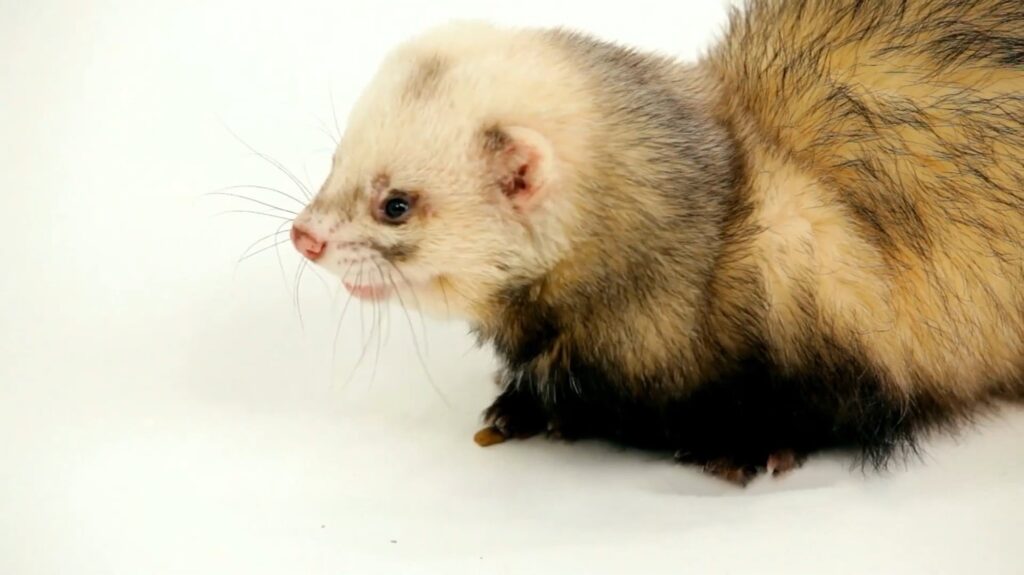
The Angora ferret, a longhaired variety of the domestic ferret, is a product of accidental breeding in Sweden. These playful, social, and curious creatures have become popular pets. As carnivores, they require a diet rich in protein. Due to their inquisitive nature and potential for destructive behavior, supervision is recommended when Angora ferrets, one of the animals that start with A, are outside their cages. The good news is that these charming animals come in a wide variety of coat colors and typically do not require spaying or neutering until they reach one year of age.
Angora Goat
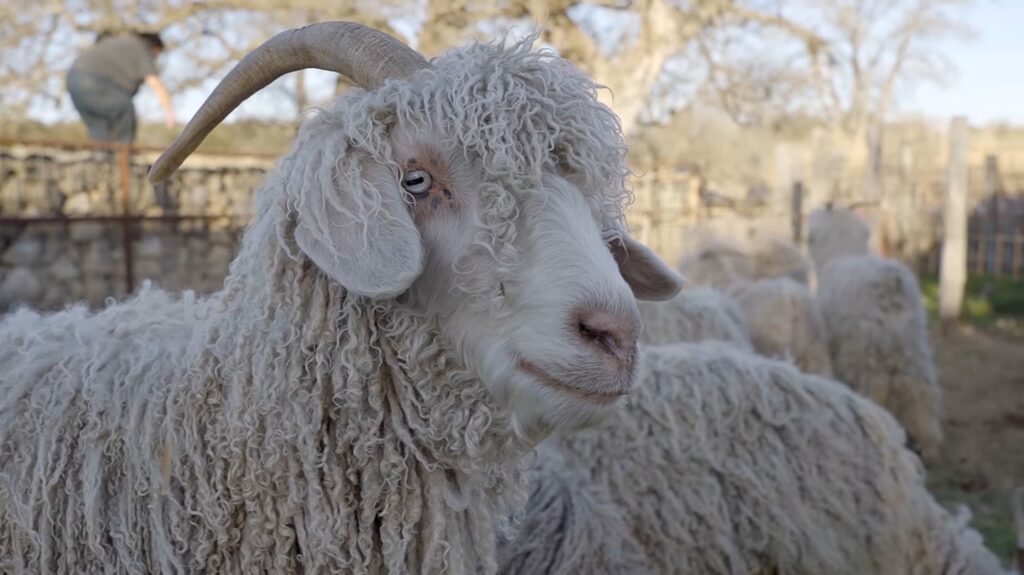
The Angora goat is prized for its luxurious coat of mohair, a long and lustrous fiber used in the production of clothing. Originally from the Ankara region of Turkey, these social animals are now raised on farms around the world, with South Africa, Turkey, and the United States being the leading producers. Angora goats are relatively easy to care for, but their fleece requires shearing twice a year to harvest the mohair. These gentle creatures are susceptible to parasites and predators, necessitating proper care and vigilance from farmers to ensure their health and well-being.
Anhinga
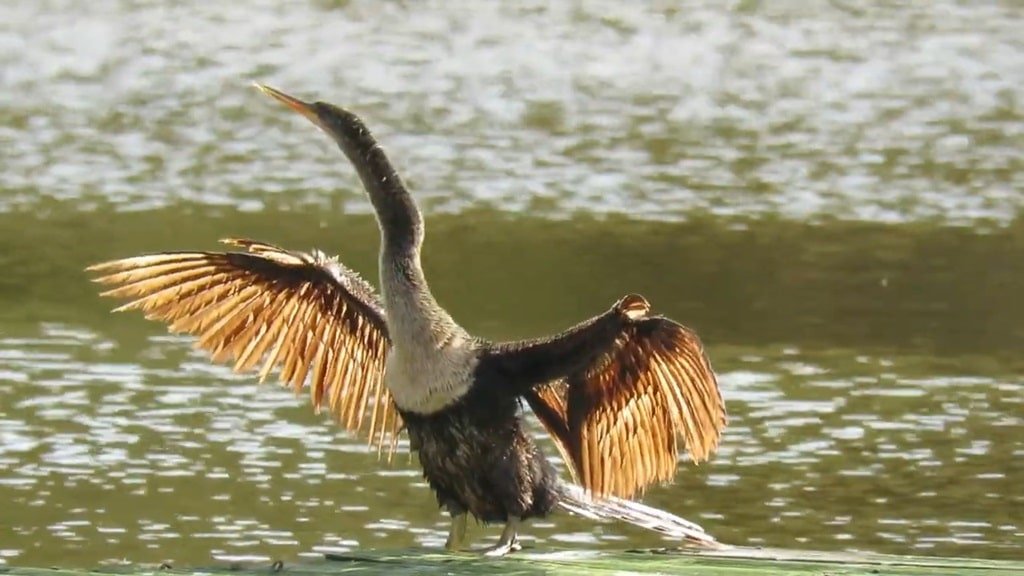
The Anhinga, a water bird recognized for its serpentine neck and adeptness at diving underwater, is featured in this article. These birds inhabit regions of South, Central, and North America. Anhingas favor nesting in colonies situated near freshwater sources, like marshes, and lay clutches containing 2 to 6 eggs. Their offspring are reliant on parental care upon hatching, fledging at around 6 weeks old. Classified as carnivores, Anhingas, one of the animals that start with A, consume a varied diet that includes fish, snakes, and crayfish.
Anna’s Hummingbird
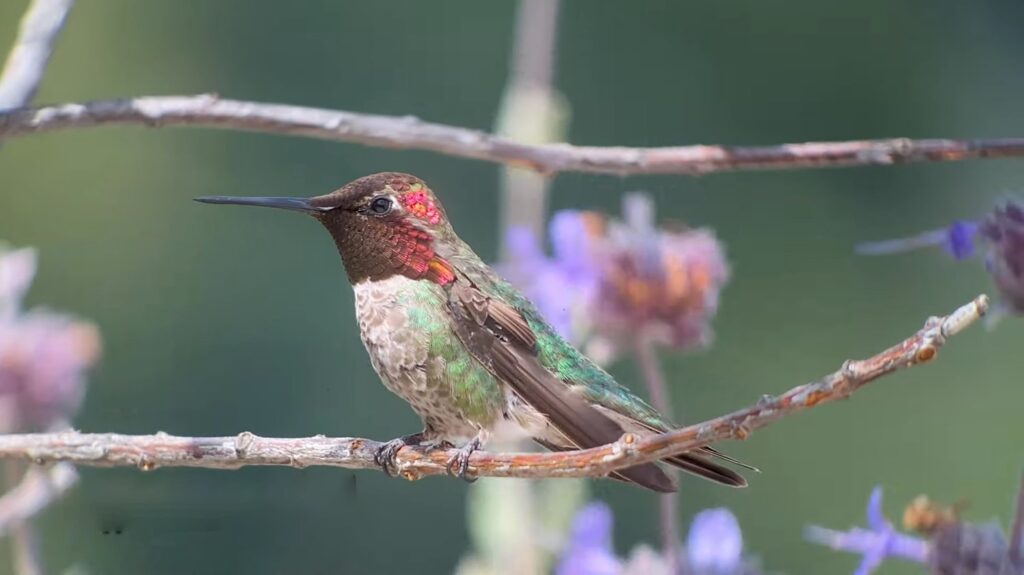
The Anna’s Hummingbird, a tiny bird with dazzling iridescent feathers, is a common sight along the Pacific Coast of North America. These fast flyers are fiercely territorial, defending their feeding grounds where they sip nectar from flowers and snatch small insects. Despite their diminutive size, Anna’s Hummingbirds are adept hunters, hovering in mid-air to capture their prey. Females take sole responsibility for nest building and chick rearing, constructing intricate nests in trees and raising their young without assistance from the males. Thankfully, the Anna’s Hummingbird population is thriving and on the rise.
Anole Lizard
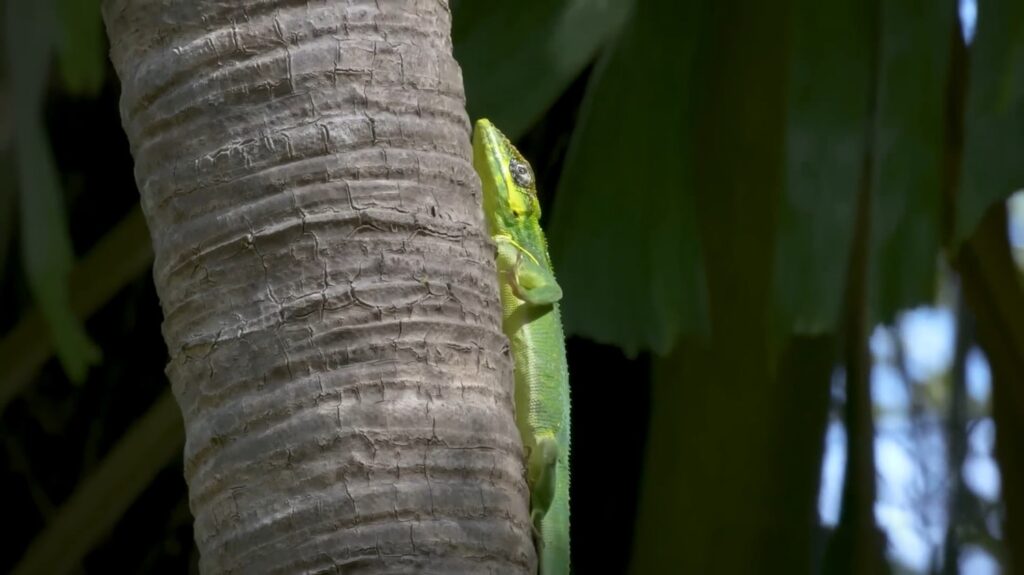
The anole lizard boasts an impressive diversity, with over 400 vibrant species, most of which possess the remarkable ability to change color. These fascinating reptiles inhabit Central and South America, with a few species even extending their range into North America. The Green Anole holds the distinction of being the sole representative native to the United States. Anoles are primarily insectivores, but their diet can also encompass vegetation and nectar. Unfortunately, they themselves fall prey to birds, snakes, and various mammals. Male anoles can be easily identified by their colorful dewlap, a throat pouch they use to attract mates. Anole reproduction involves the female laying clutches of one or two eggs at a time.
Anomalocaris
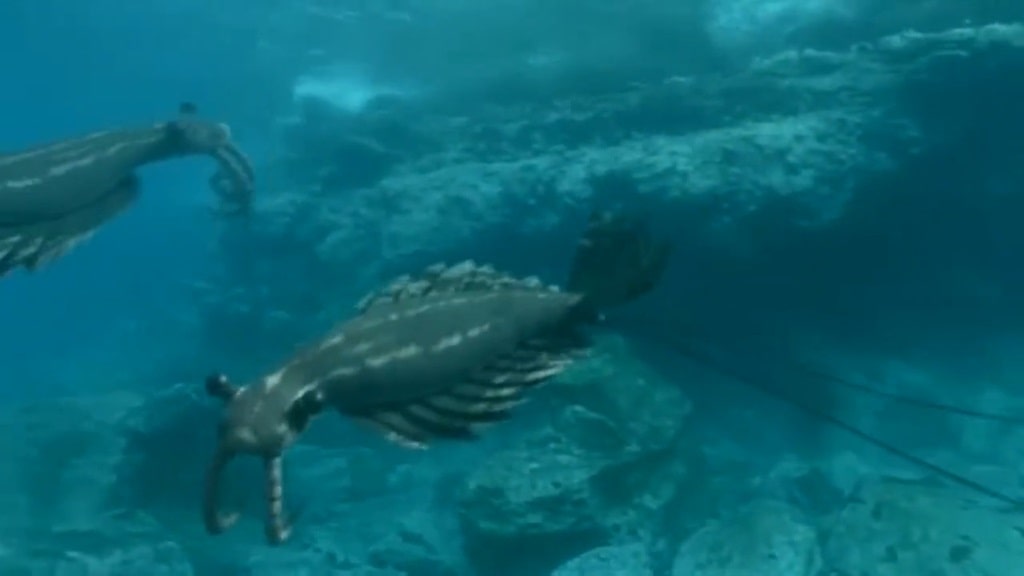
The Anomalocaris was a giant shrimp-like predator that thrived during the Cambrian period, a very early era in Earth’s history. This fascinating creature possessed a unique body with flaps that propelled it through the water. Its head was large and boasted complex eyes, along with a mouth equipped with numerous overlapping plates. While scientists believe the Anomalocaris, one of the animals that start with A, reigned supreme as an apex predator, the exact details of its diet remain a topic of debate. Fossils of this ancient arthropod have been unearthed in various locations across the globe.
Ant
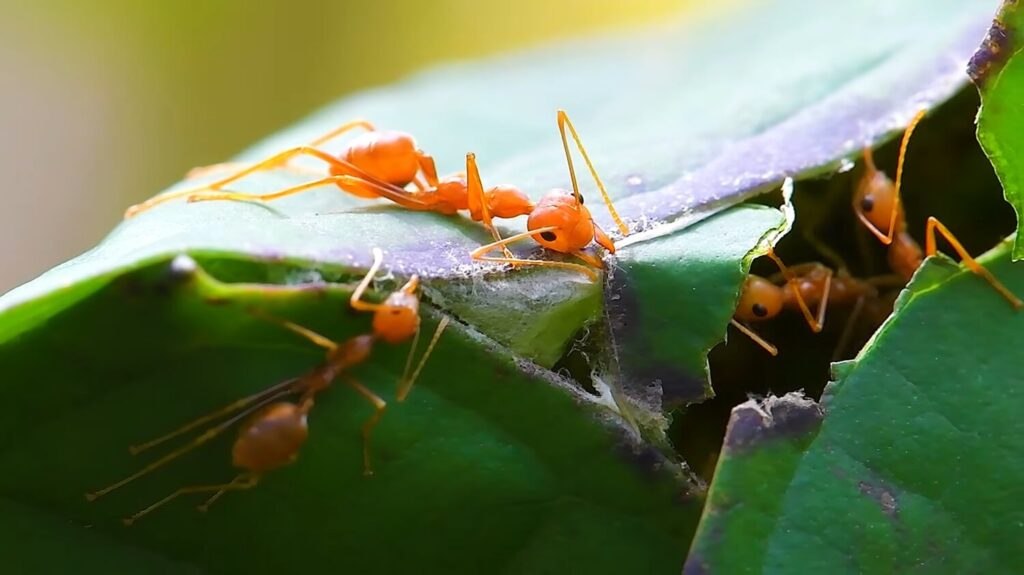
The ant is a social insect that has thrived for millions of years, with over 12,000 identified species dwelling across the globe, excluding Antarctica and the Arctic. These fascinating creatures live in colonies that can vary significantly in size, ranging from a few thousand to millions of strong. Each colony is centered around a queen ant, whose primary responsibility is reproduction. Worker ants, the majority of the colony, tirelessly gather food and nurture the young. Interestingly, some ant species even possess the ability to fly. When it comes to diet, ants are omnivores, consuming a diverse range of food sources including leaves, fungi, and even other insects.
Antarctic Scale Worm
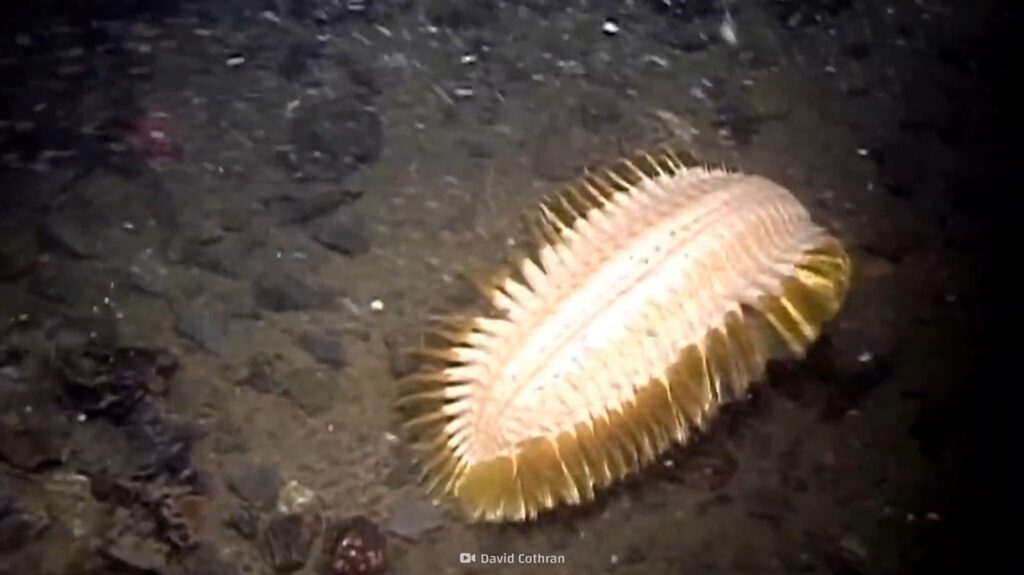
The Antarctic scale worm is a fascinating creature that thrives in the frigid waters surrounding Antarctica. This carnivore, reaching lengths comparable to a rat or squirrel, boasts a color palette of yellow, gold, or grey-brown. Its body is shielded by fifteen pairs of protective scales, and sharp teeth equip it to seize its prey. The Antarctic scale worm makes its home on the deep ocean floor, dwelling between 1,706 and 2,198 feet below the surface. Here, it hunts for sustenance, with pantopoda sea spiders and other marine life falling victim to its predatory instincts. However, the Antarctic scale worm, one of the animals that start with A, is not without its own threats – cock shrimp pose the greatest danger to this remarkable deep-sea dweller.
Anteater
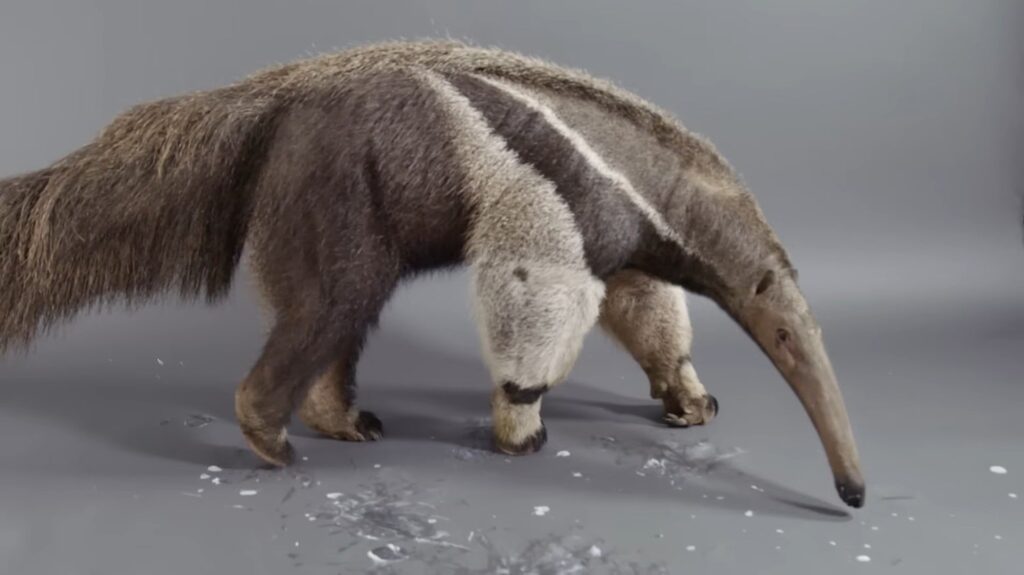
The article describes the anteater, a fascinating insectivore native to Central and South America. Four distinct species exist: the giant anteater, the silky anteater, the northern tamandua, and the southern tamandua. Easily recognizable by their elongated snouts and sticky tongues, anteaters, one of the animals that start with A, are perfectly adapted to their diet of ants and termites, for which they lack teeth altogether. The giant anteater reigns supreme as the largest species, capable of consuming a staggering 35,000 insects in a single day. Despite their solitary nature, anteaters are an important part of the ecosystem and are classified as either vulnerable or of least concern on the IUCN Red List.
Antelope

The term “antelope” encompasses a diverse group of hoofed mammals native to Africa and parts of Asia. Despite the common perception, it’s not a strictly scientific classification. There are over 90 antelope species, with sizes ranging from the diminutive royal antelope, weighing a mere 4 pounds, to the giant eland, tipping the scales at a mighty 1,800 pounds. These herbivores favor open grasslands and wooded areas, with some species even venturing into highland forests or arid regions. While territorial behavior exists in some antelope species, with males defending their turf, others live in roaming herds. Sadly, habitat loss and hunting pressures threaten some antelope populations, highlighting the importance of conservation efforts.
Anteosaurus
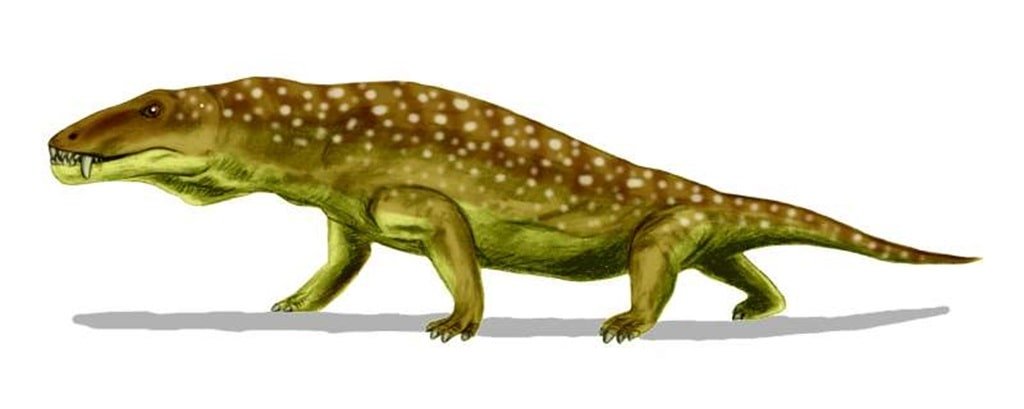
This is an article about a large mammal-like reptile called the Anteosaurus. It lived during the Permian Period in what is now South Africa. The Anteosaurus looked like a crocodile, but it was actually more closely related to mammals. It was an apex predator that could grow up to 19 feet long and weighed around 1300 pounds.
The Anteosaurus had a thick skull and sharp teeth. It also had a long tail and weak limbs, which suggests that it spent a lot of time in the water. Scientists believe that the Anteosaurus, one of the animals that start with A, may have competed with each other for territory or mates using their thick skulls. The Anteosaurus died out during the Permian-Triassic mass extinction about 250 million years ago. It has no living relatives.
Antiguan Racer Snake
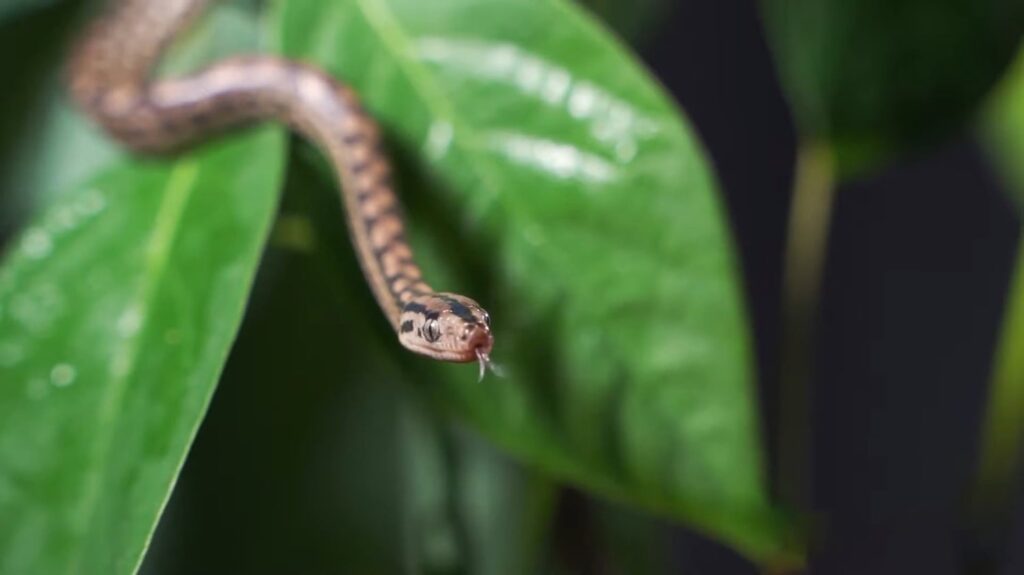
The Antiguan racer snake, once dubbed the world’s rarest snake, has made a remarkable comeback. Endemic to the island nation of Antigua and Barbuda, this harmless, grey-brown, rear-fanged snake was nearly driven to extinction by invasive predators like mongooses and habitat loss. By 1995, only around 50 individuals remained on a single offshore island.
Conservation efforts have proven highly successful. Through a multi-pronged approach that included eradication of invasive species, reintroduction to predator-free islands, and public education campaigns, the Antiguan racer population has surged. Today, over 1,100 individuals slither across four separate Antiguan sites, a testament to the power of conservation and the resilience of this unique island reptile.
Ape
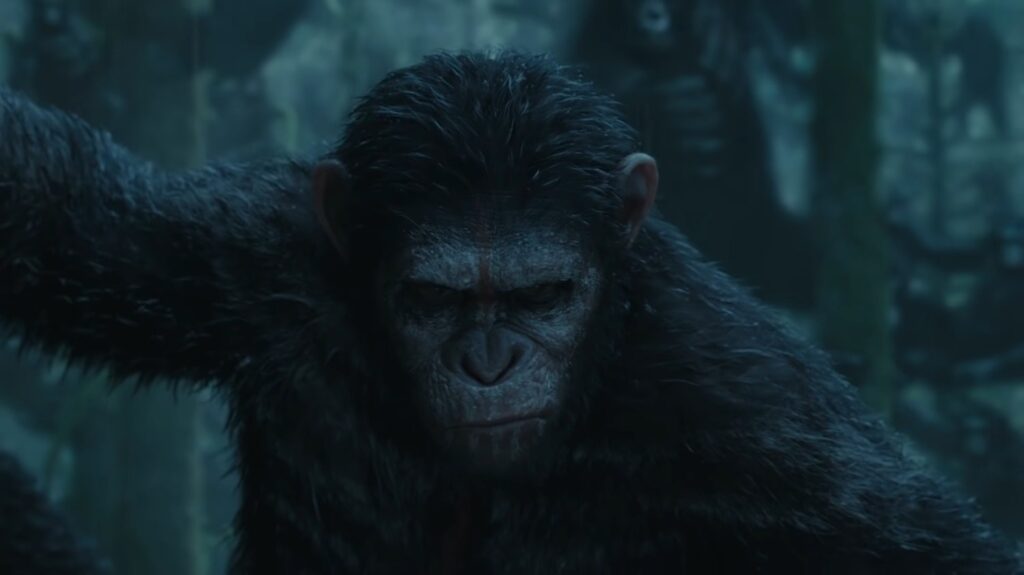
The term “ape” encompasses a diverse group of intelligent primates native to Africa and Southeast Asia. While sometimes confused with monkeys due to their taillessness, apes are classified within the superfamily Hominoidea, distinct from monkeys in the superfamily Cercopithecoidea. There are two main classifications of apes: lesser apes (gibbons) and great apes (chimpanzees, bonobos, orangutans, and gorillas). Great apes are known for their impressive intelligence, complex social structures, and remarkable problem-solving abilities. Sadly, habitat loss, poaching, and the illegal pet trade threaten many ape populations, highlighting the urgent need for conservation efforts.
Apennine Wolf
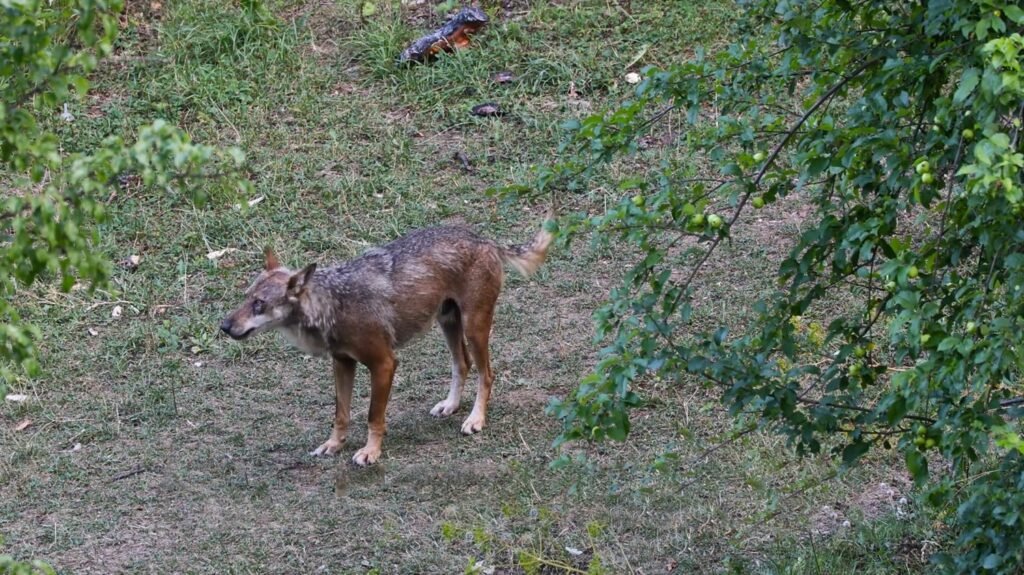
The Apennine wolf, also known as the Italian wolf, is a subspecies of the gray wolf native to the Italian Peninsula. This apex predator plays a vital role in the ecosystem, keeping prey populations in check. Apennine wolves boast a coat of greyish-brown, white, and black fur that takes on a reddish hue during the summer months. They are social creatures that live in packs of 2-12 individuals and communicate through a combination of vocalizations and body language. These wolves primarily predate on deer, wild boar, and chamois. Sadly, the Apennine wolf faced near extinction in the 1970s due to illegal hunting. Thankfully, conservation efforts have led to a rise in their numbers, making the future look brighter for this important predator.
Appenzeller Dog

The Appenzeller Sennenhund, also known as the Appenzeller, is a medium-sized, working dog breed originating from the Appenzell region of northeastern Switzerland. One of four distinct Swiss mountain dog breeds, the Appenzeller is instantly recognizable by its tri-colored coat of black, brown, and white. These lively and intelligent dogs were traditionally used as herding dogs, guarding livestock and pulling carts. Their independent nature, however, requires experienced owners who can provide consistent training and a firm hand.
Appenzellers are energetic and require ample exercise and mental stimulation to thrive. While well-socialized Appenzellers, one of the animals that start with A, are known for being affectionate with family, their wariness of strangers necessitates proper introductions. For active individuals seeking a loyal and hardworking companion, the Appenzeller Sennenhund can be a rewarding breed.
Apple Head Chihuahua

The Apple-head Chihuahua, the poster child of the Chihuahua breed according to the American Kennel Club (AKC) standards, boasts a distinctive dome-shaped skull that resembles an apple. This characteristic head shape, along with a short snout meeting the forehead at a near 90-degree angle, sets them apart from their Deer-head Chihuahua counterparts.
Typically weighing in at 2 to 6 pounds and standing just 6 to 9 inches tall, Apple-heads are the smaller variety within the Chihuahua breed. They often have short, smooth coats, although a longhaired variant exists as well. Despite their diminutive size, Apple-head Chihuahuas, one of the animals that start with A, possess a feisty spirit and boundless loyalty, making them popular companions for those seeking a small, affectionate dog.
Apple Moth
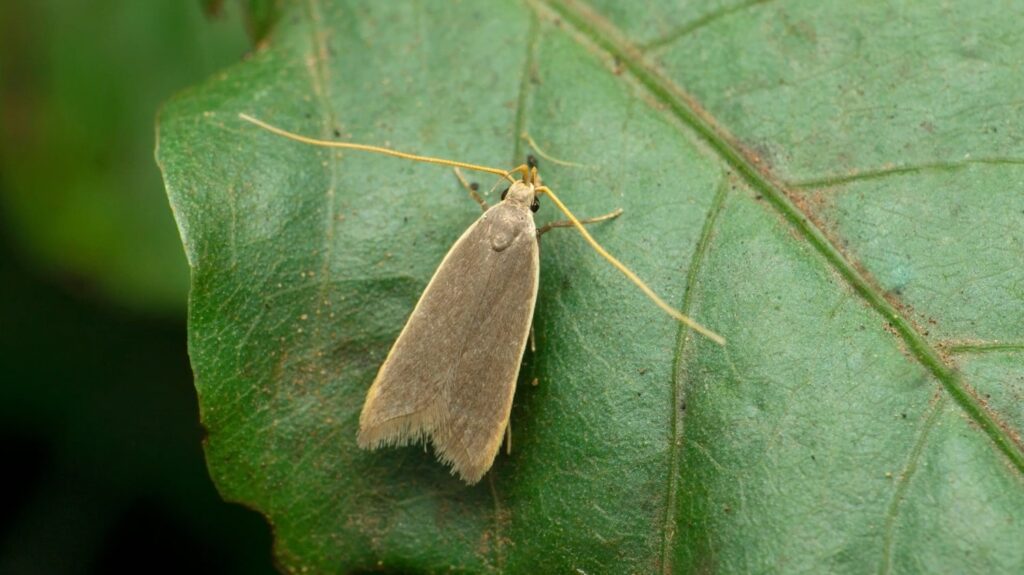
This is an article about the Light Brown Apple Moth, a native Australian insect that has become invasive in other parts of the world. The article explores the moth’s origins, its spread, and the damage it inflicts on crops. Light Brown Apple Moths are responsible for millions of dollars in agricultural losses each year, as they target a wide variety of fruits and vegetables. The female moth lays eggs on plants, and the hatched caterpillars consume both the leaves and fruits. Thankfully, there are methods to control the moth population, including traps and other control strategies.
Arabian Cobra

The Arabian cobra, a fearsome inhabitant of the Arabian Peninsula, reigns supreme as the sole true cobra species in the region. This venomous snake, classified as Naja arabica, is easily identified by its wide hood, which it expands to threaten predators. Ranging from western and southern Saudi Arabia to Yemen and Oman, the Arabian cobra, one of the animals that start with A, prefers rocky valleys, wadis (seasonal watercourses), and farmlands for its habitat. While its exact size can vary, these elusive snakes typically reach lengths between 4 and 6 feet. Despite its shy nature, the Arabian cobra’s venom is highly toxic and potentially lethal if left untreated. Thankfully, antivenom is readily available, making bites a treatable medical emergency.
Arabian Wolf
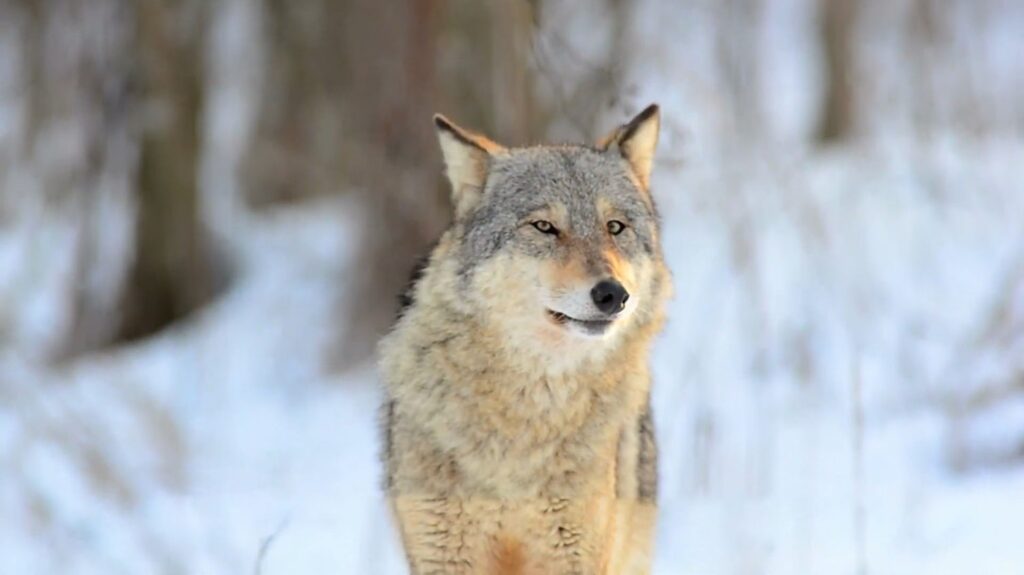
The Arabian wolf, the smallest subspecies of gray wolf, is remarkably adapted to its desert environment. Their smaller size is an advantage in conserving water in the arid climate. Unlike most wolves, Arabian wolves are omnivores and will consume fruits and scavenged garbage in addition to their primary diet of meat, which includes hares, rodents, and small ungulates. These social creatures typically live in small packs of 3-4 members and unlike many other wolf species, rarely howl. Sadly, the Arabian wolf, one of the animals that start with A, is critically endangered due to several threats including habitat loss from urbanization, hunting, and disease.
Arafura File Snake
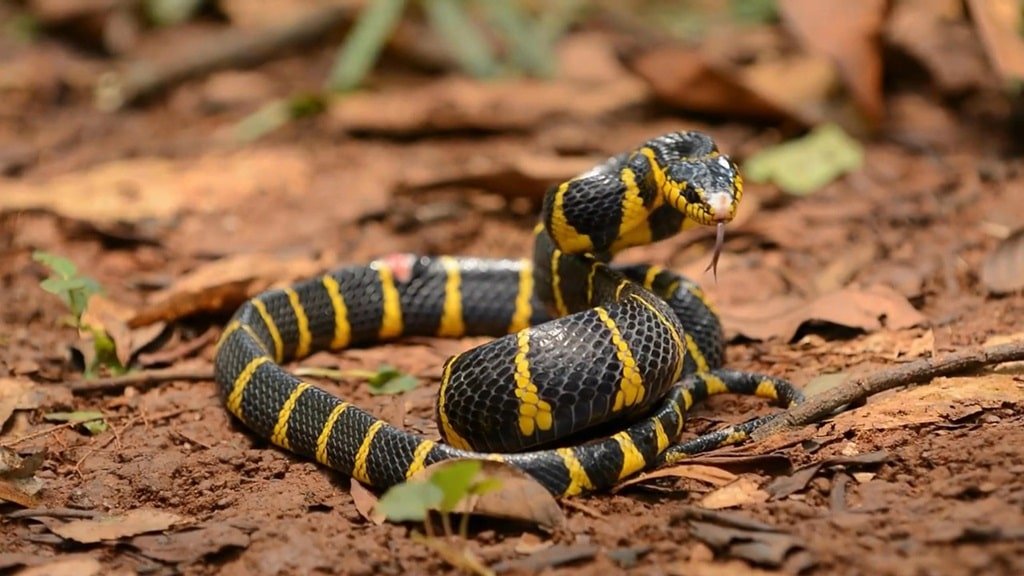
The Arafura File Snake is a large, non-venomous snake found in freshwater habitats of Australia, Indonesia, and Papua New Guinea. Its namesake file-like skin aids it in catching fish, its primary prey. This light brown or gray snake with black markings can grow up to five feet long. Arafura File Snakes, one of the animals that start with A, reproduce every 8-10 years, giving birth to litters of 10-27 live young. These snakes are not considered a threat to humans and are in fact hunted as a food source by some indigenous Australians.
Arambourgiania
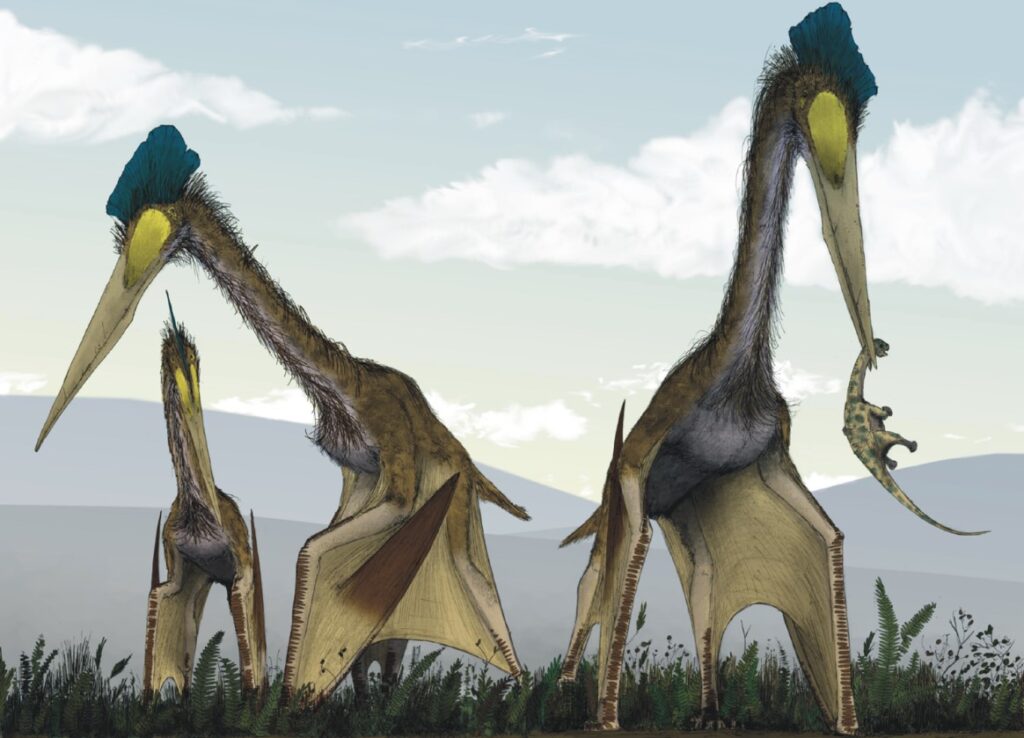
The Arambourgiania was a colossal pterosaur, a type of flying reptile, that dominated the skies during the Late Cretaceous period, alongside dinosaurs and other pterosaurs. With a wingspan reaching an estimated 25-30 feet, this magnificent creature dwarfed most known pterosaurs. Its most striking feature was its elongated neck, which some scientists believe could have been as long as its body. This unique anatomy likely played a significant role in its feeding strategy.
While the exact details of its diet remain under investigation, scientists hypothesize that the Arambourgiania was a carnivore, utilizing its long neck and sharp beak to capture prey. Its large size suggests it may have targeted a wider range of animals compared to smaller pterosaurs. Some theories propose it scavenged or hunted carrion on land, while others suggest it snatched fish from the water’s surface. The precise hunting strategy of this aerial giant remains an open question.
Arapaima
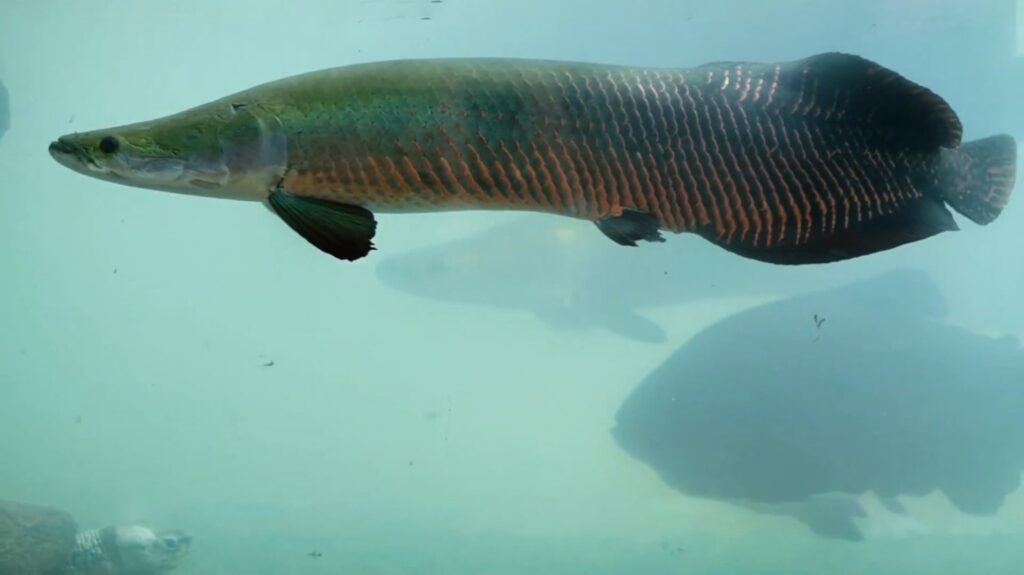
The Arapaima, a giant freshwater fish native to South America, reigns supreme as one of the world’s largest freshwater fish, reaching lengths of up to 15 feet. These bony fish with elongated bodies and tails are apex predators, primarily feeding on other fish but also incorporating fruits and seeds into their diet. Arapaima, one of the animals that start with A, are a crucial food source for local South American communities. However, due to unsustainable fishing practices, their population status is classified as data deficient, highlighting the need for conservation efforts to ensure the survival of this remarkable species.
Archaeoindris
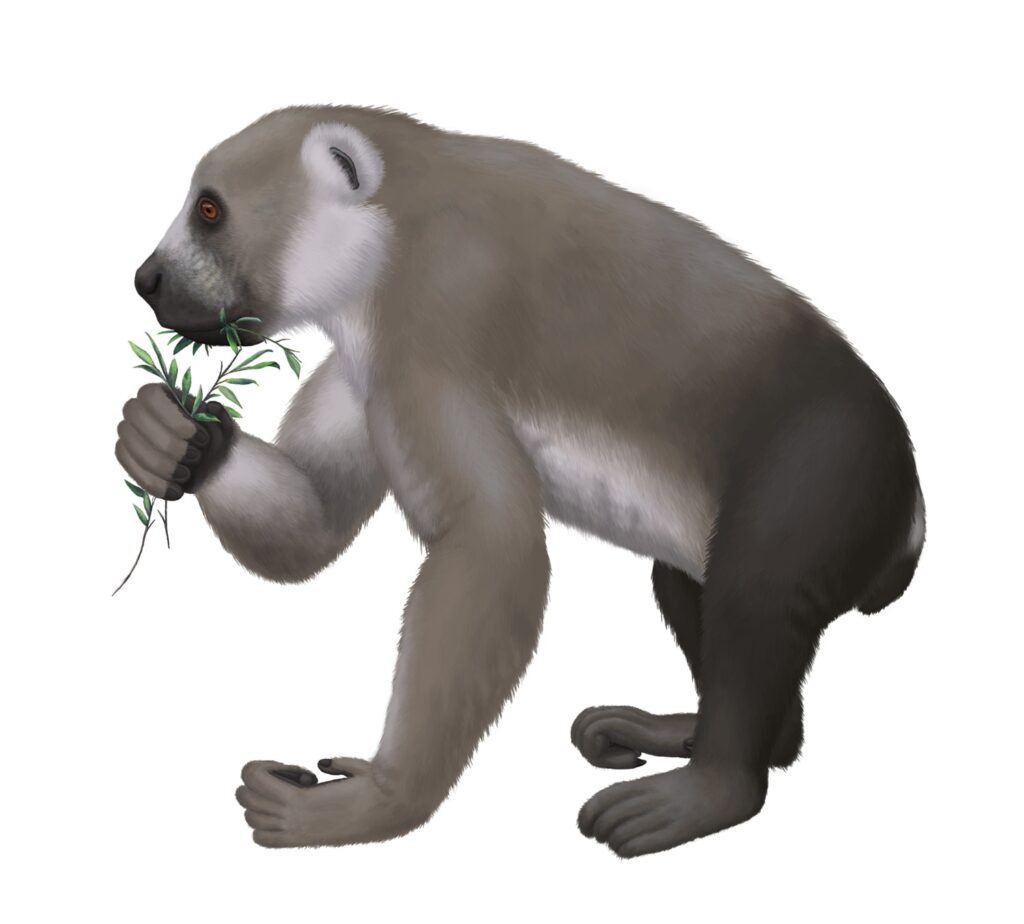
The Archaeoindris, an extinct giant lemur, ruled the forests of Madagascar as the island’s largest primate until its disappearance around 350 BCE. Towering over the forest floor, this colossal herbivore rivaled the size of an adult male gorilla, making it a truly magnificent creature. Scientists believe the closest living relatives of the Archaeoindris are the indri, sifakas, and woolly lemurs, offering a glimpse into the possible social behaviors and adaptations of this giant lemur.
Despite the abundance of lemurs in Madagascar today, the Archaeoindris belonged to a distinct family known as the Palaeopropithecidae, or sloth lemurs. Although the name suggests a connection to sloths, these lemurs evolved independently and share no close relation. Unfortunately, most fossils discovered for the Archaeoindris are cranial bones, making it challenging to pinpoint its exact size. However, estimates place its weight between 160 and 244 kilograms.
Archaeopteryx
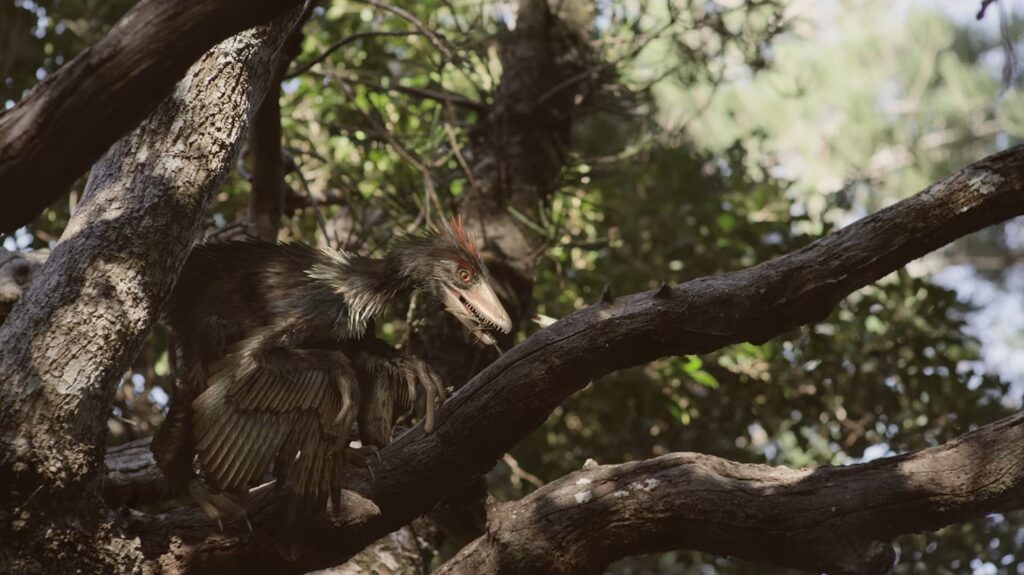
The Archaeopteryx, a bird-like dinosaur that lived in the Late Jurassic period around 150 million years ago, has captivated scientists for decades. Roughly the size of a raven, this fascinating creature possessed a unique blend of avian and reptilian features. Covered in feathers, it boasted a long, bony tail and surprisingly, teeth – a characteristic absent in modern birds.
While the debate on its flight capabilities continues, with some scientists believing it could glide short distances and others suggesting it was flightless, there’s no doubt the Archaeopteryx was a transitional fossil, bridging the gap between dinosaurs and birds. Its diet most likely consisted of small animals, insects, and possibly even fruit. Fossils of this feathered dinosaur have been unearthed in Germany, offering valuable insights into the evolution of flight and the remarkable diversity of prehistoric life.
Archaeotherium
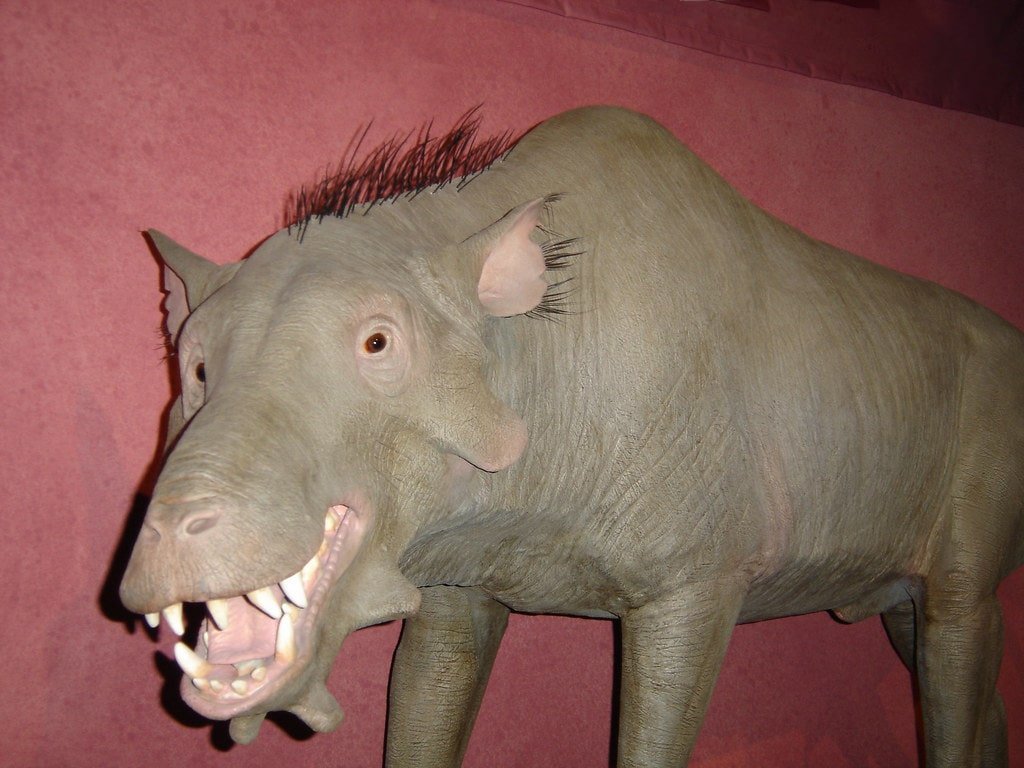
The Archaeotherium, often nicknamed the “hell pig” for its formidable size and teeth, was not actually a pig at all. These extinct mammals roamed North America 35 to 25 million years ago and were roughly the size of a modern cow. Unlike true pigs, Archaeotherium, one of the animals that start with A, were omnivores, possessing teeth adapted for both tearing meat and pulling plants from the ground. Their diet likely included camels, horses, and even rhinoceroses, making them formidable predators in their time. The rise of larger carnivores is believed to be the main culprit behind the Archaeotherium’s eventual extinction.
Archelon Turtle
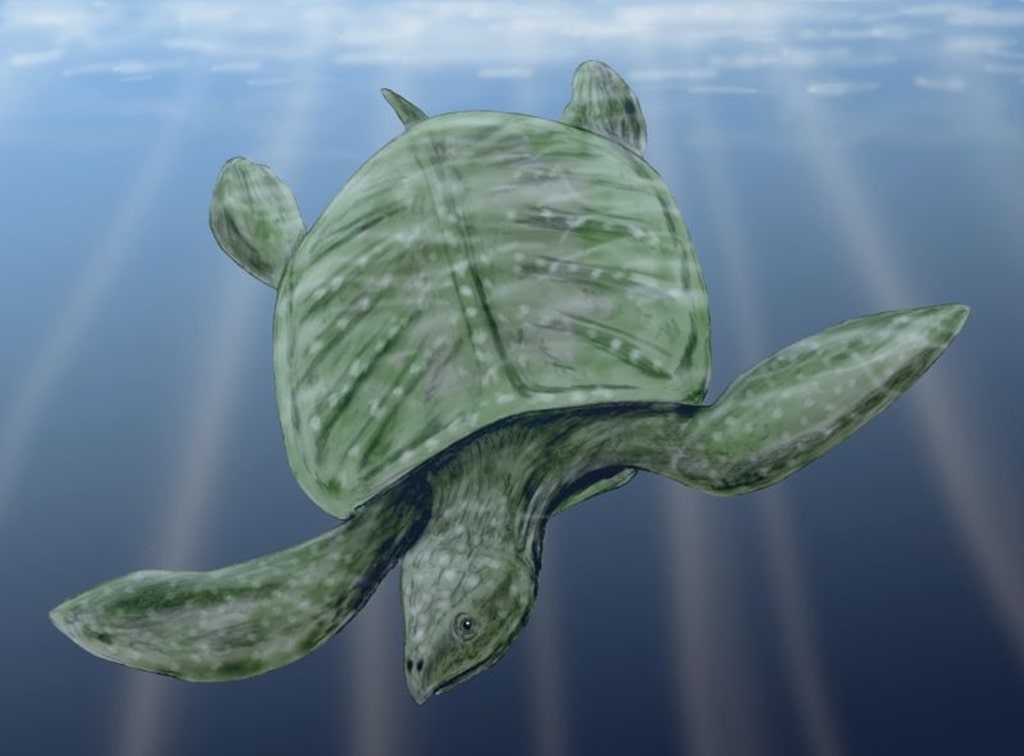
The Archelon turtle, the largest turtle the world has ever known, reigned supreme during the Late Cretaceous period, approximately 100 to 66 million years ago. Unlike any modern turtle species, this giant reptile boasted a body measuring up to 13.1 feet long and an impressive 16 feet wide.
Equipped with a hooked beak, powerful crushing jaws, and strong front feet, the Archelon was perfectly adapted to snatch prey like mollusks, jellyfish, and crustaceans from the ocean depths. Following the nesting habits of its modern relatives, the Archelon likely hauled itself onto beaches to lay its eggs. Sadly, climate change is believed to be the primary factor that led to the demise of this magnificent creature.
Archerfish
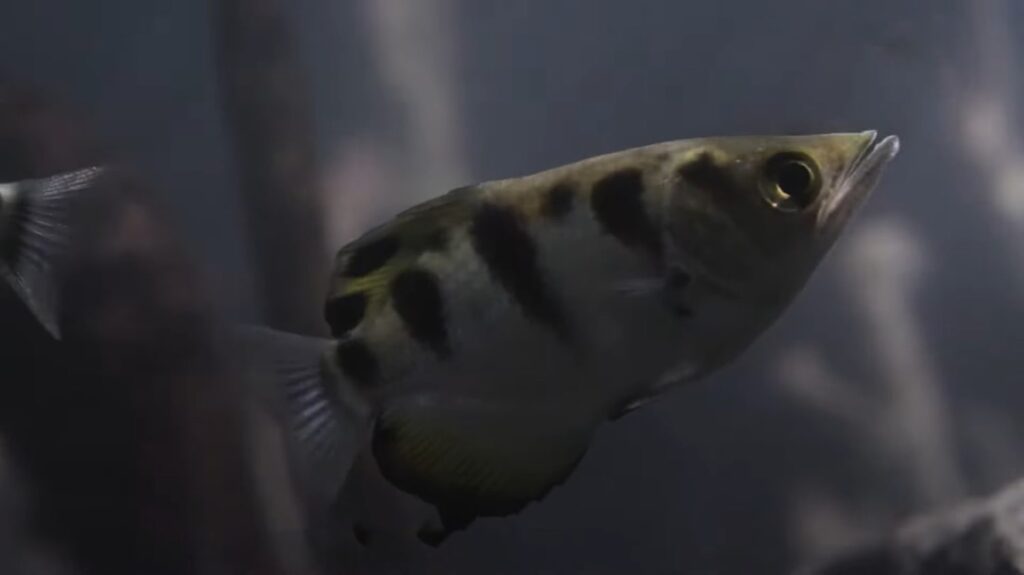
The Archerfish, a type of perch native to Southeast Asia and northern Australia, is a skilled hunter famous for its remarkable ability to shoot down insects with jets of water. These freshwater and brackish water dwellers can target prey up to five feet away, making them some of the most accurate marksmen in the animal kingdom. Their success lies in their exceptional eyesight and the ability to compensate for the way light bends underwater.
Archerfish, one of the animals that start with A, are carnivores that primarily feed on insects, spiders, and even small fish. While they only reach a maximum length of 12 inches, their impressive hunting prowess and unique adaptations have made them a popular choice for aquariums, although their murky habitat makes them a challenge to catch in the wild.
Arctic Char
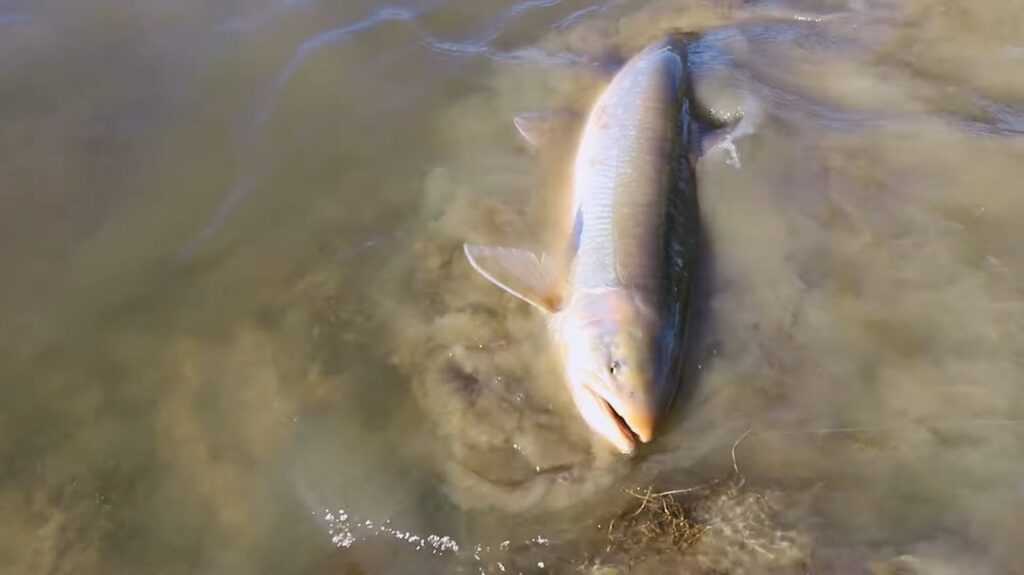
The Arctic Char, a champion of the cold, reigns supreme as the northernmost freshwater fish. These adaptable fish thrive in frigid lakes and rivers, but can also venture into saltwater environments. They are opportunistic feeders, with a diverse diet that includes insects, plankton, other fish, and even smaller char. When spawning season arrives, the females deposit their eggs in freshwater, where the males then fertilize them. Arctic char are a valuable food source for both humans and other animals, and fortunately, their populations are not currently considered to be threatened.
Arctic Fox
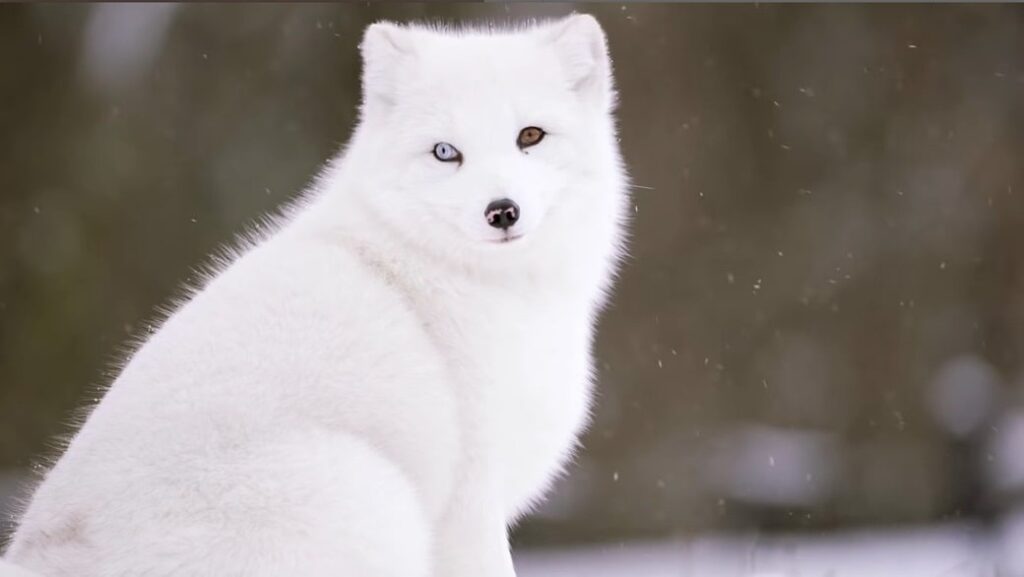
The Arctic Fox, a small but resilient mammal, thrives in the frigid tundra regions around the world. Despite its diminutive size, this furry marvel boasts a thick coat that cleverly changes color with the seasons, providing excellent camouflage in its snowy environment. Arctic foxes are opportunistic eaters, with a varied diet that includes lemmings, voles, hares, and other small rodents. They also supplement their meals with berries, seaweed, and surprisingly, even their own feces.
These resourceful creatures are social animals that dwell in dens with multiple entrances, a strategy that helps them conserve heat and evade predators. Remarkably active year-round, Arctic foxes are well-adapted to withstand the extreme cold of the Arctic. However, their populations currently face threats due to climate change and human activity, highlighting the importance of conservation efforts to protect this fascinating animal. Curious for more? Read the full article here!
Arctic Hare
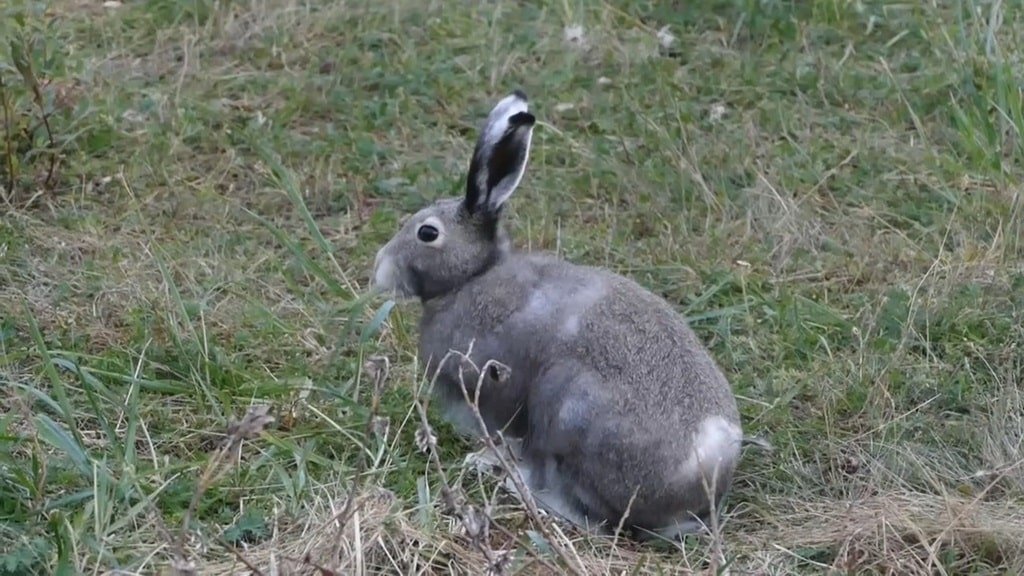
The Arctic Hare, a master of camouflage, thrives in the frigid tundra regions of the world. These herbivores primarily feast on leaves, twigs, and grasses, but will not turn down fish or carrion if available. Their remarkable adaptation is their fur, which cleverly changes color with the seasons. During the summer months, their coat transforms to a brown or gray, seamlessly blending into the tundra landscape.
Come winter, their fur miraculously turns white, providing exceptional camouflage against the snowy backdrop. These social creatures live in groups known as herds and are capable of impressive bursts of speed, hopping up to 40 miles per hour to escape predators. Arctic hares, one of the animals that start with A, are an important part of the Arctic ecosystem, serving as a vital food source for many carnivores.
Arctic Wolf
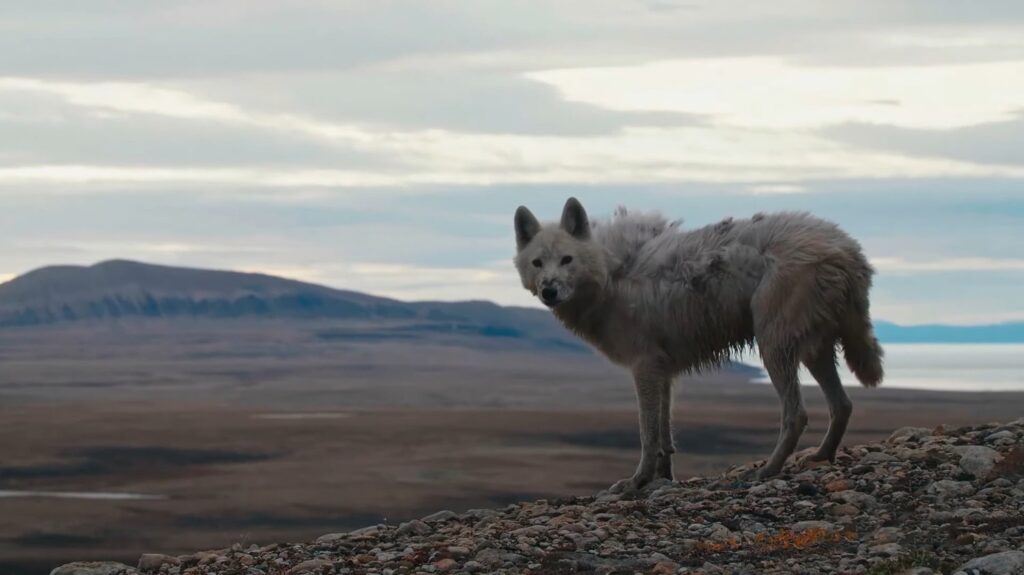
The Arctic Wolf, a formidable predator, reigns supreme in the frigid tundra regions of the Arctic. These social creatures live in packs, working together to hunt large prey such as caribou and muskoxen. Their thick fur and specially adapted paws provide excellent insulation and traction on icy surfaces, making them perfectly suited for their harsh environment. Despite facing challenges due to climate change and habitat loss, the Arctic Wolf population remains stable at around 200,000, a testament to their resilience.
Arctodus
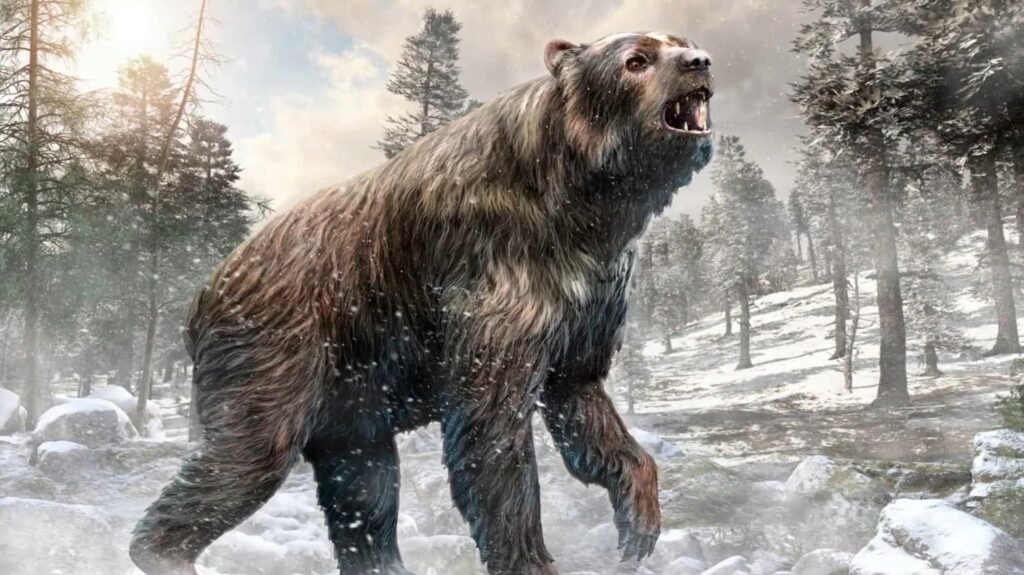
The Arctodus, also known as the short-faced bear, was a colossal bear that dominated the North American Pleistocene epoch, possibly holding the title of the largest bear to ever exist. This enormous predator boasted a weight of around 2,000 pounds and an impressive length of 8-10 feet. One of its distinguishing features was its unique facial structure, characterized by a flattened appearance. The Arctodus sported exceptionally long canine teeth, measuring at least two inches, which were likely instrumental in bringing down large prey.
Its diet consisted of various large herbivores, including dire wolves, bison, and horses. While the exact cause of the Arctodus’s extinction remains a subject of debate, two primary theories prevail. One theory suggests that climate change and competition for food sources led to the decline of the Arctodus’s prey, ultimately causing its own demise. Another theory proposes that the arrival of the Clovis people, skilled hunters who utilized spears to take down large mammals, may have contributed to the Arctodus’s disappearance.
Arctotherium
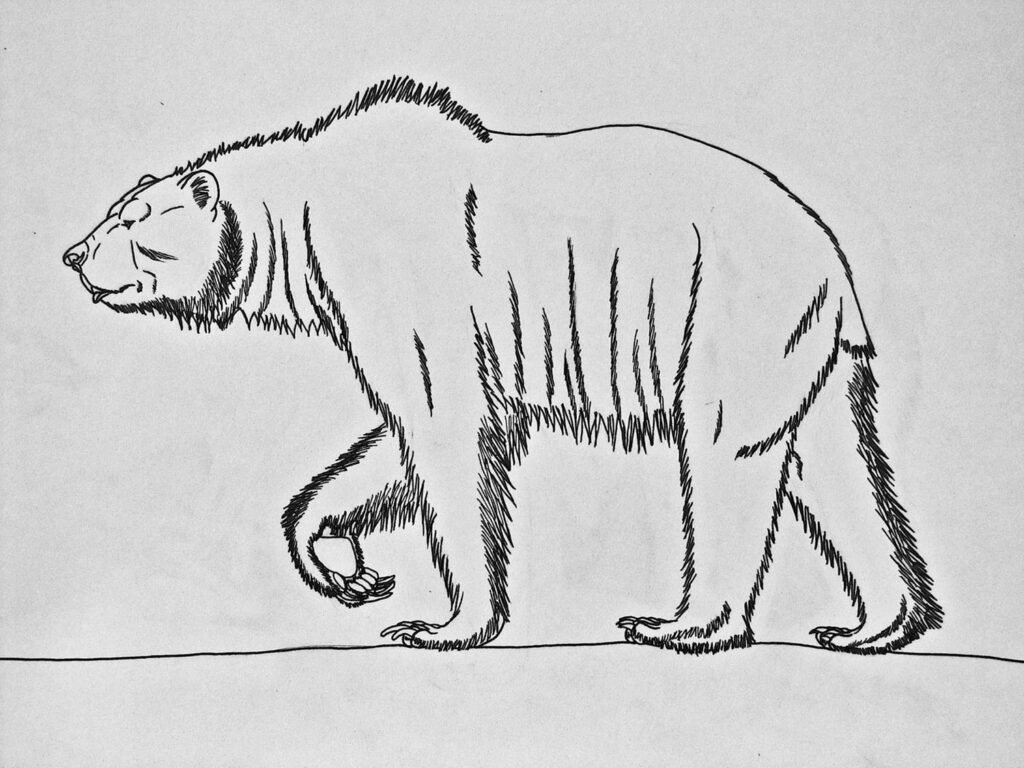
The Arctotherium, also known as the giant short-faced bear, was a colossal mammal that roamed the plains of South America for millions of years, from roughly 3 million years ago to just 10,000 years ago. This formidable creature held the distinction of being the largest member of the Arctotherium genus, possibly reaching a staggering weight of 3,500 pounds. While the exact details of its diet are still being debated, scientists believe it was likely an omnivore, consuming a combination of meat and plants.
Interestingly, some theories propose that competition for resources may have driven certain Arctotherium species towards a more herbivorous diet. The spectacled bear, a much smaller relative that still inhabits the Andes today, is considered to be the Arctotherium’s closest living relative.
Argentavis Magnificens
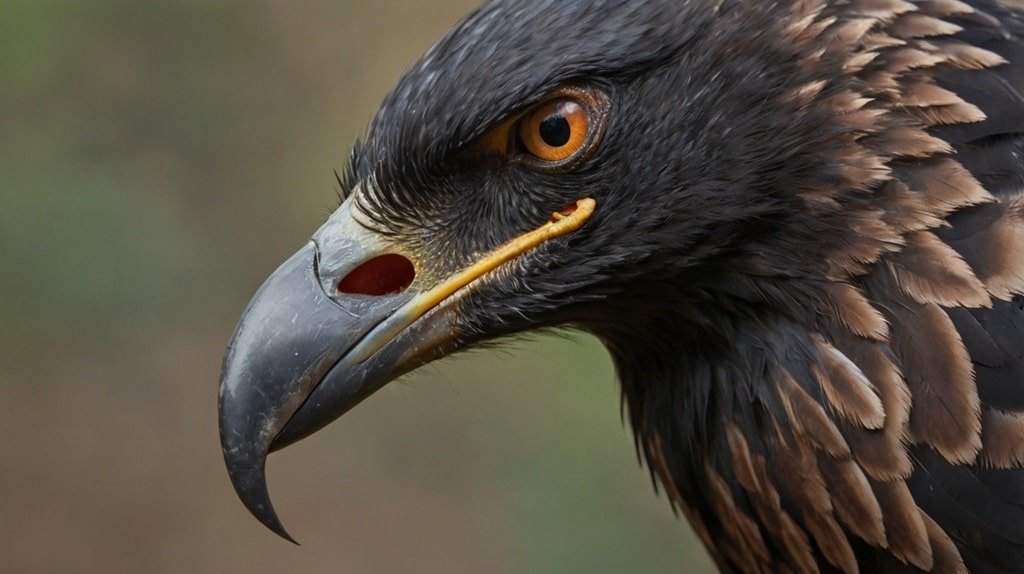
The Argentavis Magnificens, a giant bird that soared through the skies of South America 6 million to 10 thousand years ago, was one of the largest flying creatures ever to exist. With a wingspan reaching an astounding 25 feet, this magnificent bird dwarfed even the largest condors of today. These aerial predators primarily feasted on small mammals, including rodents and sloths, using their sharp beaks and talons to capture their prey. Sadly, the Argentavis Magnificens, one of the animals that start with A, met its demise during the Pleistocene epoch, most likely due to climate change that significantly altered its habitat.
Argentine Black and White Tegu
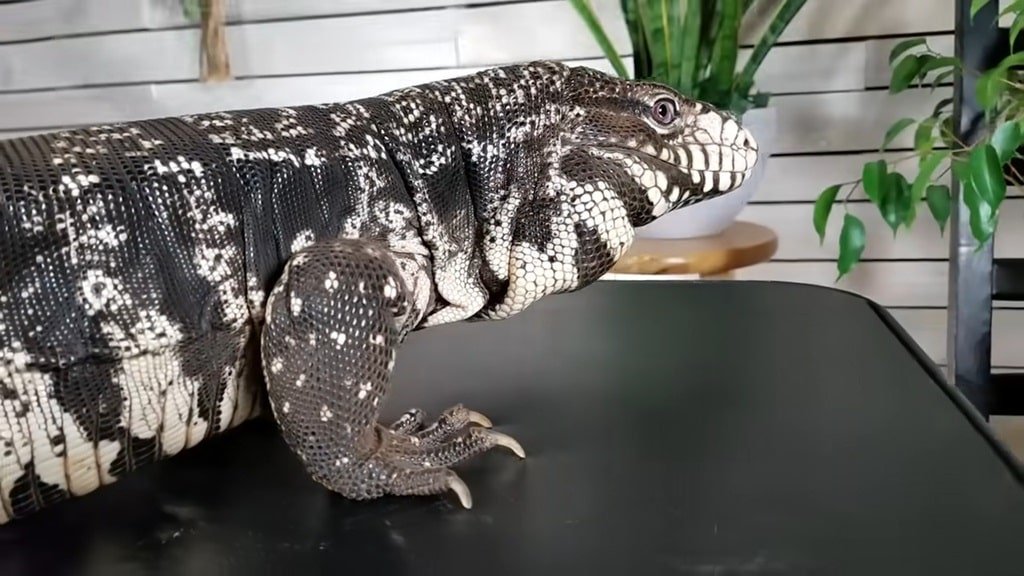
The Argentine black and white tegu, a captivating omnivore native to South America, is known for its intelligence and trainability. These social creatures can live up to 15 years and thrive in spacious enclosures with hiding spots and a water source when kept as pets. Their natural diet consists of a fascinating mix of insects, fruits, and even small mammals. The Argentine black and white tegu’s intelligence makes them a popular choice among reptile enthusiasts, although their exotic nature necessitates responsible pet ownership.
Argentine Horned Frog
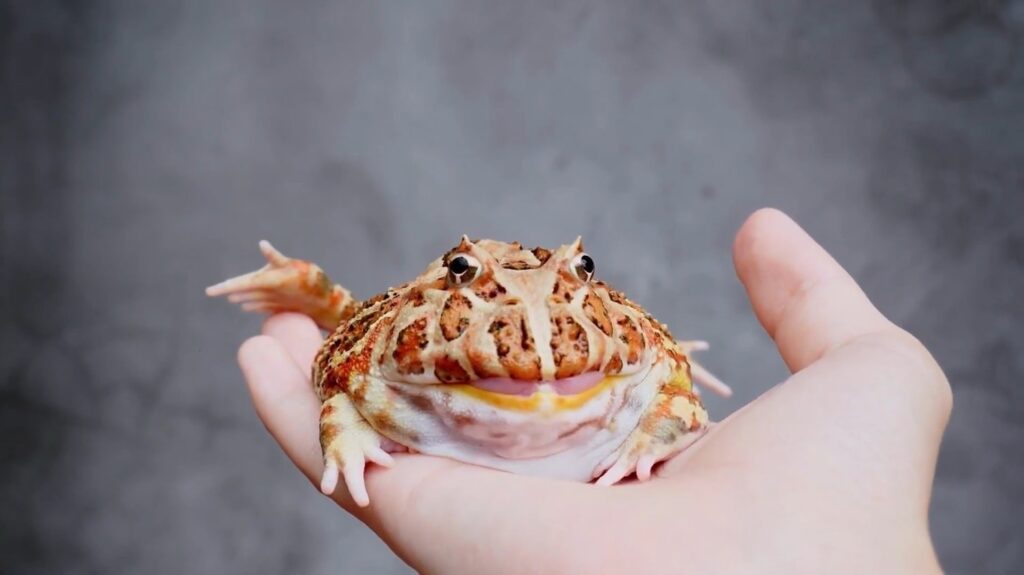
The Argentine Horned Frog, also known as the Pacman frog or ornate Pacman frog due to its resemblance to the video game character, is a captivating carnivorous amphibian native to South America. These frogs, known for their wide mouths, squat bodies, and bumpy skin, are popular exotic pets due to their unique appearance and relatively low-maintenance needs. However, their wild populations are sadly declining due to habitat loss and the pet trade.
The Argentine Horned Frog thrives in muddy forest floors and rainforests, patiently waiting for prey to come close before launching a surprise attack with their sticky tongues. Their diet consists primarily of insects, worms, and even small mice. Females can lay a staggering number of eggs, reaching up to 2,000 at a time. These fascinating creatures serve as a reminder of the importance of responsible pet ownership and habitat conservation.
Argentinosaurus
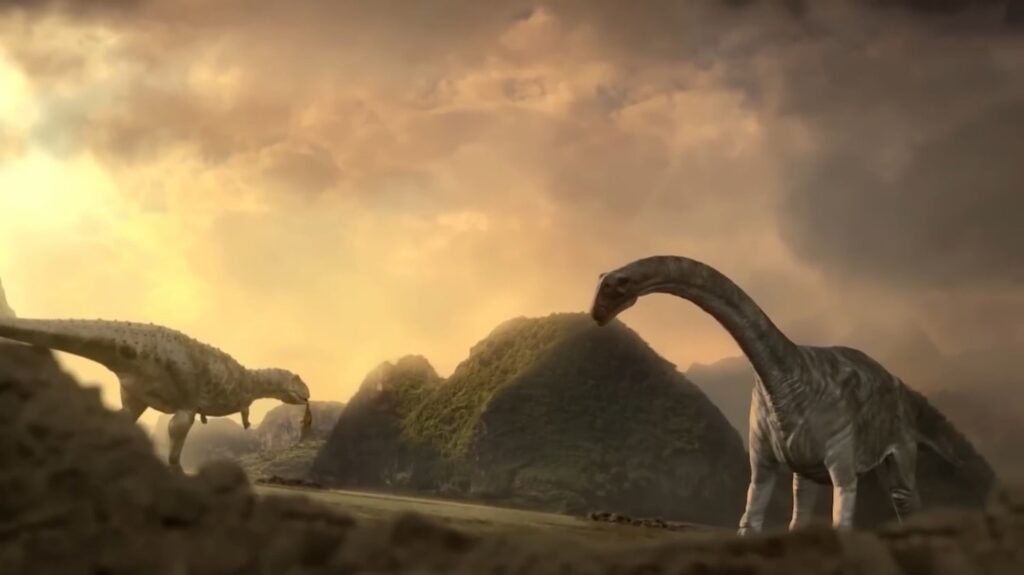
The Argentinosaurus, a colossal herbivore that roamed the plains of South America during the Late Cretaceous period, stands as one of the largest dinosaurs ever to have walked the Earth. Reaching staggering lengths of up to 115 feet and estimated weights of 75 tons, these gentle giants dwarfed even the mightiest herbivores of today. Their diet consisted primarily of a variety of plants, with a particular fondness for leaves plucked from the tops of tall trees, thanks to their long necks. These fascinating creatures continue to capture the imagination of paleontologists and dinosaur enthusiasts alike.
Arizona Bark Scorpion
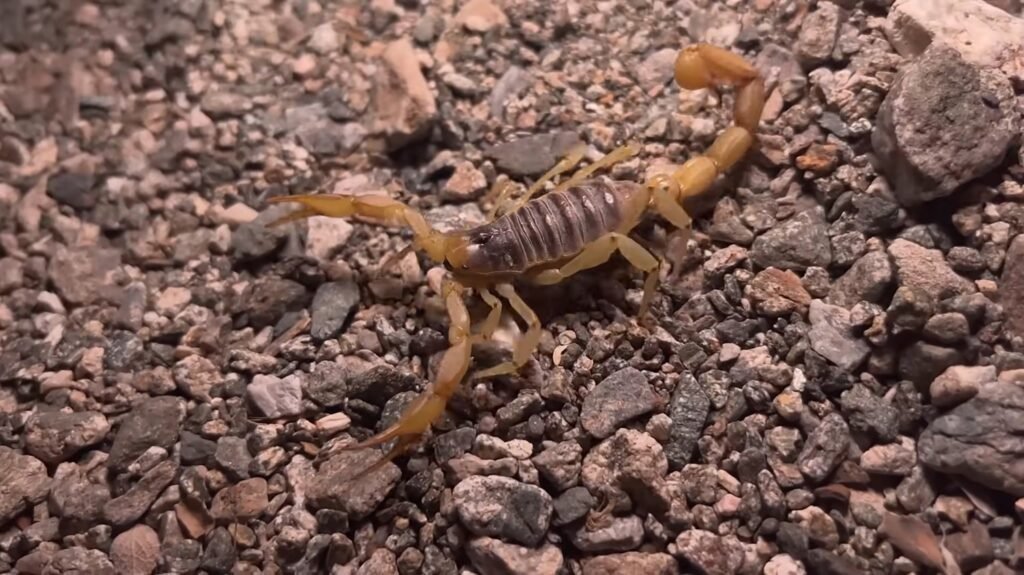
The Arizona bark scorpion, a venomous arachnid native to the Sonoran Desert of the southwestern United States and Mexico, is a nocturnal hunter that plays a vital role in the desert ecosystem. While their light brown coloring provides excellent camouflage amidst the rocky desert landscape, these scorpions hold a surprising secret – they can glow a vibrant blue or green under ultraviolet light. Active primarily at night, they emerge under the cloak of darkness to seek out prey, including insects, spiders, and even other scorpions.
Despite their fearsome reputation, the Arizona bark scorpion’s venom is rarely fatal to healthy adults. However, young children, the elderly, and individuals with weakened immune systems are more susceptible to serious complications from a sting, highlighting the importance of caution in scorpion-inhabited areas. In the unfortunate event of a scorpion sting, immediate medical attention is crucial to minimize risks and ensure a speedy recovery.
Arizona Black Rattlesnake
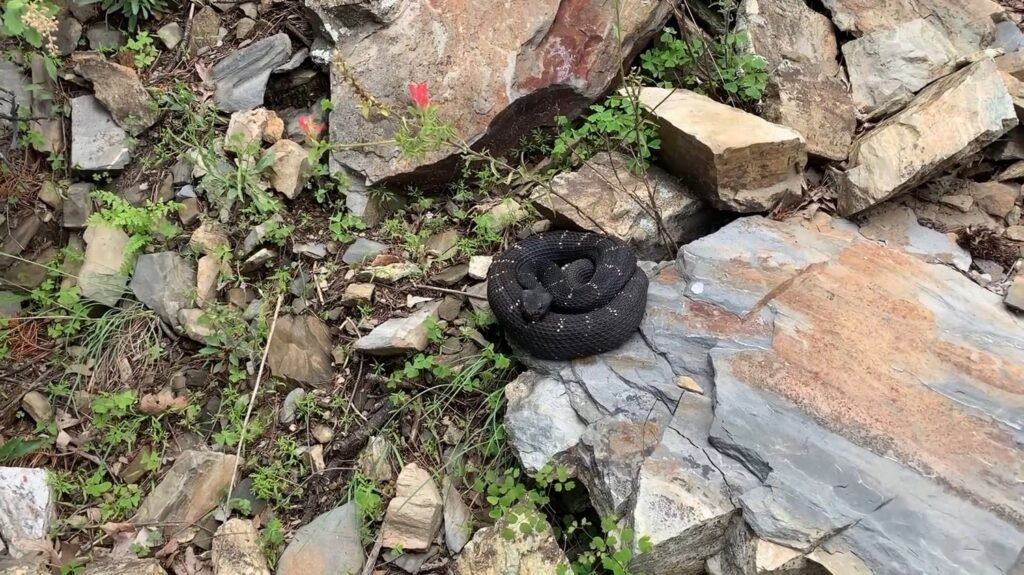
The Arizona black rattlesnake, a venomous pit viper endemic to Arizona and southwestern New Mexico, is a high-altitude dweller perfectly adapted to its mountain habitat. Unlike many other rattlesnakes that prefer lower elevations and have lighter colored scales, adult Arizona black rattlesnakes are dark brown or almost black, offering excellent camouflage against rocky outcrops.
These medium-sized snakes, typically reaching lengths of two to four feet, rely on their keen sense of smell and heat detection pits to locate prey, which primarily consists of small mammals, lizards, and birds. Interestingly, the Arizona black, one of the animals that start with A, rattlesnake is the first rattlesnake species documented to exhibit social behavior, with females sometimes observed caring for their young communally. However, their venomous bite, while rarely fatal to humans with prompt medical attention, serves as a potent deterrent to potential threats.
Arizona Blonde Tarantula
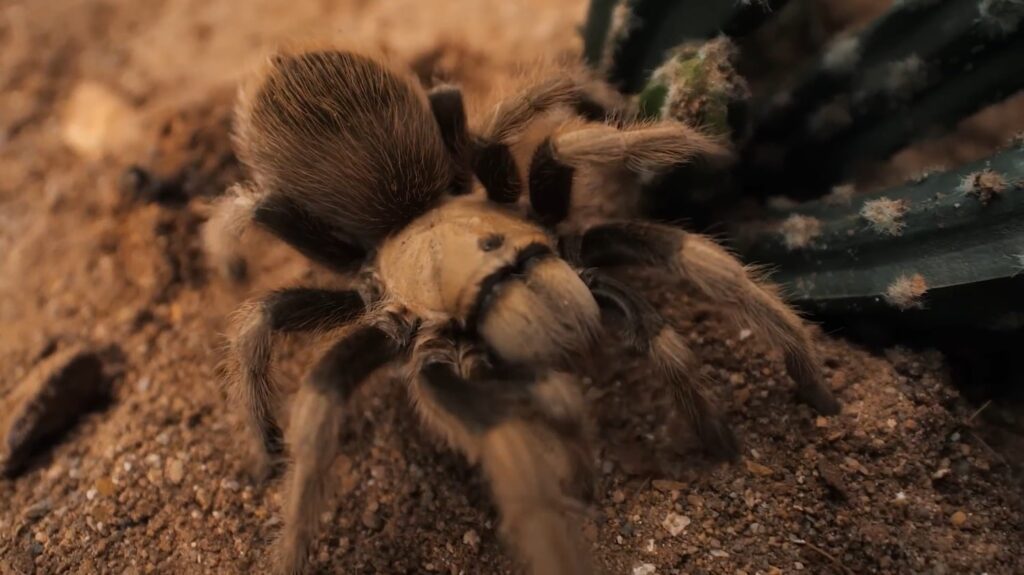
The Arizona blonde tarantula, also known as the desert blonde or Mexican blonde tarantula, is a captivating resident of the southwestern deserts of the United States and Mexico. This terrestrial tarantula boasts a beautiful contrast between its pale blonde carapace, densely covered in soft hairs, and its dark brown or black legs and abdomen. Despite their impressive size, reaching up to six inches in diagonal leg span, these gentle giants are known for their docile temperament, making them popular choices for tarantula enthusiasts.
They are nocturnal hunters, emerging at night to search for prey like crickets, roaches, and even small lizards. Unlike many other tarantulas, Arizona blondes lack urticating hairs, those barbed bristles used for defense, relying instead on their venomous bite, which is fortunately mild for humans. These fascinating creatures can live for over 20 years, making them a long-term commitment for potential pet owners.
Arizona Coral Snake
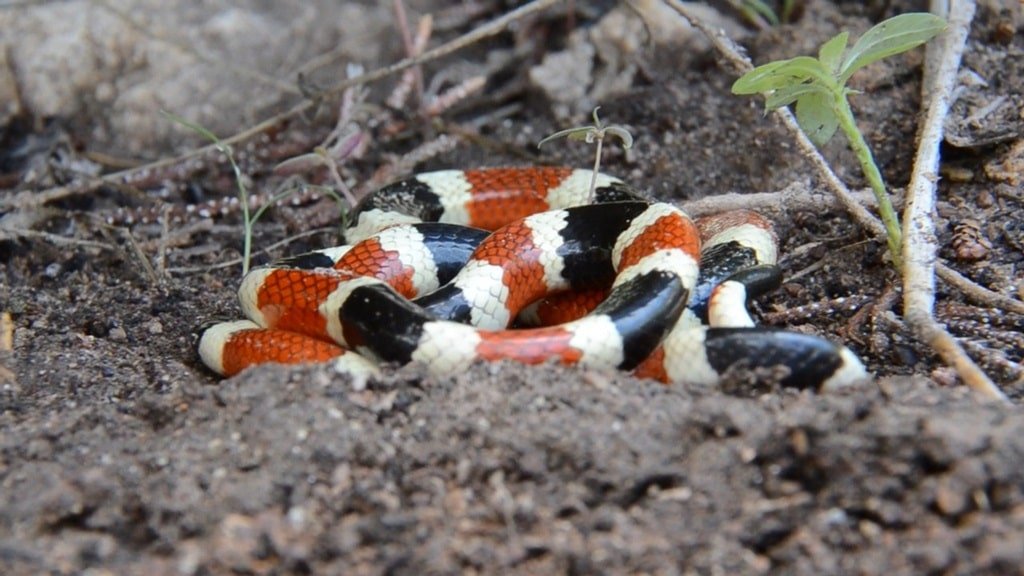
The Arizona coral snake, a slender and vibrantly colored inhabitant of the American Southwest, is a member of the coral snake family and boasts a potent neurotoxic venom. Despite their striking appearance, with alternating bands of red, black, and yellow encircling their bodies, these snakes are often mistaken for non-venomous kingsnakes, potentially leading to dangerous situations.
A helpful rhyme to differentiate them goes: “Red on black, friend of Jack. Red on yellow, kill a fellow.” These small snakes, rarely exceeding 24 inches, are primarily nocturnal and shy, and their venom, while dangerous, is not always injected in full force. Their diet consists mainly of other snakes, particularly blind snakes and black-headed snakes. Sadly, the Arizona coral snake faces threats due to habitat loss and persecution – a consequence of their resemblance to non-venomous species.
Armadillo
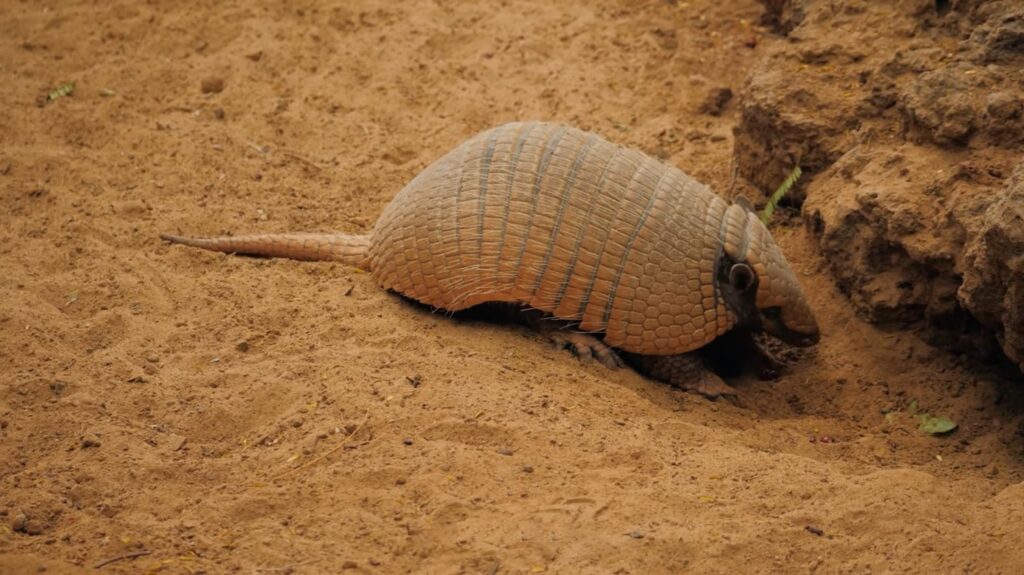
The armadillo, a fascinating mammal native to the Americas, is best known for its unique armored shell. This bony plating, constructed from keratinized scales and underlying bony plates, offers remarkable protection from predators. While nine bands are most common, the number of flexible bands on their back can vary depending on the species. Armadillos come in a surprising variety of sizes, ranging from the colossal armadillo, tipping the scales at over 100 pounds, to the diminutive pink fairy armadillo, weighing a mere ounce.
These omnivores primarily feast on insects, worms, and carrion, utilizing their powerful claws for digging and foraging. Despite their tough exterior, armadillos are surprisingly shy creatures, often relying on their burrowing abilities to evade threats. Sadly, habitat loss and the spread of disease pose significant challenges to some armadillo species, highlighting the importance of conservation efforts to protect these unique and ecologically valuable animals.
Armadillo Lizard
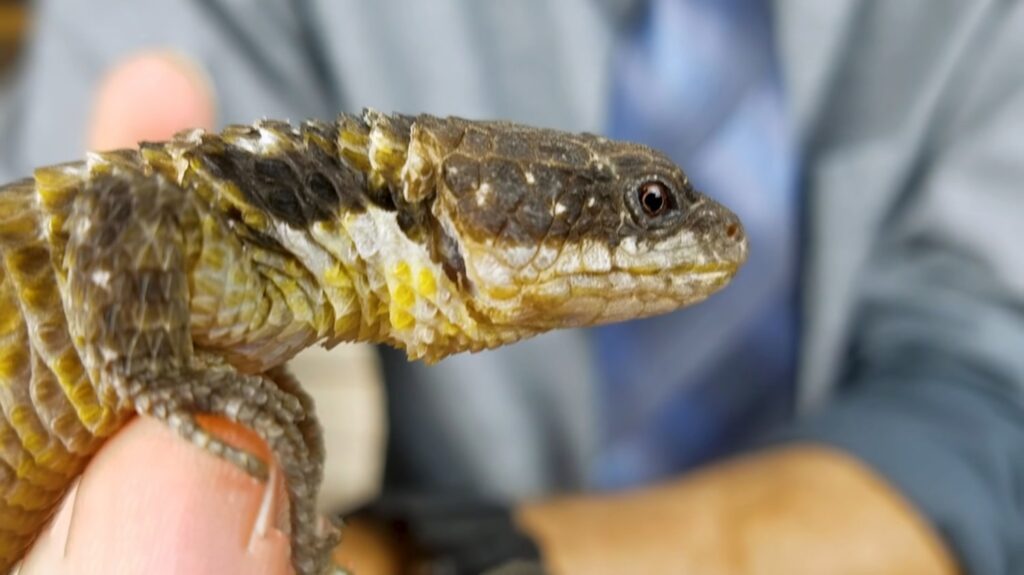
The armadillo lizard, a fascinating reptile native to the desert regions of South Africa, isn’t actually an armadillo – it just bears an uncanny resemblance! This aptly named lizard boasts a body covered in rows of spiny scales that provide excellent protection from predators. When threatened, the armadillo lizard employs a remarkable defense strategy – it curls up into a tight ball, tucking its head and tail within its armored exterior, much like its namesake. This compact ball of spines presents a formidable challenge for any potential attacker.
These lizards are insectivores, primarily feeding on ants, termites, and beetles, which they skillfully capture with their long, sticky tongues. While several armadillo lizard species exist, the most common is the armadillo girdled lizard, known for its light brown to dark brown coloration and a maximum size of around eight inches.
Armenian Gampr
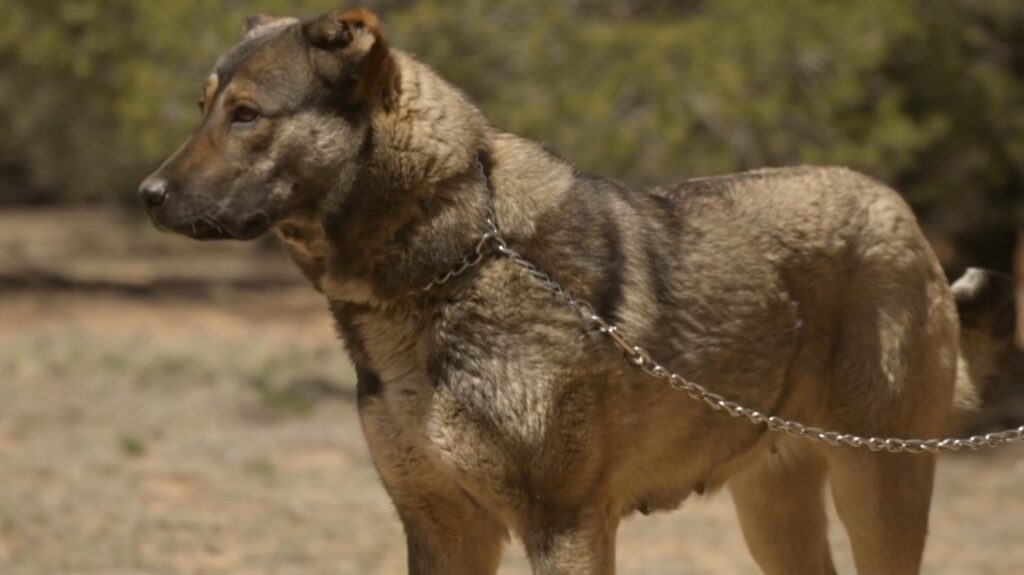
The Armenian Gampr, Armenia’s national dog, boasts an impressive lineage as an ancient livestock guardian dog. This powerful breed, originating in the Armenian Highlands, possesses a majestic build with a strong, muscular body and a thick coat capable of withstanding harsh weather conditions. Despite their imposing size, Armenian Gamprs, one of the animals that start with A, are known for their intelligence, loyalty, and independent thinking.
Unlike some guardian breeds, they are not solely reliant on commands but demonstrate a remarkable ability to assess situations and make their own decisions when protecting their flock. Historically, these courageous dogs safeguarded livestock from predators like wolves and bears, and today, they remain a vital part of Armenian culture and a symbol of national pride.
Armored Catfish
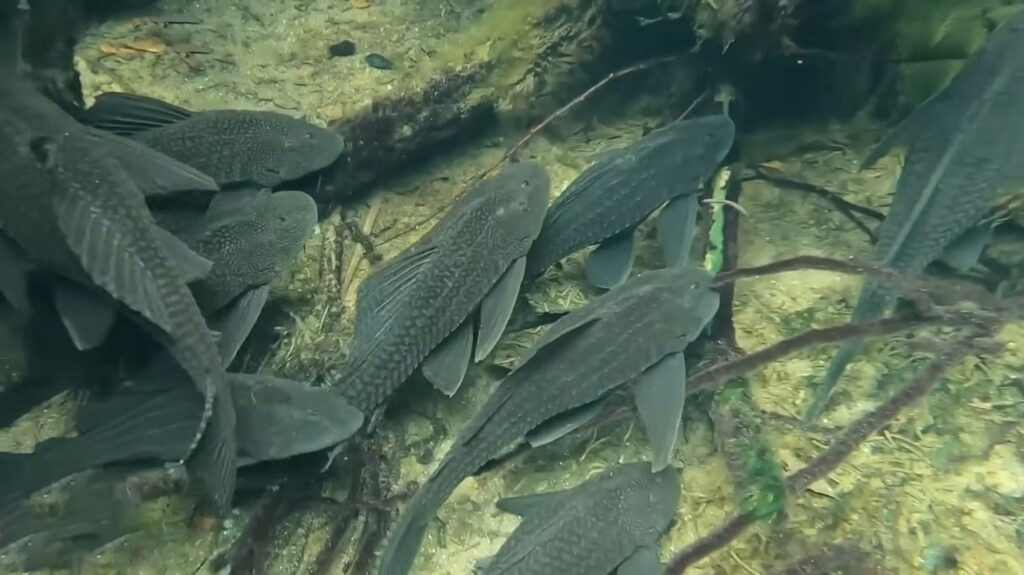
The armored catfish, also known as the suckermouth catfish or loricariid catfish, is a diverse family encompassing over 900 species. These fascinating fish, native to freshwater habitats in Central and South America, are instantly recognizable by their bony plates that resemble armor, offering protection from predators. Their ventral sucker mouths, perfectly adapted for clinging to rocks and surfaces in fast-flowing currents, are another distinctive feature.
While some species are primarily herbivores, feasting on algae and plants, others are omnivorous, incorporating insects and small invertebrates into their diet. The armored catfish plays a crucial role in maintaining clean waterways by consuming algae and detritus. However, some introduced species can be invasive, disrupting the ecological balance in new environments.
Armyworm
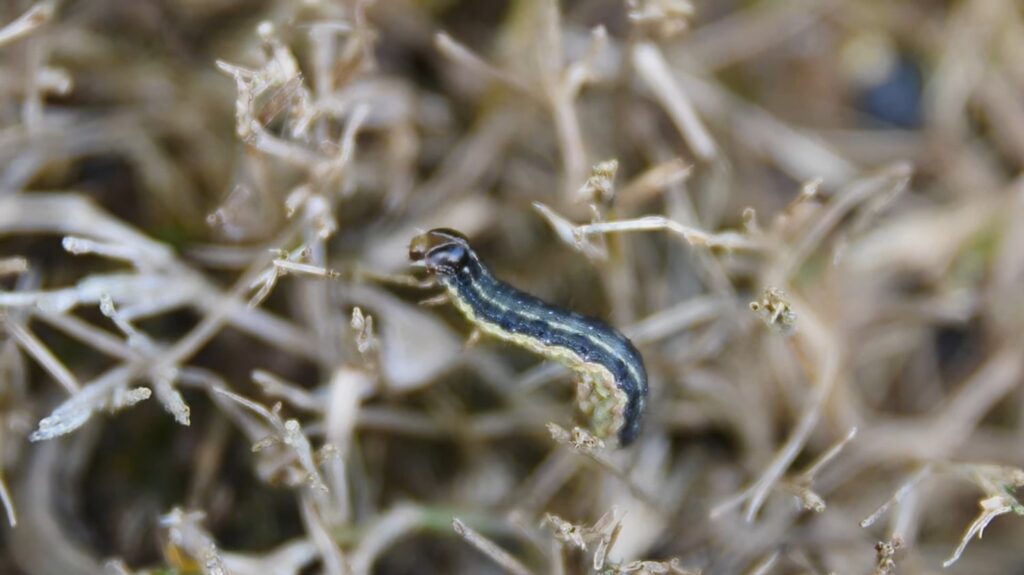
The armyworm, specifically the fall armyworm (Spodoptera frugiperda), is a significant pest affecting various crops globally. Native to tropical and subtropical regions of the Americas, it has spread rapidly across Africa, Asia, and parts of Europe due to its strong flying ability. Armyworms primarily feed on maize, but they also attack more than 80 other crops including wheat, sorghum, millet, and sugarcane. They are known for their voracious appetite, which can lead to severe crop damage. The larvae feed on plant leaves, creating holes and notches, and can defoliate fields quickly if not controlled.
Effective management of armyworms involves a combination of monitoring, biological controls, and, when necessary, chemical treatments. Regular scouting and early detection are crucial, as small larvae are easier to control. Biological controls include natural predators like birds, ground beetles, and parasitoids such as tachinid flies. In some regions, bio-pesticides like Bacillus thuringiensis and botanical insecticides such as neem oil are used to manage infestations sustainably.
Arsinoitherium
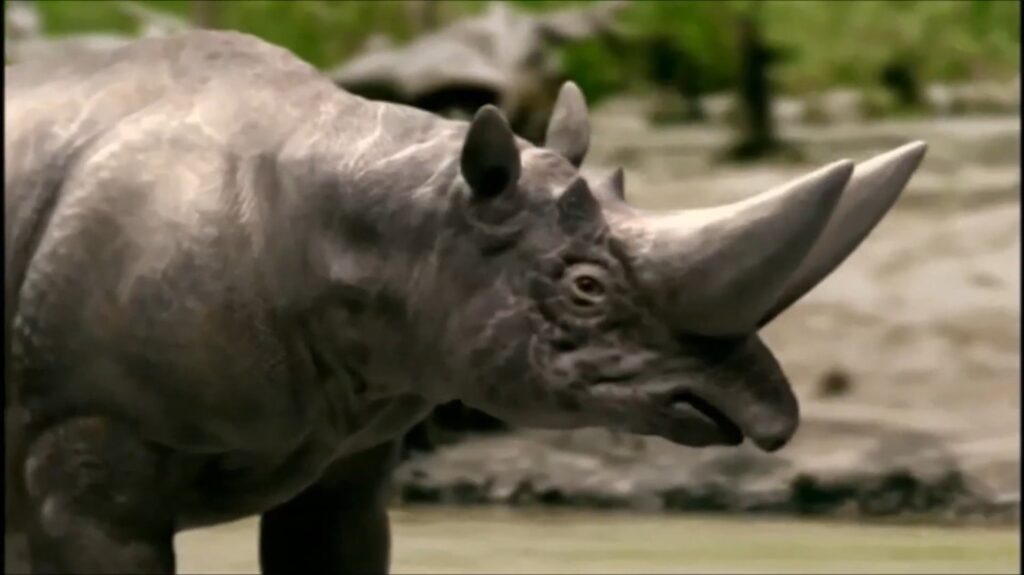
The Arsinoitherium, an extinct mammal that roamed North Africa from roughly 36 to 30 million years ago, was a sight to behold. Imagine a giant, rhinoceros-like herbivore rivalling a gorilla in size. Despite their imposing build, they weren’t actually related to rhinos! Scientists believe their closest living relatives are elephants, sirenians (manatees and dugongs), and hyraxes. The Arsinoitherium’s most striking feature was a pair of enormous horns on its nasal bones, with a possible smaller set on its forehead.
While the exact details of their habitat are debated, they likely thrived in a mix of bushlands, woodlands, and savannas. Sadly, the arrival of humans in Madagascar is believed to be the primary culprit behind the Arsinoitherium’s extinction around 350 BCE. These fascinating creatures serve as a reminder of the remarkable diversity of life that once existed and the potential impact humans can have on ecosystems.
Arthropleura
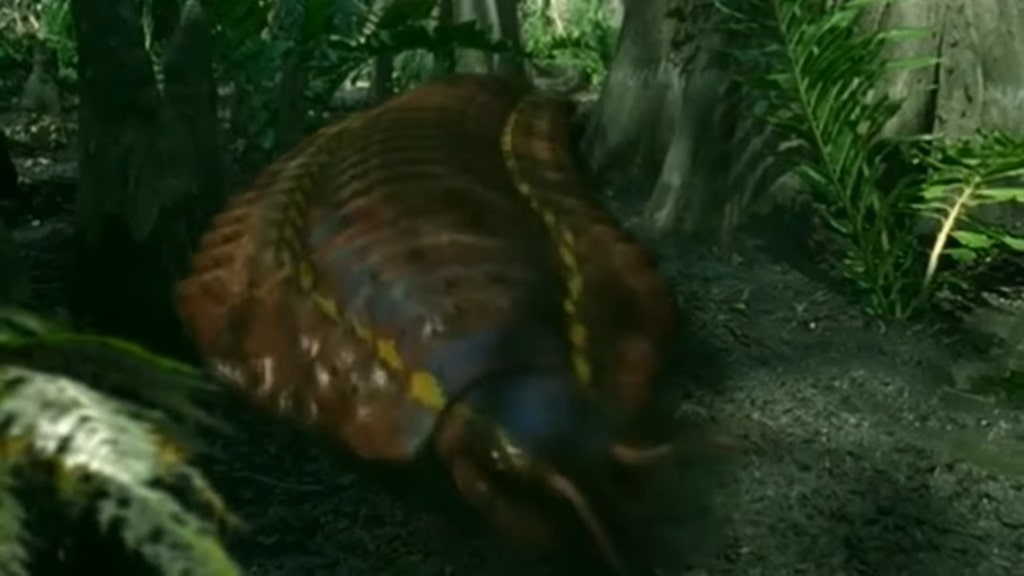
The Arthropleura, a colossal invertebrate that crawled across the Earth during the Carboniferous Period (roughly 345 to 280 million years ago), puts modern-day millipedes to shame. Imagine a creature resembling a giant millipede, but reaching lengths up to 8 feet – truly a nightmare for those with a fear of creepy crawlies! These herbivores sported numerous hard plates covering their narrow bodies, offering protection in a world teeming with early predators.
Fossils of Arthropleura, one of the animals that start with A, have been unearthed in North America and Europe, providing valuable clues about their anatomy and lifestyle. While the exact details of their diet remain under investigation, scientists believe they munched on decaying plant matter and perhaps even living vegetation on the forest floor. Sadly, these fascinating giants vanished from the Earth millions of years ago. Their story serves as a reminder of the remarkable diversity of life that once existed on our planet.
Aruba Rattlesnake
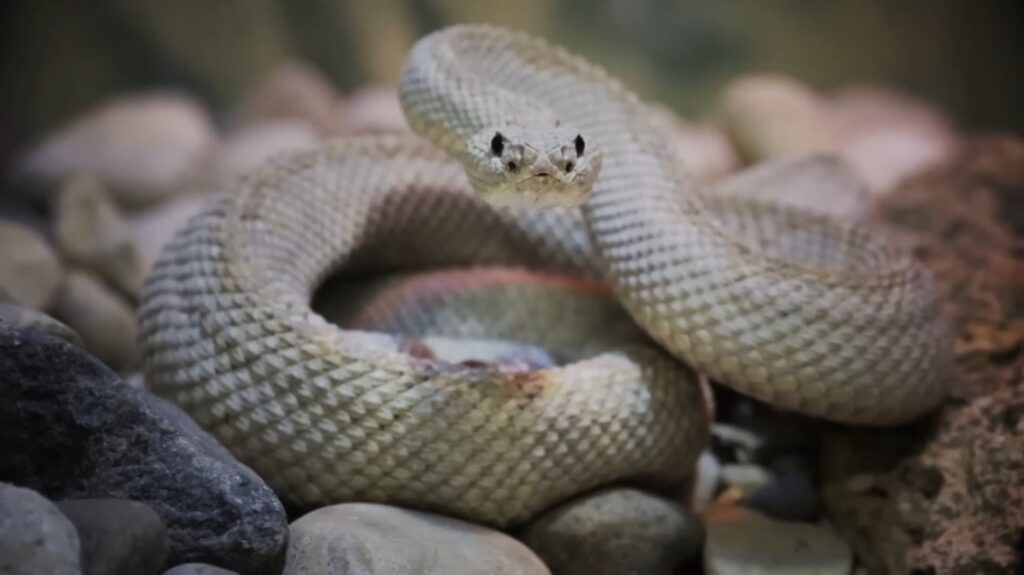
The Aruba rattlesnake, a venomous pit viper endemic to the island of Aruba, is a critically endangered species facing an uphill battle for survival. These snakes, reaching lengths of around two to three feet, are primarily nocturnal and solitary hunters, utilizing their heat-sensing pits to locate prey like lizards, rodents, and birds. Unlike many mainland rattlesnakes, the Aruba rattlesnake possesses a weak rattle, or even lacks one entirely, due to the absence of hard segments on its tail.
Sadly, habitat loss due to human development and the introduction of invasive predators like the mongoose have pushed the Aruba rattlesnake to the brink of extinction. Conservation efforts are underway, including captive breeding programs and habitat restoration, offering a glimmer of hope for this unique island snake.
Ashy Mining Bee
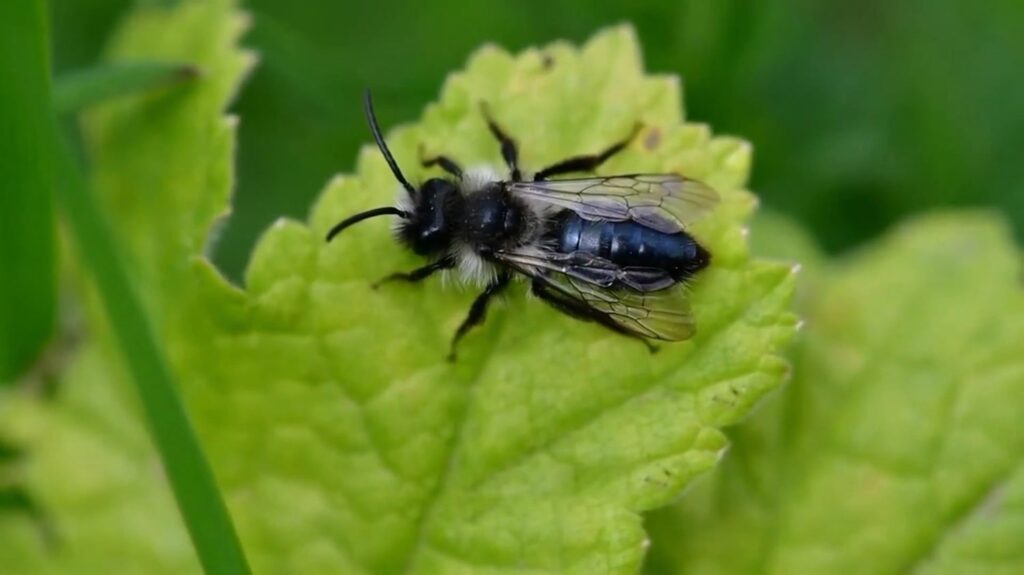
The Ashy Mining Bee, a vital pollinator native to Europe and introduced to North America, is a solitary bee known for its industrious nature. These small to medium-sized bees, typically measuring between 9 and 12 millimeters, are easily identified by their gray-to-white ash-colored hairs that contrast with their shiny blue-black bodies. Unlike honeybees, Ashy Mining Bees don’t produce honey. Instead, they create individual nests underground, diligently collecting pollen and nectar to provision their young.
Females are larger than males and are the only ones to sport hairs on their front legs, which they likely use for pollen collection. These busy bees play a crucial role in plant reproduction by transferring pollen between flowers, ensuring the health and diversity of flowering plants in their habitat.
Asian Arowana
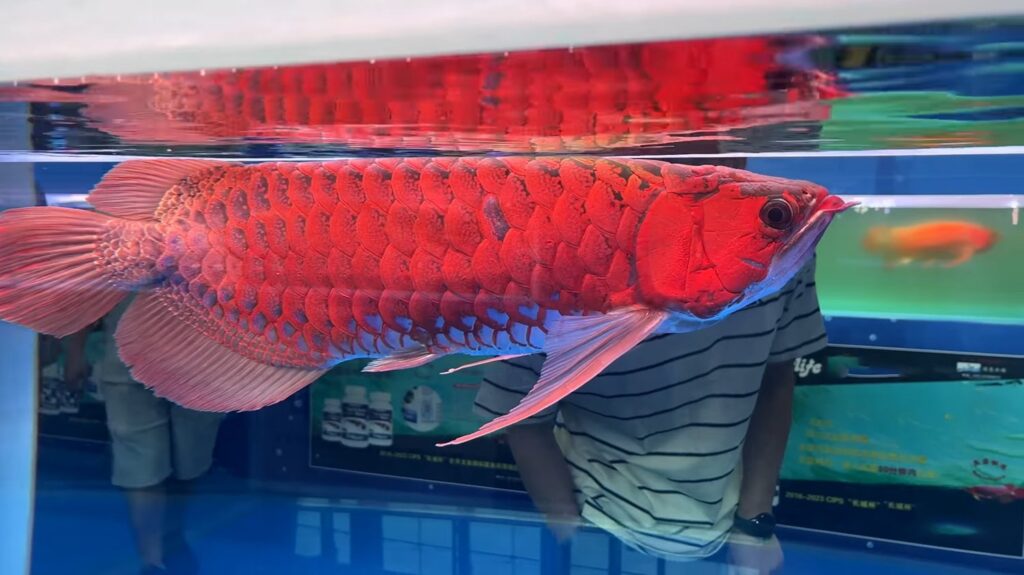
The Asian Arowana, a captivating fish native to Southeast Asia, is a prized inhabitant of aquariums and a symbol of good luck in some cultures. This elongated, torpedo-shaped fish boasts massive scales that shimmer with a variety of colors, including green, silver, orange, and red. Reaching up to three feet in length, they are a majestic addition to any aquatic display.
While some theories suggest they were once abundant, the Asian Arowana’s popularity has led to overfishing and habitat destruction. Their large size and dietary needs make them a demanding aquarium pet, requiring spacious tanks and a specialized diet. Sadly, they are also banned from import in many countries due to conservation concerns. The Asian Arowana’s story highlights the delicate balance between human desire and environmental responsibility.
Asian Carp

The Asian Carp, a collective term for various heavy-bodied cyprinid fish, isn’t native to North America. Introduced in the 1970s to control algae in aquaculture, these fish have unfortunately become a major invasive species. These prolific breeders thrive in warm, slow-moving waters and outcompete native fish for food and habitat. Their jumping abilities can also be a nuisance for boaters.
While some Asian Carp, one of the animals that start with A, species are considered food fish in Asia, their flesh can be bony and isn’t as popular in North America. Efforts to control their populations include electric barriers and commercial fishing, but these have proven challenging. The Asian Carp’s presence disrupts ecosystems and highlights the potential dangers of introducing non-native species into new environments.
Asian Cockroach
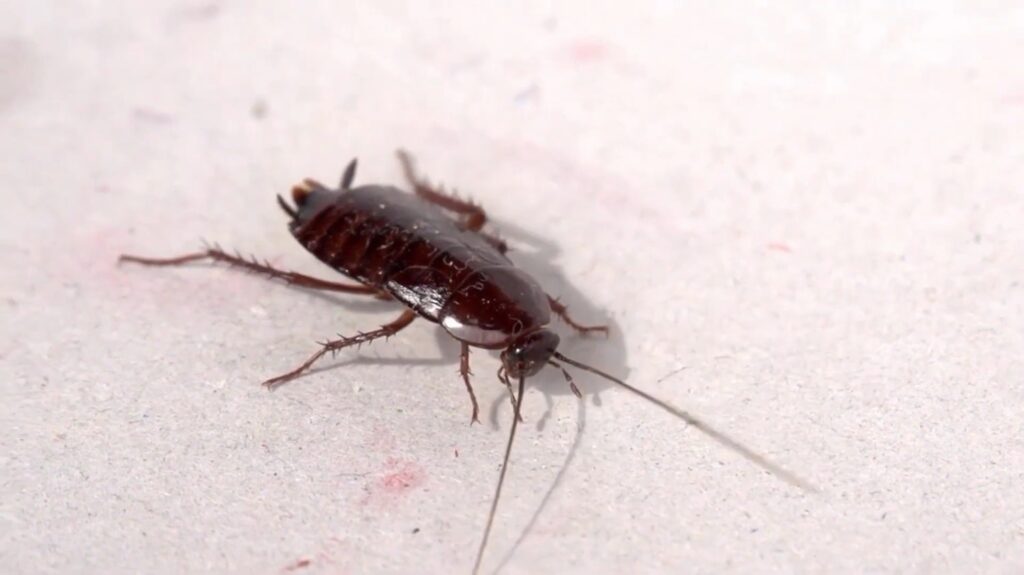
Despite their name, the Asian cockroach isn’t necessarily a household pest. Unlike their infamous German cousins, Asian cockroaches, one of the animals that start with A, prefer to dwell outdoors in warm, damp areas with plenty of leaf litter or mulch. This makes them more common in yards and gardens than kitchens. Adept fliers with long, narrow wings, they rarely invade human dwellings.
Asian Cockroaches, one of the animals that start with A, are omnivores, happily consuming decomposing organic matter, but will also scavenge for human food scraps if the opportunity arises. While their resemblance to German cockroaches might cause concern, these outdoor dwellers can be distinguished by their impressive flying abilities, a stark contrast to the German cockroach’s limited fluttering.
Asian Elephant
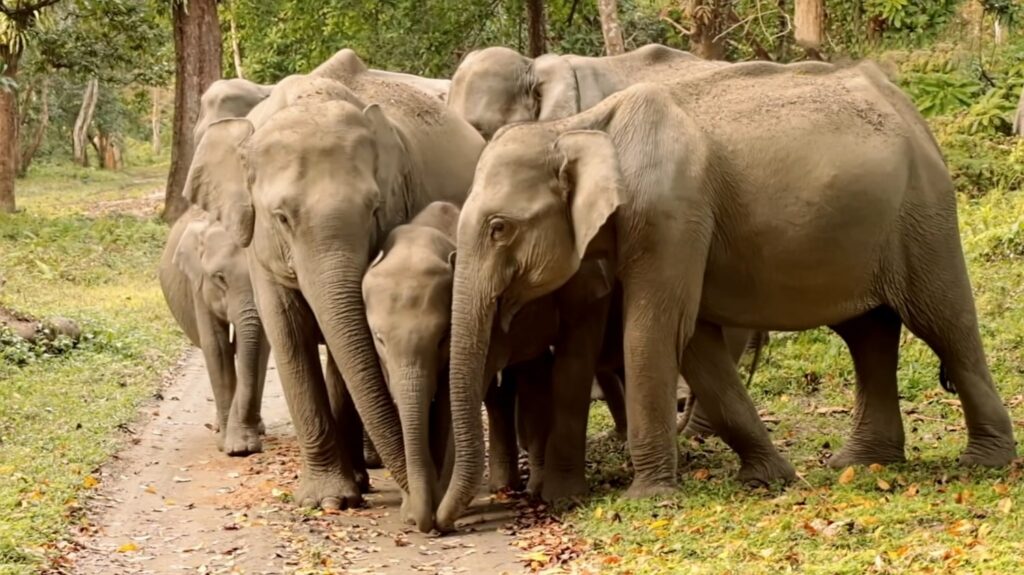
The Asian Elephant, the largest land mammal in Asia, is a gentle giant revered for its intelligence, social behavior, and cultural significance. These vegetarians, reaching heights of up to 10 feet at the shoulder, boast wrinkled grey skin, impressive tusks, and large, floppy ears that help regulate their body temperature. Highly social creatures, Asian elephants live in matriarchal herds led by experienced females.
They communicate through a complex system of vocalizations, including trumpets, rumbles, and infrasonic calls undetectable by the human ear. Sadly, habitat loss, poaching for ivory, and conflict with humans are significant threats to Asian elephants. Conservation efforts are crucial to ensure the survival of these magnificent animals, allowing them to continue roaming the forests and grasslands of Asia for generations to come.
Asian Giant Hornet
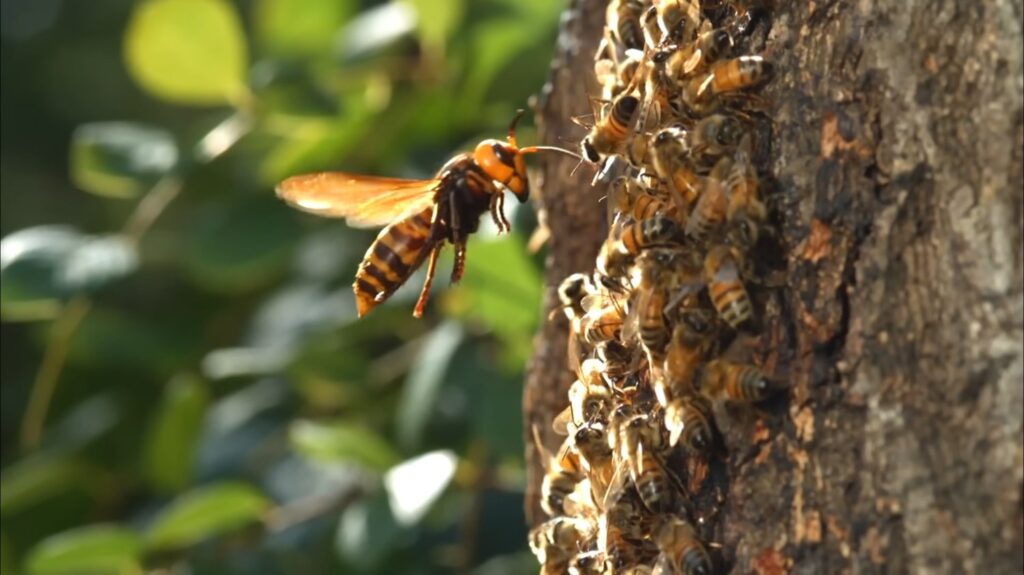
The Asian giant hornet, a formidable predator native to Eastern Asia, holds the dubious title of the world’s largest hornet. These behemoths, boasting a wingspan of up to three inches and a body exceeding two inches, are not to be trifled with. Their striking appearance features a black and orange abdomen and a large, menacing head. While their diet primarily consists of insects and larvae, they are infamous for their raids on honeybee hives, where they can decimate entire populations with their powerful mandibles.
The Asian giant hornet’s sting, though rarely fatal to humans, is excruciatingly painful and can cause allergic reactions. Despite their fearsome reputation, these hornets play a vital role in controlling insect populations. However, their introduction into new ecosystems poses a threat to native bee species, highlighting the importance of biosecurity measures to prevent accidental introductions.
Asian Lady Beetle
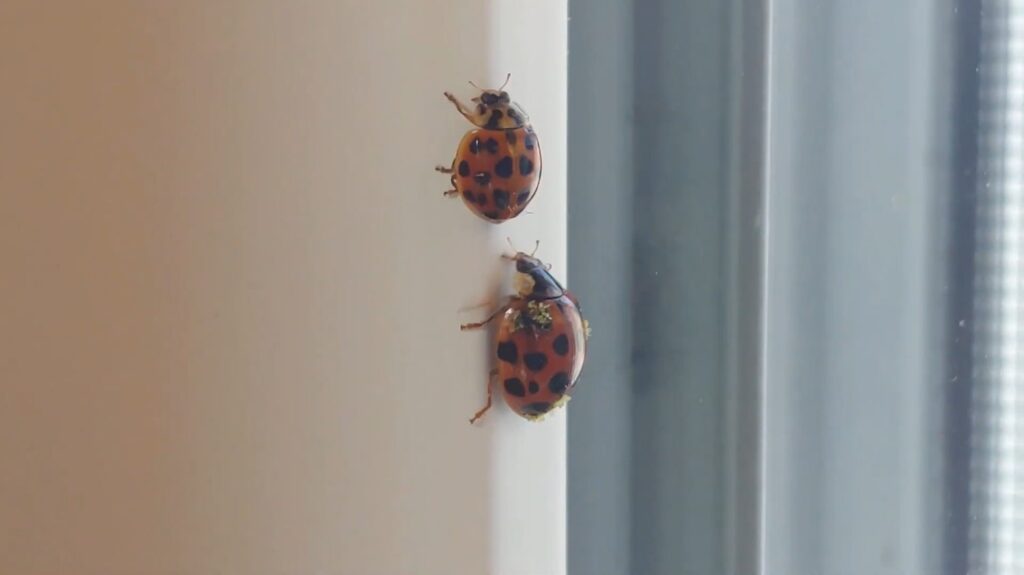
The Asian lady beetle, also known as the harlequin ladybird or multicolored Asian ladybird, is a captivating insect native to eastern Asia. While often mistaken for the ladybug, a beneficial predator in many gardens, the Asian lady beetle can be a bit of a villain. Despite its attractive red or orange shell with black spots, this small beetle can become a nuisance when large populations invade homes in search of shelter during the winter.
However, their true impact lies in their role as invasive predators. They voraciously consume aphids and other garden pests, but their aggressive feeding habits can disrupt the delicate balance of ecosystems and threaten native ladybird populations. The introduction of the Asian lady beetle, one of the animals that start with A, serves as a cautionary tale about the unintended consequences of introducing non-native species for pest control.
Asian Longhorn Beetle
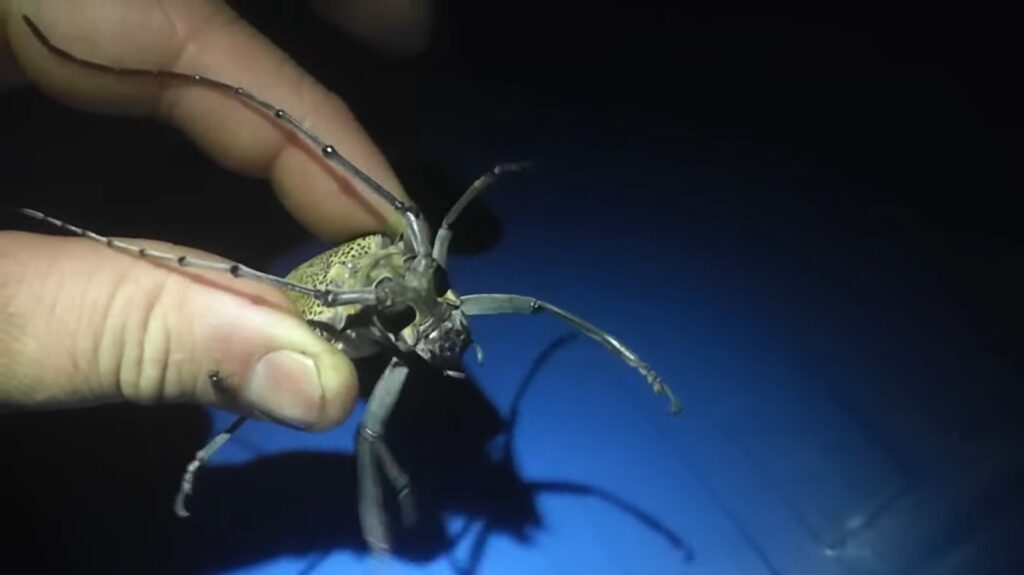
The Asian Longhorn Beetle, a destructive invasive species native to Asia, poses a significant threat to hardwood trees in North America and Europe. Easily identified by its jet-black body adorned with white spots and antennae exceeding twice its body length, this unwelcome guest disrupts ecosystems by laying eggs within the crevices of trees. These eggs hatch within weeks, unleashing ravenous larvae that burrow deep within the tree, feeding for several years before emerging as adults and perpetuating the cycle of destruction. The Asian Longhorn Beetle’s presence necessitates strict control measures to safeguard the health of our precious urban and forest ecosystems.
Asian Palm Civet
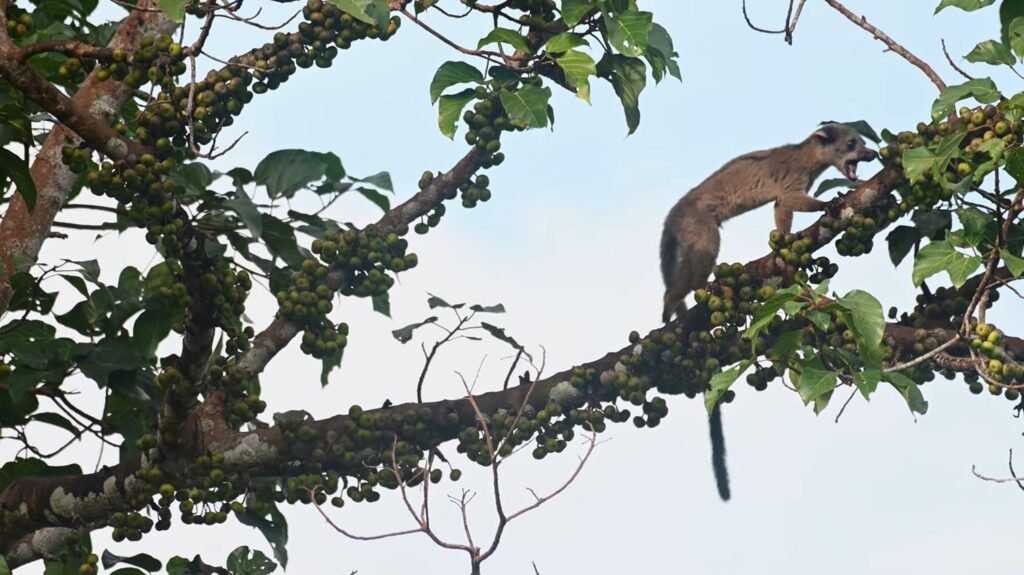
The Asian Palm Civet, a captivating resident of Southeast Asia and southern China, is a mammal often mistaken for a cat due to its facial markings. Despite the nickname “toddy cat,” civets are not felines but rather viverrids, a unique family related to mongooses and hyenas. These furry creatures boast long, slender bodies and sport a coat of various colors, including brown, tan, gray, white, yellow, or black. Their most distinctive feature is the raccoon-like facial banding that can extend to the muzzle, adding to their endearing appearance.
Asian Palm Civets, one of the animals that start with A, are primarily nocturnal omnivores, feasting on a diet of fruits, insects, and small animals. Interestingly, their fondness for palm flower sap has led to their role in the production of Kopi Luwak, a highly prized and expensive coffee. However, the methods used to obtain these beans can be cruel, and ethical considerations are paramount when enjoying this unique coffee.
Asian Vine Snake
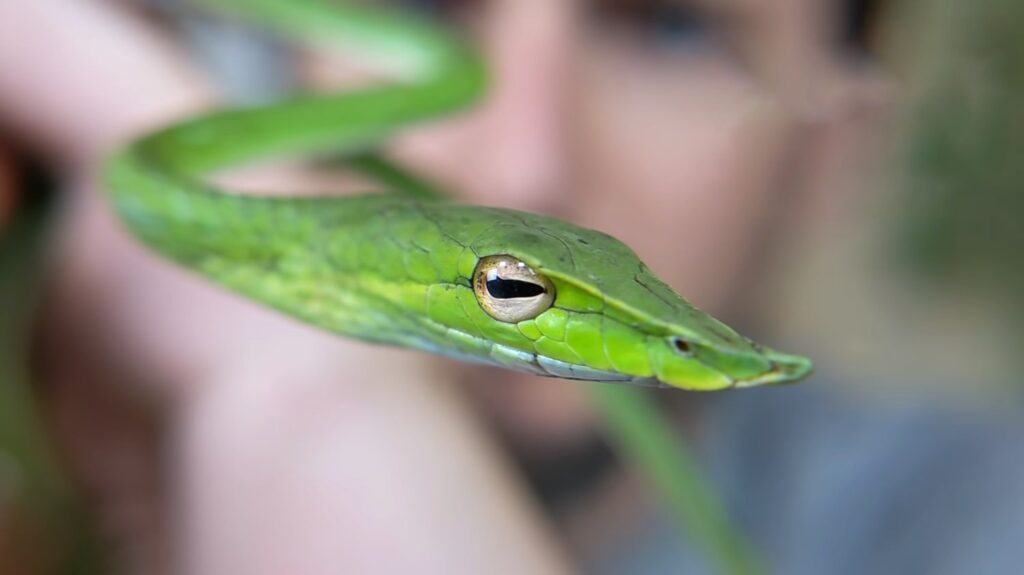
The Asian Vine Snake, a resident of Southeast Asian forests, is as captivating as it is mildly venomous. While their venom can subdue small prey, it poses no serious threat to humans. This slender snake, reaching lengths of up to six feet, perfectly blends in with its arboreal environment thanks to its green or brown body and a yellow or orange underside. They are ambush predators, lying in wait on branches before striking with lightning speed to snatch unsuspecting lizards, frogs, and small mammals.
Despite their efficient hunting skills, Asian Vine Snakes, one of the animals that start with A, are not all aggression – they are sometimes kept as exotic pets due to their docile temperament and relatively low-maintenance needs in captivity. However, responsible pet ownership is crucial, as these snakes still retain their wild instincts.
Asian Water Monitor
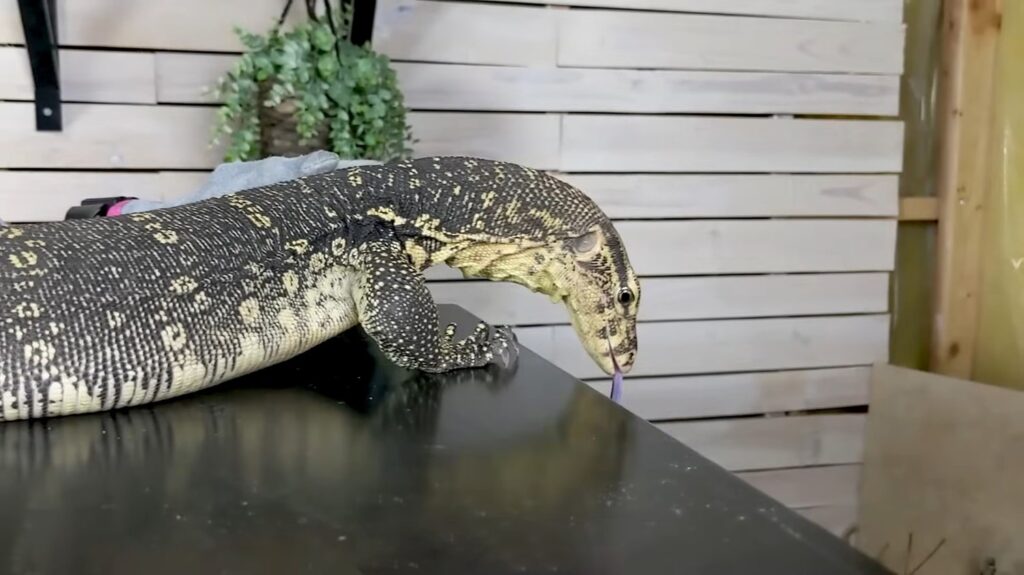
The giant lizard of Asia, the Asian Water Monitor, is the second-biggest lizard in the world, after the Komodo Dragon. They can grow up to two meters long and have strong bodies and long tails. Their dark, sometimes black, skin might have yellow spots. These water monitors love hanging out in and around water, with long necks and snouts perfect for peeking out while swimming.
They eat all sorts of things they find in the water or on land, like fish, bugs, crabs, and even small birds and furry animals. But these cool lizards are losing their homes and sometimes get taken illegally as pets. Scientists are working to protect them so they can keep being a part of Asia’s wildlife.
Asiatic Black Bear
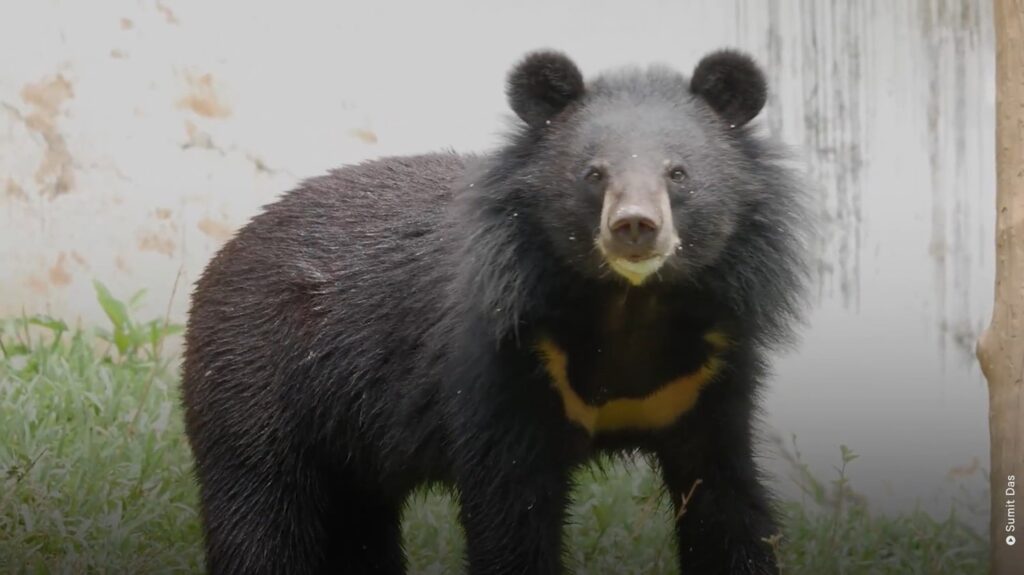
The Asiatic Black Bear, a close relative of the American Black Bear, inhabits the deciduous forests of mountainous regions across Asia. Despite their imposing size, these medium-to-large bears are known for their omnivorous diet, feasting on a diverse range of fruits, nuts, berries, insects, and even small mammals and carrion. A distinctive V-shaped white marking on their chest has earned them the nickname “Moon Bear.”
Unlike their grizzly cousins, Asiatic Black Bears, one of the animals that start with A, are not typically aggressive towards humans, and solitary behavior is the norm. Sadly, these fascinating creatures face threats from habitat loss due to human encroachment and poaching for their body parts used in traditional medicine. Conservation efforts are crucial to ensure the continued survival of the Asiatic Black Bear and the ecological balance within their forest homes.
Asp
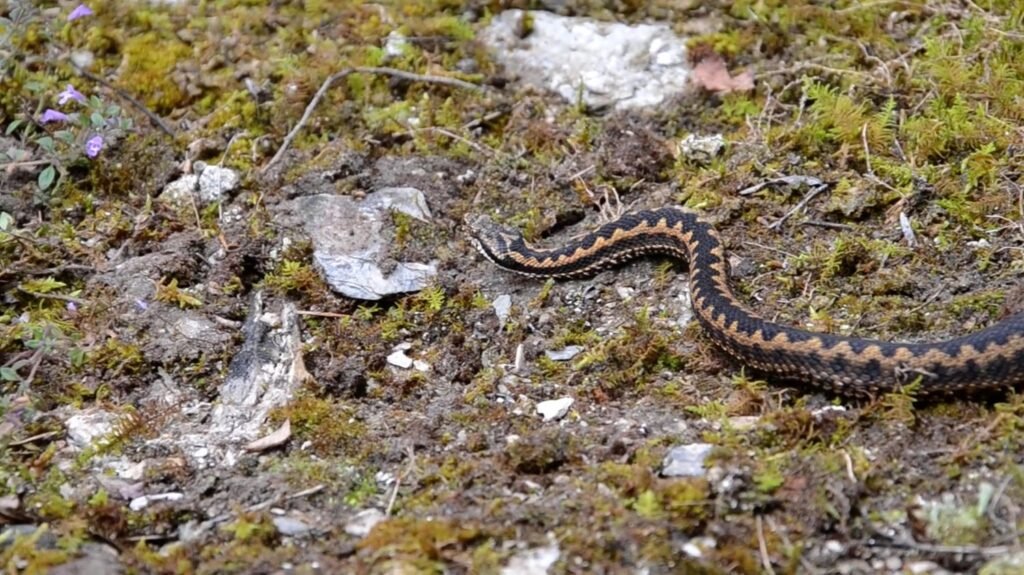
The asp, a slender yet powerful snake found in Europe and North Africa, is a viper species known for its distinctive lethality. Their venom, primarily targeting the nervous system, can be fatal if left untreated. Despite their reputation, asps are not inherently aggressive and will typically avoid confrontation with humans. They are ambush predators, relying on camouflage and a single, lightning-fast strike to subdue prey like rodents, lizards, and birds. Habitat loss and persecution due to fear are major threats to asp populations.
Asp Caterpillar
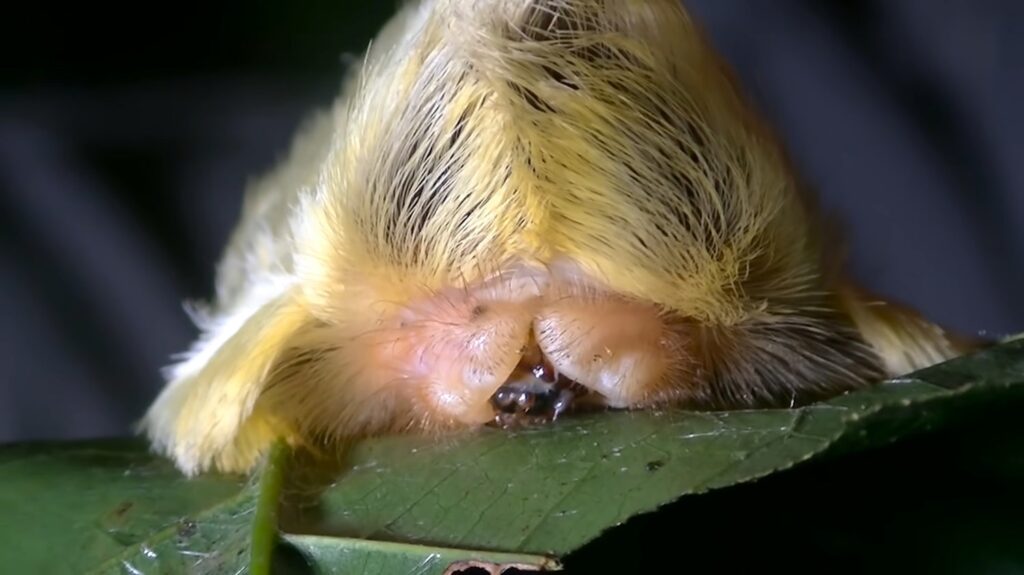
The Asp Caterpillar, a rather common sight in North America, is a type of caterpillar known for its venomous surprise. While they primarily feed on leaves of trees and shrubs, these solitary foragers pack a punch with their venomous spines. When threatened, the Asp Caterpillar curls up defensively, showcasing these spines that can cause skin irritation and, in rare cases, more severe allergic reactions. Despite the potential sting, these caterpillars are not a major threat – they are more interested in munching on leaves than menacing humans.
Assassin Bug
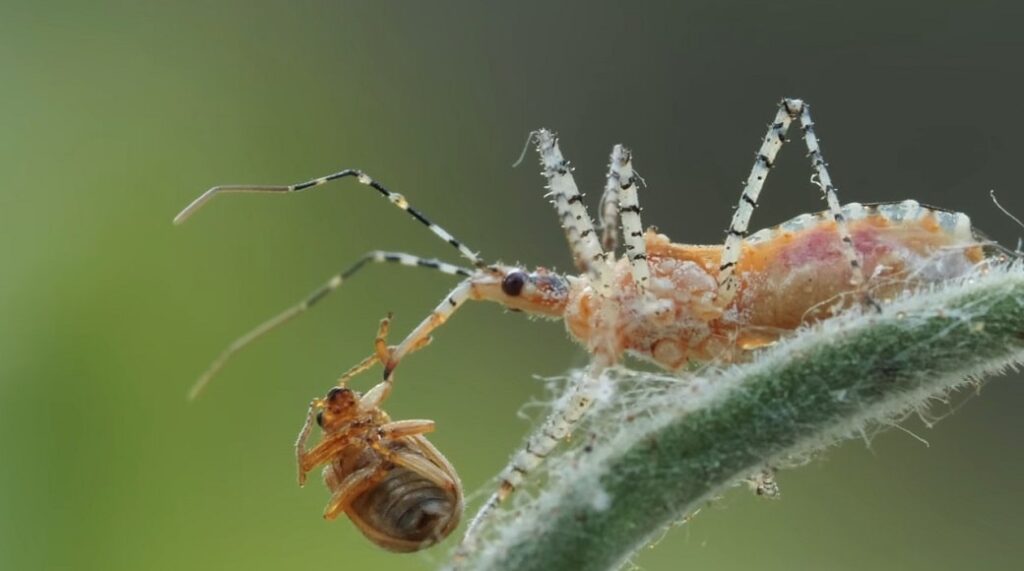
The Assassin Bug, aptly named for its predatory prowess, inhabits a wide range of habitats across the globe. Don’t be fooled by its relatively small size – this insect packs a mean punch. The assassin bug utilizes a sharp, piercing beak to inject its prey, typically other insects and even spiders, with a lethal cocktail of digestive enzymes. The liquefied insides of the unfortunate victim are then slurped up by the assassin bug, earning it the nickname “kissing bug” in some regions.
While their primary targets are beneficial insects, assassin bugs, one of the animals that start with A, can occasionally bite humans, causing a localized area of pain, itching, and swelling. However, these bites are rarely serious. Despite the unsettling feeding habits, assassin bugs play a valuable role in controlling pest insect populations.
Assassin Snail
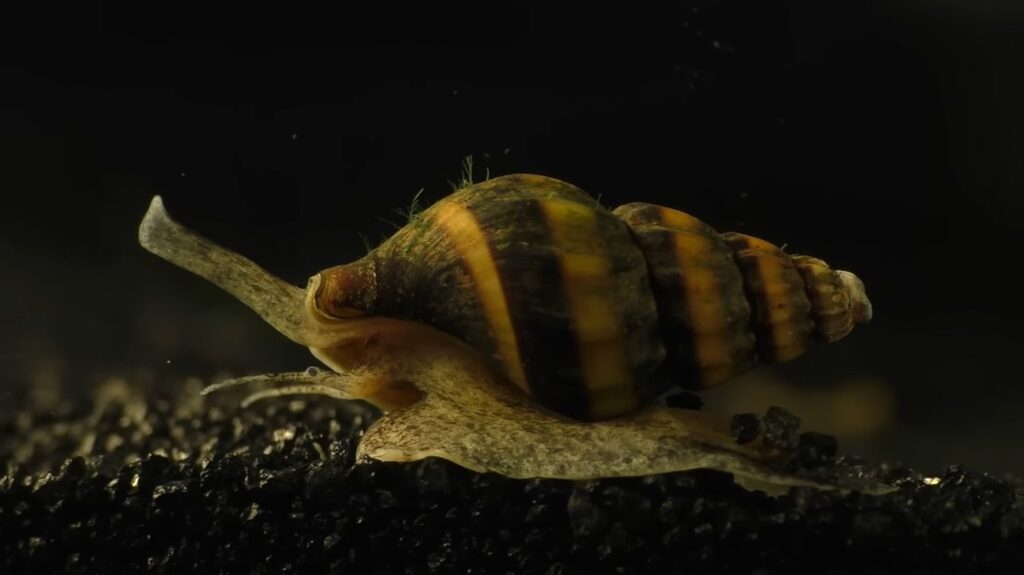
The Assassin Snail, a tiny titan in the world of gastropods, lives up to its name by preying on other, often larger, snail species. These miniature mollusks, native to tropical freshwater environments, boast conical shells with alternating dark brown and yellow stripes, resembling a bumblebee. While not all Assassin Snails share this coloration, it serves as a potential warning to their unsuspecting prey.
Assassin Snails, one of the animals that start with A, hunt with a specialized foot that secretes a paralyzing mucus, subduing their victim before using a rasping tongue to drill a hole in the shell and devour the unfortunate snail within. Despite their predatory nature, Assassin Snails can also be beneficial in aquariums, helping to control populations of pest snails. However, keeping them requires a sufficient food source and tank size to ensure the well-being of all inhabitants.
Atlantic Cod
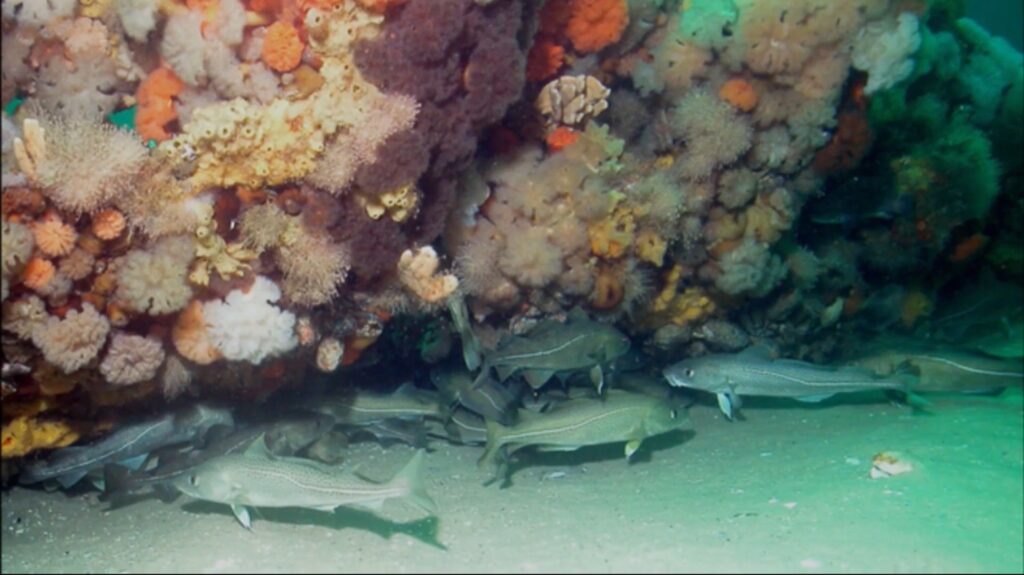
The Atlantic Cod, a commercially important fish native to the cold waters of the North Atlantic Ocean, is a popular seafood choice with a mild flavor and lean, flaky flesh. They are prized by both recreational and commercial fishers, with catches regulated to ensure sustainable populations. These fish are easily identifiable by their elongated bodies, greenish-brown backs, and white undersides.
Atlantic Cod are social creatures, often forming large schools as they migrate in search of food. Their diet primarily consists of smaller fish, crustaceans, and worms, which they actively hunt using their keen vision and sharp teeth. Sadly, overfishing and habitat degradation have threatened Atlantic Cod populations in the past, highlighting the importance of responsible fishing practices and conservation efforts to ensure this valuable fish remains a staple of the marine ecosystem and our dinner plates.
Atlantic Salmon
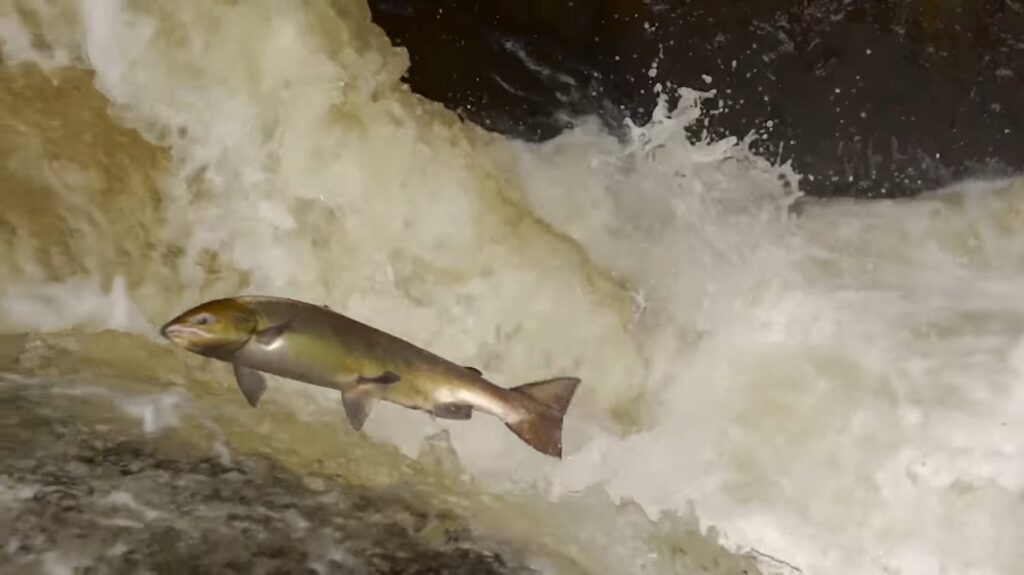
The Atlantic salmon, a captivating fish with a remarkable life cycle, graces the cold waters of the North Atlantic Ocean. Born in freshwater streams and rivers, these salmon spend their juvenile years feasting on insects and small fish. As they mature, a physical transformation prepares them for the open ocean – their bodies become more streamlined and silver in color. This is when they embark on an epic journey, swimming vast distances back to the very rivers where they hatched to reproduce.
Atlantic salmon, one of the animals that start with A, are prized game fish for anglers due to their powerful fights, while also holding significant commercial value. However, overfishing, habitat destruction from dams, and pollution threaten these fascinating creatures. Conservation efforts are crucial to ensure the Atlantic salmon, one of the animals that start with A, continues its awe-inspiring migration and thrives within its native ecosystems.
Atlantic Sturgeon
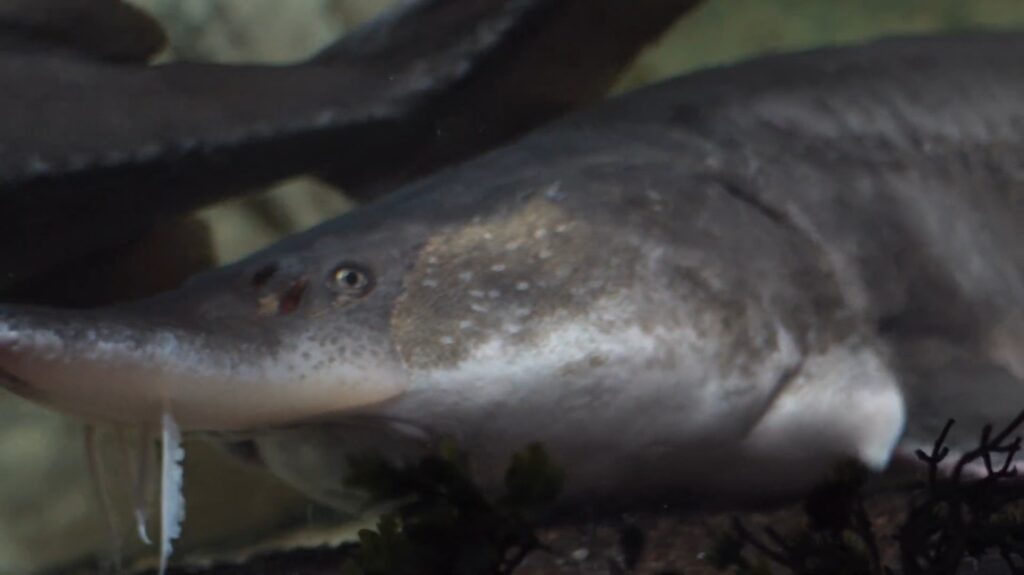
The Atlantic Sturgeon, a living fossil with a prehistoric pedigree, reigns supreme as one of the largest fish in North American waters. These giants, boasting an impressive lifespan that can reach up to 100 years, possess an armor-like row of bony plates instead of scales. Their elongated bodies, reaching lengths of up to 14 feet, are a sight to behold. Atlantic Sturgeon are migratory fish, spending their adult lives in the ocean before embarking on long journeys back to their natal rivers to spawn.
Their diet is primarily composed of benthic invertebrates like worms and crustaceans, which they locate using specialized barbels near their mouths. Sadly, overfishing and habitat degradation have pushed Atlantic Sturgeon populations to the brink. Conservation efforts, including stricter fishing regulations and habitat restoration projects, are crucial to ensure the survival of this ancient fish and its continued presence in North American waters.
Atlas Beetle
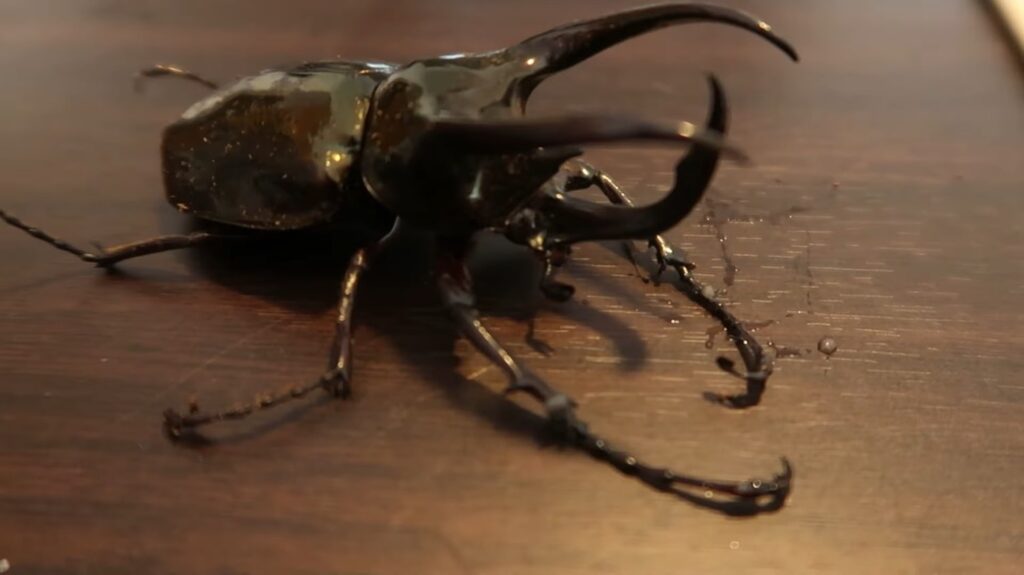
The Atlas Beetle, a true champion of the insect world, boasts a remarkable combination of size and strength. Hailing from Southeast Asia, these titans of the beetle kingdom are instantly recognizable by their pronounced horns. Exclusively found on males, these horns can be enormously large, exceeding the length of the beetle’s body itself. This impressive feature is not just for show – males use their horns in battles for dominance and territory.
Despite their formidable appearance, Atlas Beetles, one of the animals that start with A, are primarily herbivores, feasting on leaves and decaying plant matter. They are also surprisingly strong, capable of lifting objects many times their own weight. The larvae of these beetles, however, are less peaceful and can deliver a painful bite if threatened. The Atlas Beetle’s impressive size and strength make it a popular choice for insect collectors, but it’s important to remember that these fascinating creatures are also vital decomposers within their rainforest ecosystems.
Atlas Moth

The Atlas moth, a resident of Southeast Asia, holds the title of the world’s second-largest moth, boasting a wingspan reaching up to an impressive 10 inches. Despite their grand size, adult Atlas moths are short-lived, surviving only on fat reserves accumulated during their caterpillar stage and forgoing the need to eat entirely. Their lifespans are measured in mere days, ranging from 7 to 14.
Atlas moth caterpillars, on the other hand, are quite the opposite – green with brown specks, they can grow up to 4.5 inches long and focus on consuming large quantities of food in preparation for their transformation. Female Atlas moths are prolific egg-layers, depositing up to 300 eggs at a time, ensuring the continuation of this fascinating species.
Aurochs
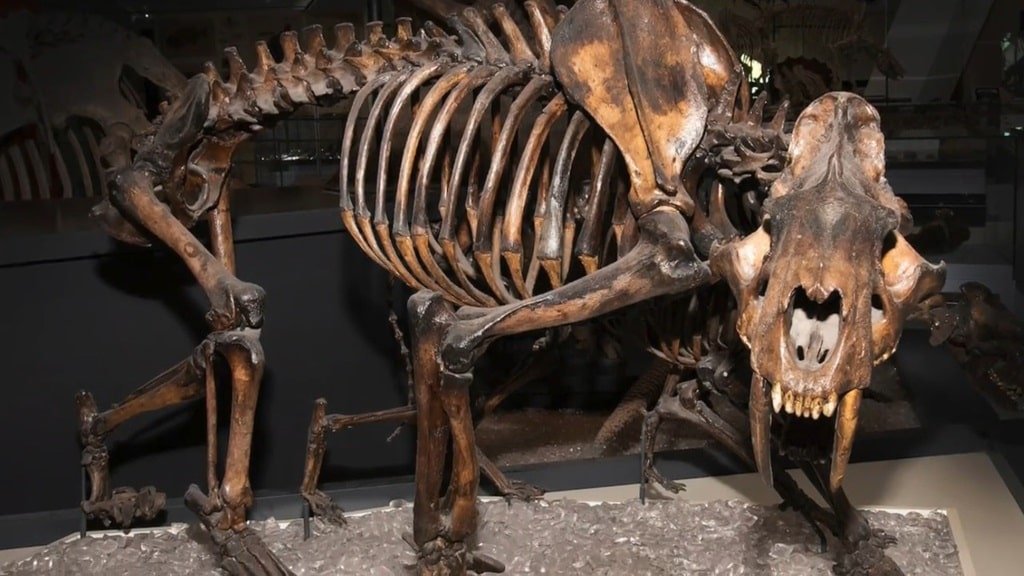
The aurochs, an extinct ancestor of all domesticated cattle, were once massive wild bovines that roamed Europe, Asia, and North Africa. These impressive creatures resembled oversized cattle with long legs, broad horns, and a stature that commanded respect. They lived in herds and feasted on grasses, twigs, and acorns.
Sadly, a combination of hunting, habitat loss, and disease from domesticated cattle led to their extinction in the 17th century. However, the story of the aurochs may not be over entirely. Scientists are currently exploring the possibility of bringing them back to life through selective breeding of cattle and potentially even using preserved DNA.
Aussiedoodle

The Aussiedoodle, a delightful hybrid between the Australian Shepherd and Poodle, is renowned for its intelligence, energy, and affectionate nature. This medium-sized breed typically weighs between 25 to 75 pounds and comes in a variety of colors including red, blue, black, tan, and multi-colored. Aussiedoodles are hypoallergenic, shedding minimally and making them suitable for families with allergies. They thrive on human interaction and require regular exercise and mental stimulation.
Early socialization and consistent training are essential due to their high intelligence and potential herding instincts. Their playful and loyal disposition makes them excellent companions for active families. Regular grooming is necessary to maintain their soft, curly coat and prevent matting. Despite their robust health, Aussiedoodles can be prone to certain genetic conditions, so regular veterinary check-ups are recommended. With proper care, Aussiedoodles, one of the animals that start with A, can live between 10 to 13 years, bringing joy and activity to their families throughout their lives.
Aussiedor

The Aussiedor is a hybrid breed resulting from the cross between the Australian Shepherd and the Labrador Retriever. Known for its intelligence, energy, and friendly disposition, the Aussiedor is an excellent companion for active families. They typically weigh between 40 to 80 pounds and come in various colors including black, brown, and gold. This breed excels in both obedience and agility, making them great for activities like hiking and running.
Aussiedors, one of the animals that start with A, require regular grooming due to their heavy shedding and need consistent training and exercise to manage their high energy levels. They are prone to separation anxiety and need ample interaction with their families. With proper care, Aussiedors can live up to 12 years, enjoying a healthy and active life.
Aussiepom

The Aussiepom is a charming hybrid breed resulting from the cross between an Australian Shepherd and a Pomeranian. Known for its intelligence, energy, and affectionate nature, the Aussiepom makes an excellent companion for active families. This small to medium-sized breed typically weighs between 8 to 30 pounds and boasts a fluffy, high-maintenance coat that comes in various colors, including brown, red, blue, black, white, and multi-colored. Aussiepoms are social, playful, and tend to bark frequently, often displaying herding instincts inherited from their Australian Shepherd parent.
They require regular grooming and consistent training to manage their stubbornness and high energy levels. Due to their intelligence, they excel in obedience and agility training but need firm and patient handling. Aussiepoms, one of the animals that start with A, thrive in environments where they receive ample attention and exercise, making them ideal for families with older children and those who can dedicate time to their care and training.
Australian Bulldog

The Australian Bulldog, developed in the 1990s in Queensland, is a crossbreed of the English Bulldog and Australian pig hunting dogs. Known for their loyalty, intelligence, and friendly nature, these dogs make excellent family pets. They typically weigh between 50 to 78 pounds and require minimal exercise, making them suitable for moderate activity households. Regular grooming is essential due to their short, smooth coat. Australian Bulldogs, one of the animals that start with A, are generally healthier than their English counterparts but can still be prone to issues like hip dysplasia and diabetes. With proper care, they can live up to 12 years.
Australian Cattle Dog

The Australian Cattle Dog, also known as a Blue Heeler or Red Heeler, is a robust and energetic breed renowned for its intelligence and herding abilities. Developed in the 19th century by crossing Blue Merle Collies with Dingoes, they excel in managing livestock under harsh Australian conditions. These medium-sized dogs typically weigh up to 45 pounds and are distinguished by their short, dense coats that come in blue or red speckled patterns.
Highly trainable and loyal, Australian Cattle Dogs, one of the animals that start with A, require substantial exercise and mental stimulation, making them suitable for active families and working environments. They have a lifespan of 13 to 15 years and are generally healthy, though they can be prone to hip dysplasia and progressive retinal atrophy.
Australian Cockroach
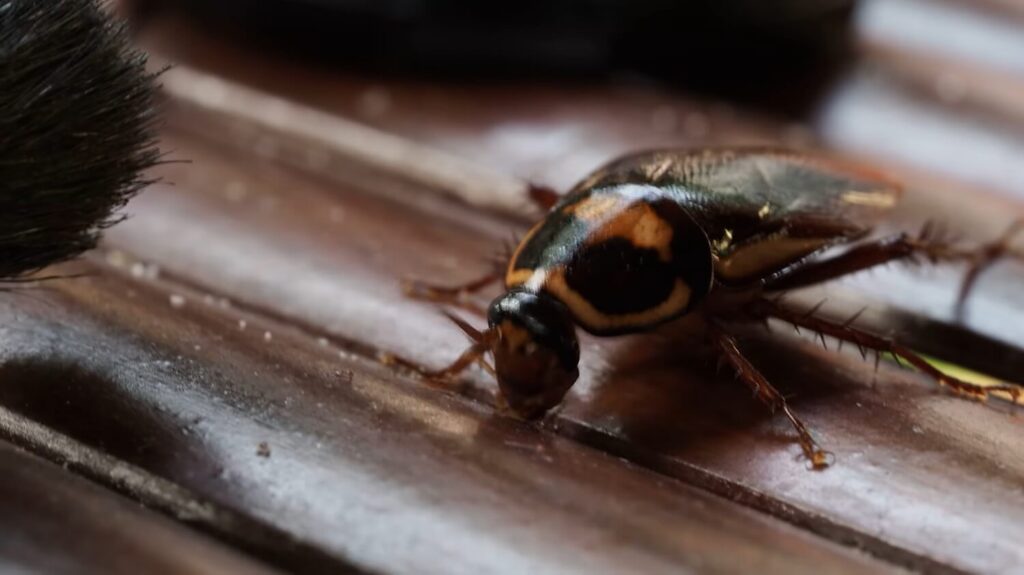
The Australian cockroach (Periplaneta australasiae) is a large, reddish-brown insect native to Africa, now found in warmer regions worldwide, including North America and Australia. These cockroaches, often mistaken for American cockroaches, are notable for their yellow markings on the thorax.
Preferring outdoor environments, they thrive in warm, humid conditions and are commonly found in gardens, leaf litter, and mulch. They are adept flyers and omnivores, feeding on decaying plant matter and various organic materials. Although not a significant indoor pest, they can occasionally invade homes during cold weather.
Australian Firehawk
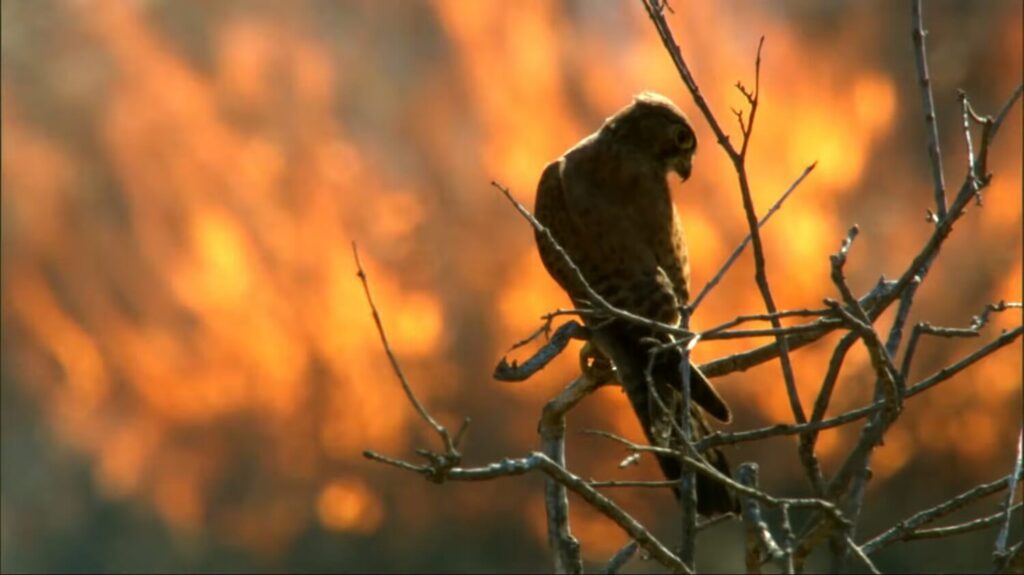
The Australian firehawk, encompassing species like the Black Kite, Whistling Kite, and Brown Falcon, is renowned for its unique behavior of spreading fires. These birds, found across Australia and Papua New Guinea, pick up burning sticks to start new fires, flushing out prey from hiding spots. They thrive in diverse habitats, including grasslands, savannas, and wetlands. Despite being listed as “Least Concern” by the IUCN, they face threats from human persecution, pollution, and car strikes. Australian firehawks, one of the animals that start with A, exhibit high intelligence, adapting their environment to enhance hunting success.
Australian Flathead Perch
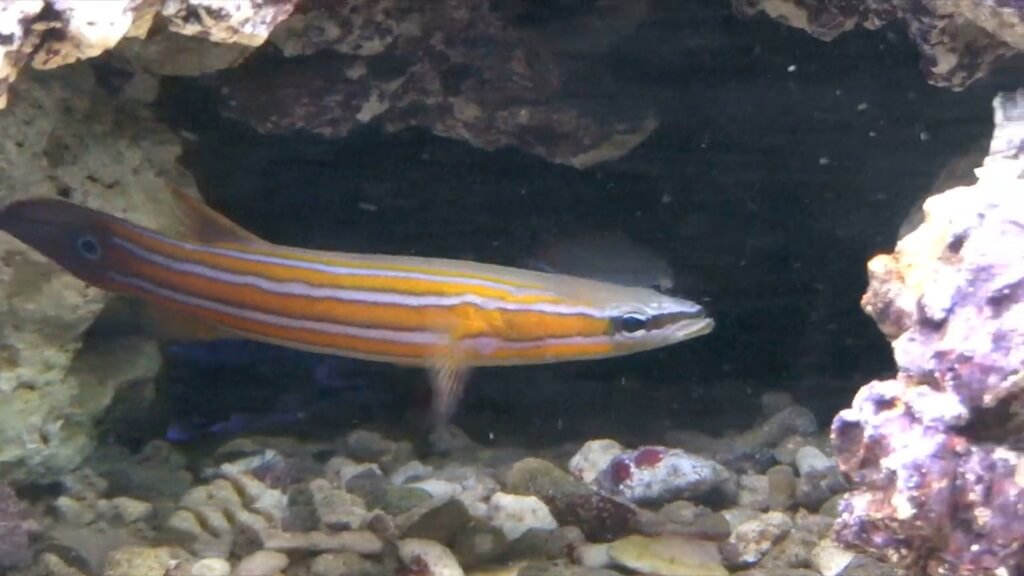
The Australian flathead perch (Rainfordia opercularis) is a small, rare fish native to northern Australia’s coral reefs. Known for its striking appearance, this fish features a dark orange body with white or lavender horizontal stripes and a flattened, triangular head. Typically growing up to 6 inches, it is highly sought after in the aquarium trade, often fetching prices between $1,000 and $5,000. The species thrives in rocky coral reefs and is reclusive by nature, making population estimates challenging. It is listed as “Least Concern” by the IUCN.
Australian Gecko
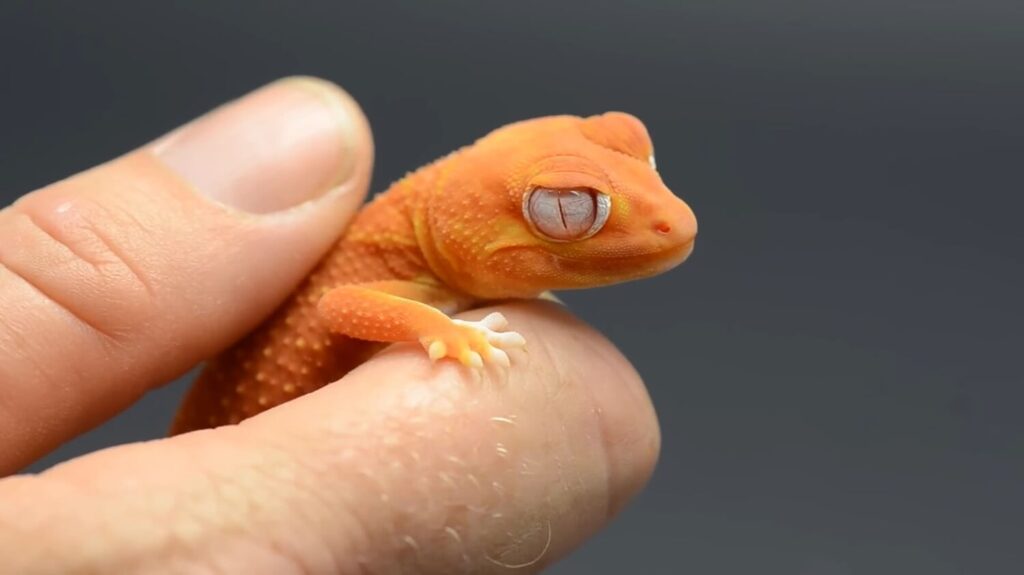
The Australian gecko is a highly adaptable and common lizard found throughout Australia, inhabiting diverse environments like forests, deserts, and urban areas. These small reptiles, ranging from 0.64 to 6 inches in length, are distinguished by their large eyes, vertical pupils, and the absence of eyelids, which they keep clean by licking. Notable for their climbing ability, Australian geckos, one of the animals that start with A, possess toe pads with millions of tiny structures allowing them to cling to surfaces, including glass. They are primarily insectivores but also consume other small invertebrates, nectar, and fruit.
Australian Kelpie Dog

The Australian Kelpie, one of the animals that start with A, is a highly intelligent and energetic herding dog, originally bred in the 19th century to manage large flocks of sheep in Australia’s challenging climate. Known for their endurance, Kelpies can travel over 30 miles in a single day. They are medium-sized dogs, weighing between 25-45 pounds, with a variety of coat colors. Kelpies are excellent working dogs but also require significant mental and physical stimulation to prevent destructive behavior. They are generally healthy with a lifespan of 10-13 years but can be prone to conditions like hip dysplasia and progressive retinal atrophy.
Australian Labradoodle

The Australian Labradoodle, one of the animals that start with A, is a designer breed, originally developed in the 1980s to create a hypoallergenic guide dog. This breed, a mix of Labrador Retriever, Poodle, and Cocker Spaniel, among others, is known for its friendly and intelligent nature, making it an excellent family pet and service animal. Australian Labradoodles come in three sizes: Mini, Medium, and Standard, and have a lifespan of 13-16 years. They require regular grooming due to their low-shedding, wavy, or curly coat, and are highly trainable but prone to separation anxiety.
Australian Mist
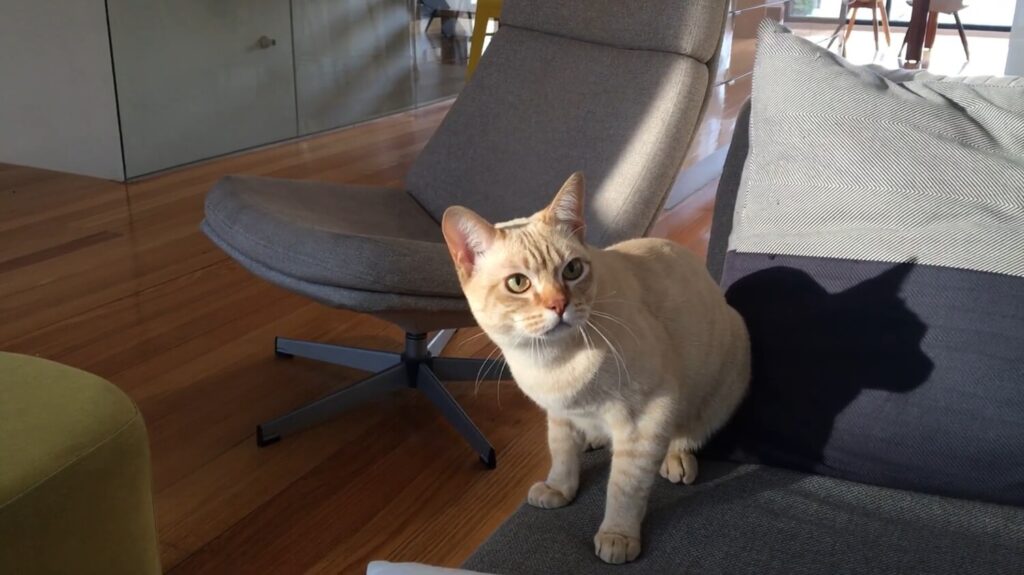
The Australian Mist, a breed developed in the 1970s in Australia, is known for its affectionate and gentle temperament, making it an ideal indoor pet. Created by crossing Burmese, Abyssinian, and domestic shorthair cats, this medium-sized breed weighs between 8-15 pounds and typically lives 15-18 years. The Australian Mist, one of the animals that start with A, has a distinctive coat pattern in colors such as brown, blue, chocolate, lilac, caramel, gold, and peach. They are sociable and thrive in family environments, enjoying human interaction and adapting well to indoor life. Their health is generally robust, requiring standard care and attention.
Australian Retriever

The Australian Retriever is a hybrid dog breed resulting from the cross between an Australian Shepherd and a Golden Retriever. This breed, known for its intelligence, energy, and friendly nature, makes an excellent family companion. Australian Retrievers typically weigh between 30 to 60 pounds, with males being slightly larger than females.
They have a lifespan of 12 to 15 years and come in various coat colors, including black, brown, brindle, merle, blonde, and gold. Their coat can be wavy or straight and requires regular grooming to manage shedding. These dogs are highly trainable and excel in obedience and agility due to their parent breeds’ working backgrounds.
The Australian Retriever thrives in active households, needing ample exercise and mental stimulation to prevent boredom and destructive behavior. They are prone to separation anxiety if left alone for long periods. Common health issues include eye disorders, joint problems, bloating, epilepsy, skin conditions, and hip dysplasia.
Australian Shepherd

The Australian Shepherd, commonly known as the “Aussie,” is a highly intelligent, energetic herding dog originally developed in the United States, despite its name. Weighing 40-65 pounds, this medium-sized breed is known for its beautiful, thick double coat, which comes in various colors, including blue merle, red merle, black, and red.
Aussies, one of the animals that start with A, are renowned for their trainability and excel in obedience, agility, and herding trials. They require substantial physical exercise and mental stimulation, making them ideal for active families. With a lifespan of 12-15 years, they can be prone to genetic health issues such as hip dysplasia and eye disorders. Their loyal, friendly, and protective nature makes them excellent companions, but they need consistent training and socialization.
Australian Shepherd Mix
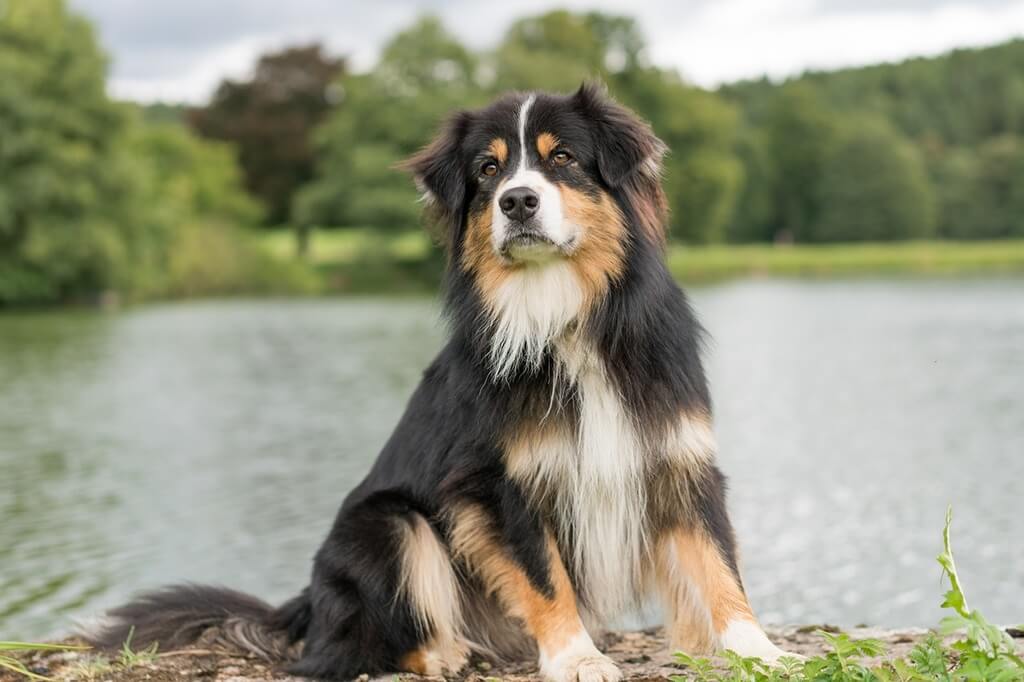
The Australian Shepherd Mix is a versatile hybrid breed resulting from the crossbreeding of an Australian Shepherd with various other breeds. These mixes inherit the intelligence, energy, and herding instincts of the Australian Shepherd, making them highly trainable and excellent working dogs. They typically weigh between 50 to 60 pounds and can stand 23 to 50 inches tall. The coat can vary depending on the other parent breed but generally requires regular grooming due to shedding.
Common health issues include hip dysplasia, eye disorders, and autoimmune thyroiditis. These dogs need significant exercise and mental stimulation, thriving in active households. They are known for their loyalty and can be protective, making early socialization and training crucial.
Australian Terrier

The Australian Terrier, originating from Tasmania in the early 19th century, is a mix of several terrier breeds including Cairn, Yorkshire, Skye, Irish, and Dandie Dinmont terriers. Known for their spirited, alert, and courageous nature, these small yet sturdy dogs weigh between 15-20 pounds and stand about 10-11 inches tall. They have a harsh coat with silky hair, are hypoallergenic, and require minimal grooming.
Australian Terriers, one of the animals that start with A, are excellent watchdogs and are friendly, affectionate, and full of energy. They are prone to health issues like skin allergies, diabetes, and digestive problems but are generally considered very healthy. Regular exercise and training are essential to keep them happy and well-behaved.
Australopithecus
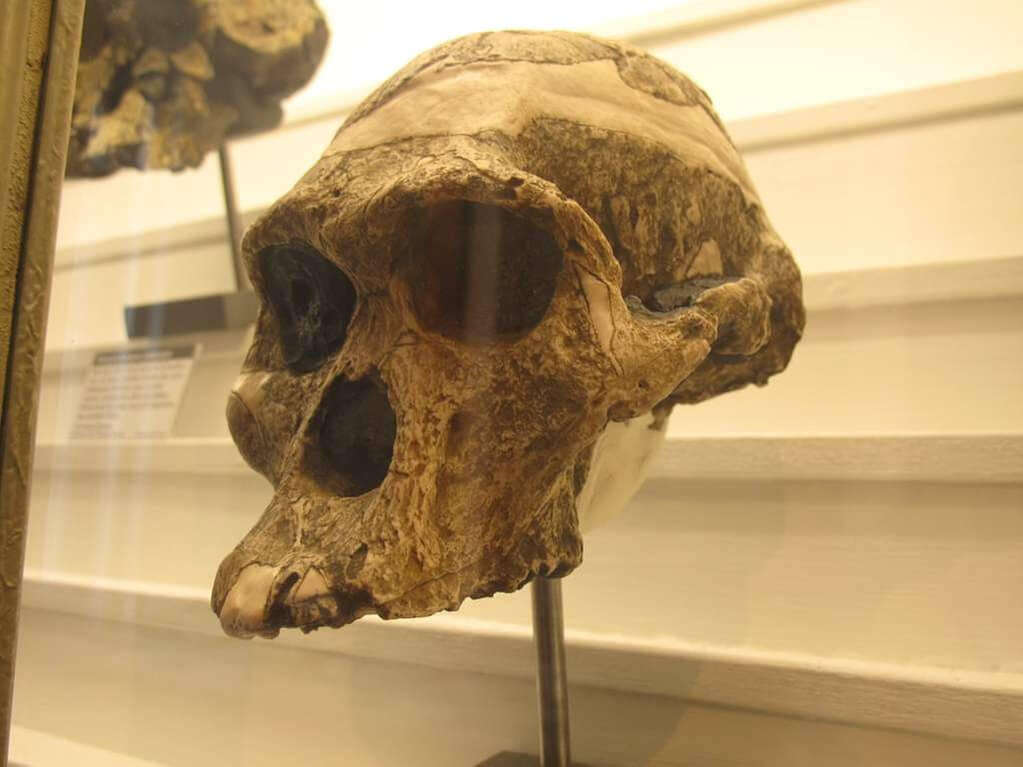
The Australopithecus, a genus of ancient primates, lived around 4.4 million to 1.4 million years ago and is believed to be a close relative of modern humans. These bipedal creatures, known for their ability to walk upright, displayed a mix of human-like and ape-like characteristics. Australopithecus had a flat nose, strong jaw, small canine teeth, long arms, and a small braincase. They thrived in grasslands and woodlands of Eastern and Southern Africa, consuming a primarily plant-based diet. Fossils, such as the famous “Lucy,” provide crucial insights into human evolution.
Australorp Chicken
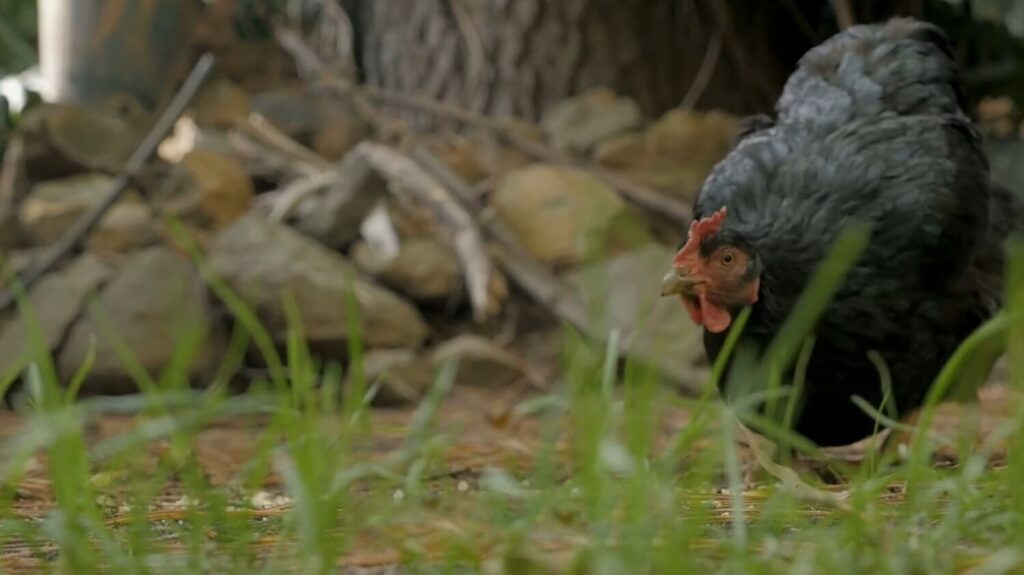
The Australorp chicken, developed in Australia from Black Orpington chickens, is renowned for its exceptional egg-laying capabilities. Known for setting world records in the 1920s, one Australorp hen laid 364 eggs in 365 days. These medium to large birds, weighing 6.5 to 8.5 pounds, have a calm and friendly demeanor, making them ideal for backyard flocks.
Their black plumage with a greenish sheen is the most recognized color, although blue and white varieties exist. Australorps, one of the animals that start with A, require a high-protein diet to support their prolific egg production, averaging 250 to 300 eggs annually. They are hardy birds with a lifespan of 6 to 10 years.
Avocet
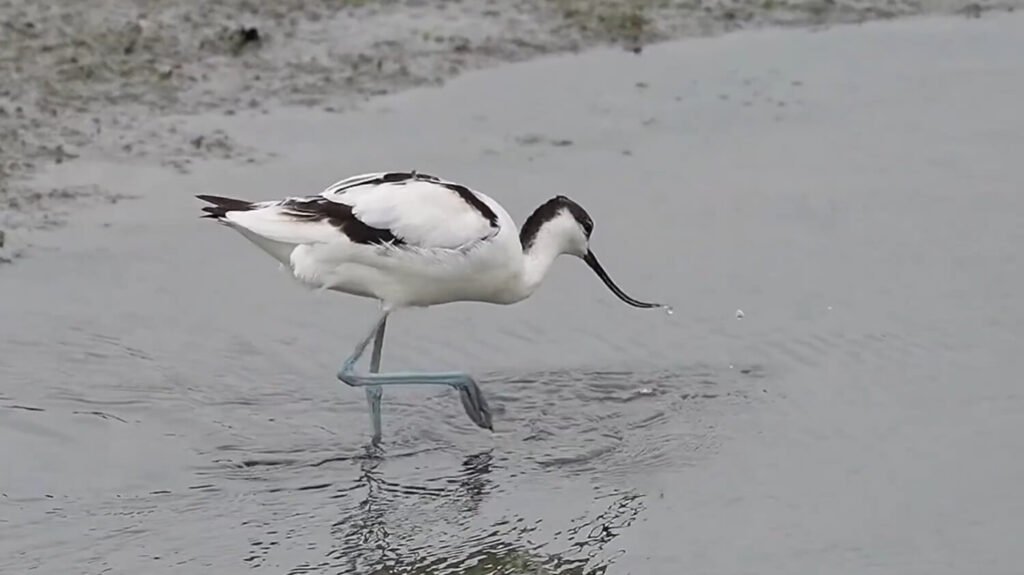
The avocet, a distinctive wading bird, is recognized for its long legs and unique upward-curving bill. It inhabits wetlands across the globe, often seen in shallow waters where it forages for insects, crustaceans, and small fish by sweeping its bill side to side. With striking black and white plumage, avocets, one of the animals that start with A, are social birds that nest in colonies, displaying aggressive territorial behavior. They play a crucial role in wetland ecosystems and are currently classified as “Least Concern” by the IUCN, indicating a stable population.
Axanthic Ball Python
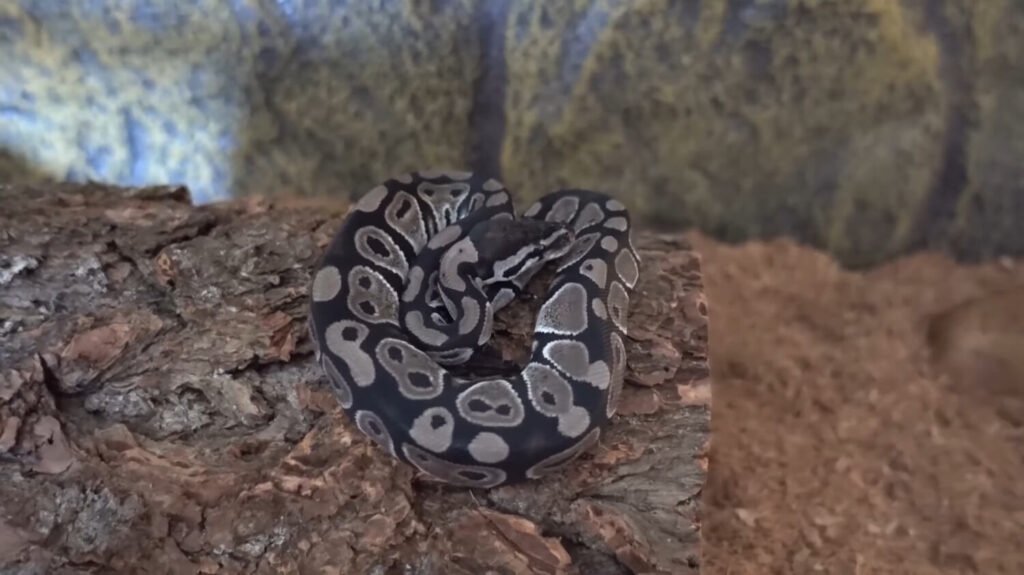
The Axanthic Ball Python, a morph of the common ball python, lacks yellow pigment due to a recessive genetic mutation, resulting in a unique color palette of gray, silver, white, brown, and black. First produced in captivity in 1997, these snakes are highly valued in the pet trade for their striking appearance. Native to Sub-Saharan Africa, they thrive in grasslands and savannas. Axanthic Ball Pythons are non-venomous and have a docile temperament, making them popular pets. They require regular feeding and a controlled environment to mimic their natural habitat.
Axolotl
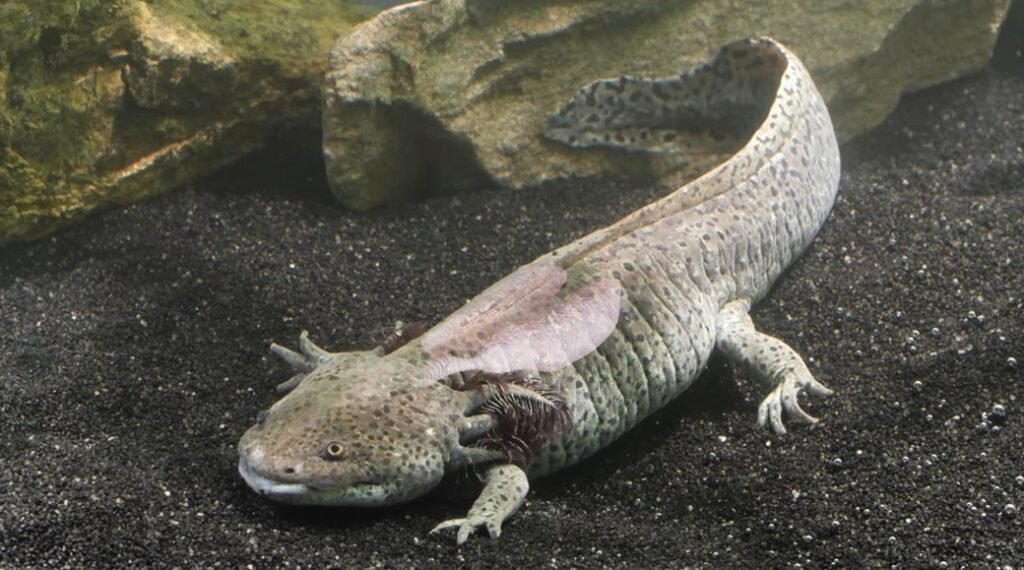
The axolotl (Ambystoma mexicanum), often called the Mexican walking fish, is a unique amphibian native to Mexico, specifically Lake Xochimilco. Unlike other salamanders, axolotls exhibit neoteny, retaining their juvenile features, such as gills, throughout their lives. They can regenerate almost any body part, including limbs, spine, and even parts of the brain. Axolotls, one of the animals that start with A, are solitary and prefer aquatic environments. They are critically endangered in the wild due to habitat destruction and pollution but are popular in captivity and research. They typically live up to 15 years in the wild and up to 25 years in captivity. Curious for more? Read the full article here!
Ayam Cemani
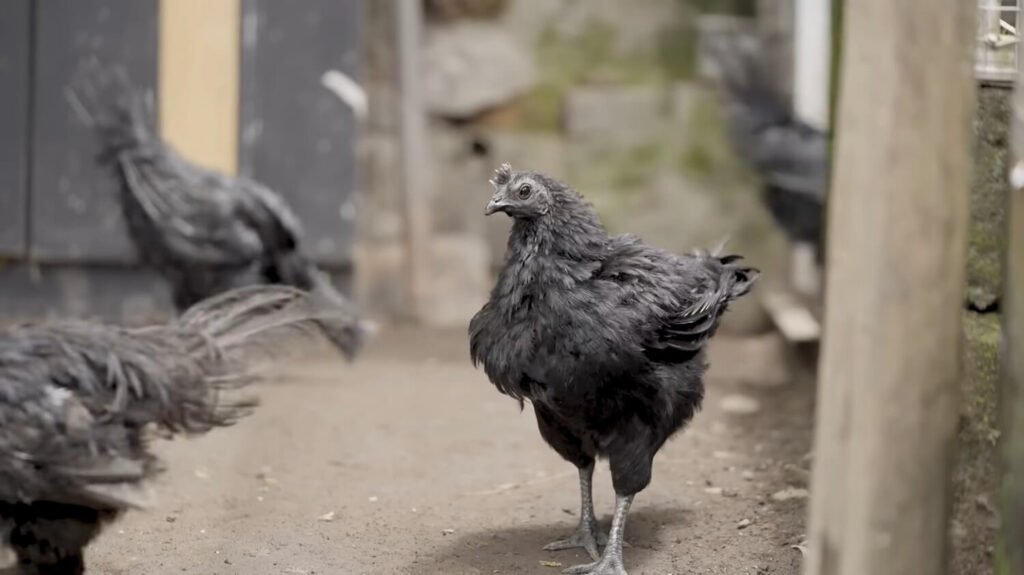
The Ayam Cemani is an exceptionally rare chicken breed native to Java, Indonesia, noted for its striking all-black appearance due to hyperpigmentation. This unique coloration extends to its feathers, skin, beak, comb, wattles, and even internal organs and bones. Weighing between 3.3 to 5.5 pounds, these birds are hardy, intelligent, and fast. They are not prolific egg layers, producing 60 to 100 pinkish-cream eggs annually. The breed, one of the animals that start with A, is valued for its exotic looks and is often associated with wealth and status in its native country.
Aye-aye
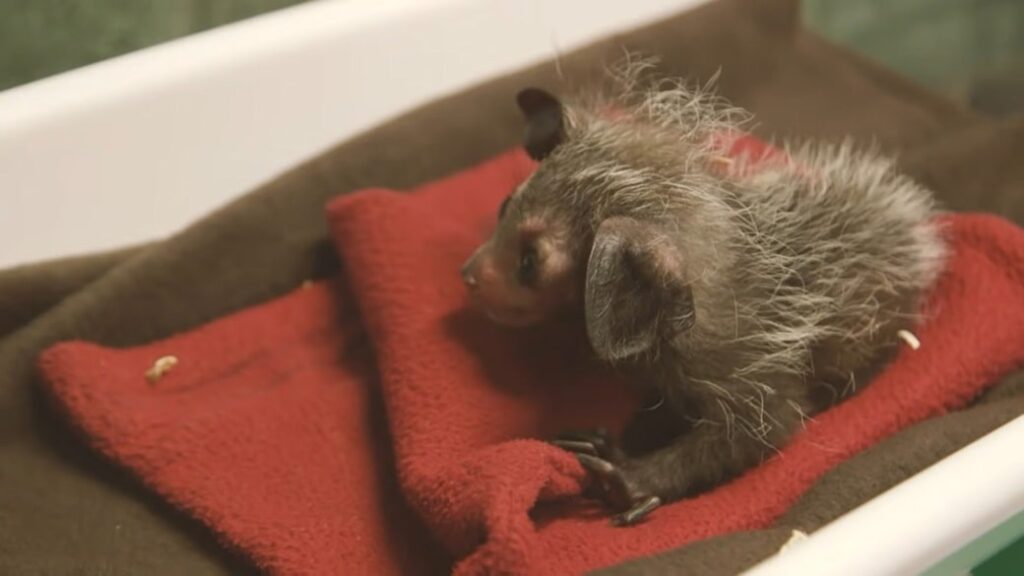
The aye-aye (Daubentonia madagascariensis) is a unique nocturnal primate found in Madagascar’s rainforests. Known for its large eyes, sensitive ears, and elongated middle finger, the aye-aye uses these adaptations to tap on wood and extract insects, filling an ecological niche similar to woodpeckers. Weighing 4-6 pounds, they are solitary and primarily arboreal, building nests in trees. Listed as endangered due to habitat loss and local superstitions, their population is estimated at 1,000-10,000. Conservation efforts focus on habitat preservation and reducing hunting pressures.
Azawakh
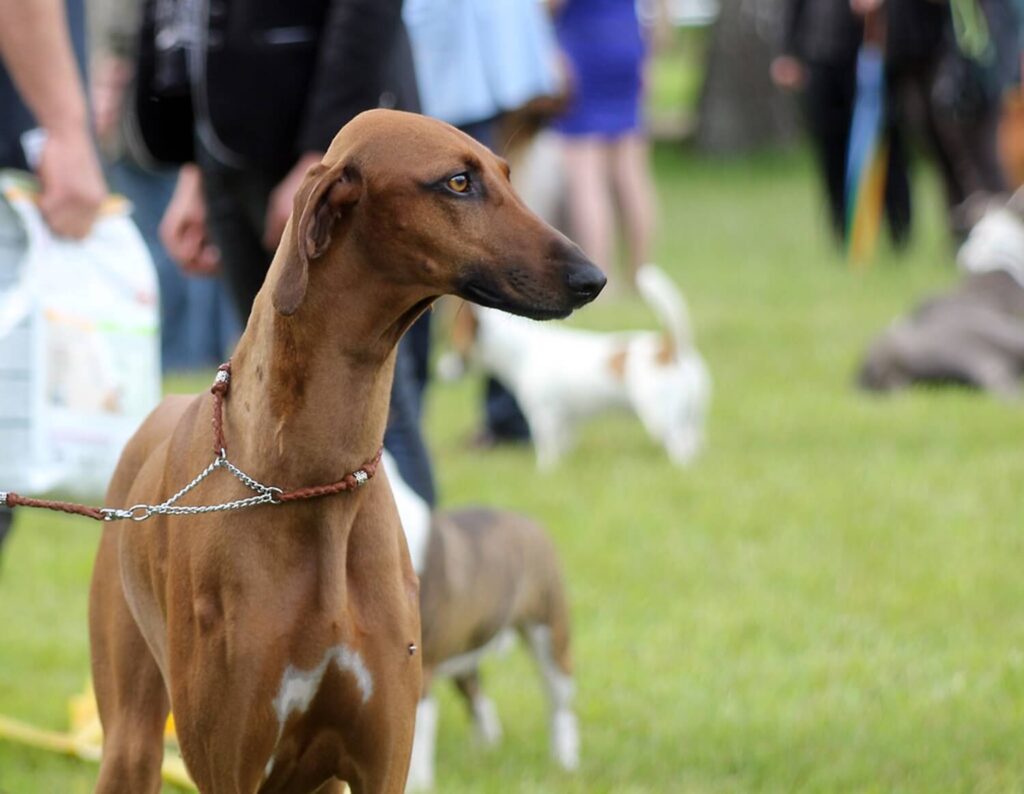
The Azawakh is a tall, slender sighthound from the Sahel region of Africa, bred by the nomadic Tuareg people for hunting and guarding. Known for their speed and endurance, they can run up to 40 mph. Azawakhs, one of the animals starting with A, are intelligent, independent, and cat-like in temperament, often shy around strangers. They require significant exercise and are best suited for experienced dog owners. Their short coat needs minimal grooming, but they should be monitored for health issues like hypothyroidism and cardiac problems. Azawakhs typically weigh between 33-55 pounds and live 12-15 years.
In a nutshell, this comprehensive exploration of animals that start with A highlights the diversity and uniqueness of the animal kingdom. Each entry in this animals list showcases different adaptations, roles, and habitats, emphasizing the incredible variety found in nature. By examining this list of animals, we gain a greater appreciation for biodiversity and the importance of conservation efforts. Understanding and protecting these remarkable creatures is essential for maintaining the health and balance of our ecosystems.